
Our full collection of travel blog posts. Our Departure Board is where we (Andrew and Damon) provide useful travel advice and reviews on hotels, experiences, theme parks, food, transportation and more.

The Ultimate Guide To The Museum of Brands, London
Damon and I were kindly invited to visit The Museum of Brands (a.k.a the Museum of Brands, Packaging and Advertising) in Notting Hill during our recent London trip. The museum, which focuses on the history of consumer culture in the UK, opened its doors in 1984 and now holds a collection of over 12,000 items.
We’ll be answering all of your questions about the museum in this comprehensive FAQ guide, before commenting on our own experience.
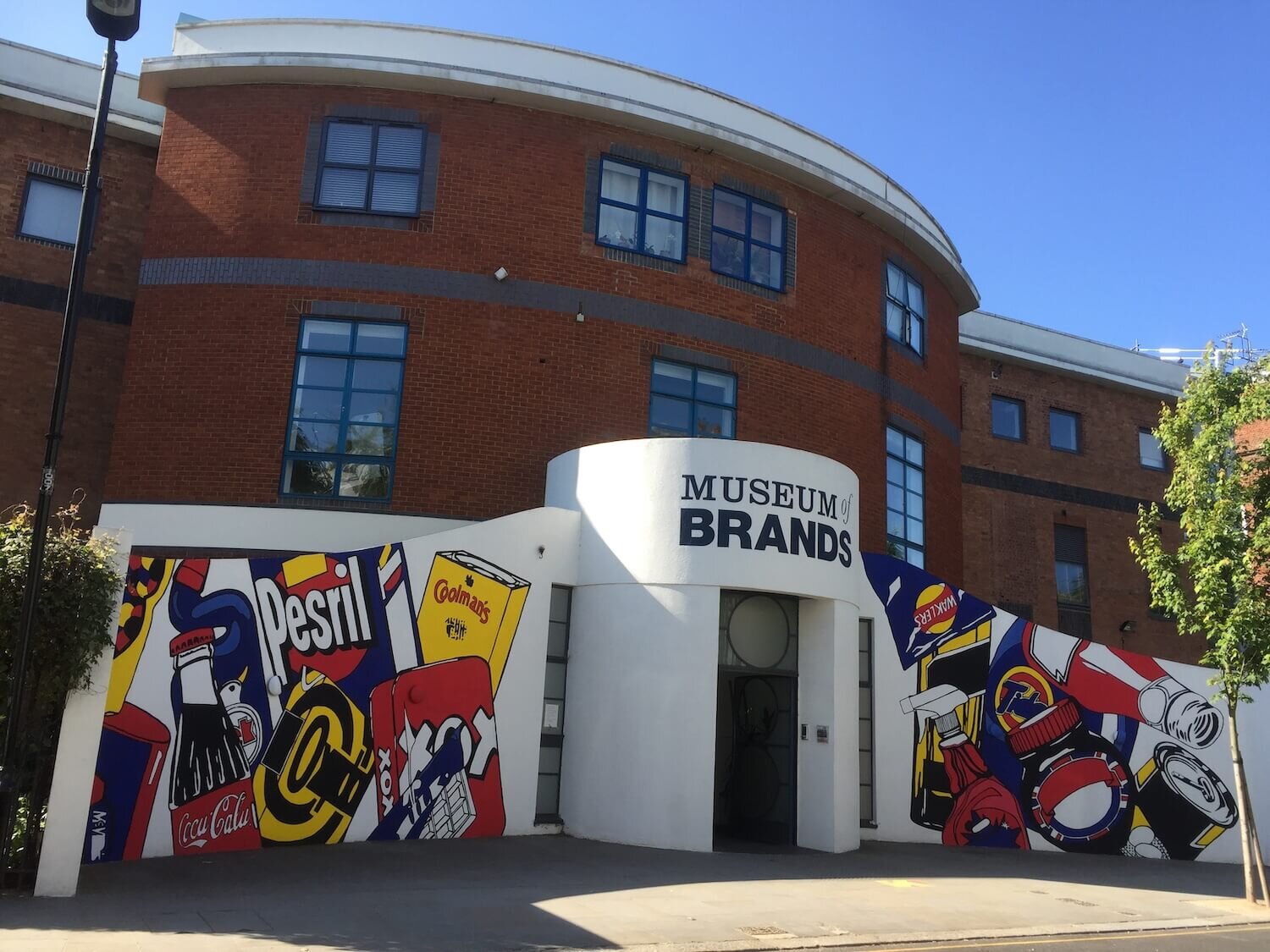
- Getting There
Opening Times
Ticket prices.
- Brief History of The Museum
- The Time Tunnel
Cafe, Gardens and Gift Shop
Getting to the museum of brands.
If you’re trying to get anywhere in London, we’d recommend downloading and using the Citymapper app .
The Museum of Brands is located on Lancaster Road in Notting Hill, London (Post Code: W11 1QT).
Nearest Tube Station
Ladbroke Grove is the nearest tube station to the Museum of Brands. The station is in Zone 2 and is served by both the Circle and Hammersmith & City underground lines. From there, it’s only a 3 minute walk to the museum on Lancaster Road.
London Buses
A number of buses stop at the Ladbroke Grove station, which is only a couple of minutes walk away from the museum. These include bus numbers 7, 23, 52, 70, 228 and 452.
Be aware that Uber has had issues with its London license so check that it’s operating as normal during your trip.
Currently, you can pick up an UberX, Uber XL, Pool, Exec, Lux, Assist and Access to get to the museum.
If you’ve never used UBER before, use our code: andrewy2730ue or sign up here to get a discount on your first journey.
The museum’s opening hours are as follows:
Monday To Saturday: 10:00-18:00
Sundays and Bank Holidays: 11:00-17:00
Last entry is 45 minutes before closing time and the museum is also closed on Christmas Eve, Christmas Day, Boxing Day and New Years Day.
The museum of brands does have an entrance fee with tickets costing:
Children (8 and Over): £5
Under 7s: Free
Concessions £7
Family: £24
Annual Ticket £17
You can get a digital (Email) ticket or you can get your tickets posted out to you via Royal Mail. Alternatively, if you’re considering booking other attractions or experiences for your London trip, we’d suggest booking all of your tickets through Viator (a TripAdvisor company) so they’re all in one place.
London Pass
One other option you can consider, especially if you’re planning on visiting a number of London’s top sights, is to get a London Pass . This is effectively a multi-experience pass which gives you access to over 80 attractions across London, with the ultimate aim of saving you money over purchasing a lot of individual entrance tickets.
The London Pass includes access to the Tower of London, View from the Shard, Westminster Abbey, St Paul’d Cathedral, Kensington Palace and more. Plus, you get a Hop-on Hop-off 24 hour Bus Tour as well as a Thames River Boat Cruise.
Brief History Of The Museum
The museum’s collection, which now boasts over 12,000 items, is the personal collection of Robert Opie, a consumer historian and author who has collected contemporary packing since his teenage years. Opie opened his first exhibition, The Pack Age, at the V&A museum, London in 1975 and 9 years later, the first iteration of the Museum opened in Gloucester.
The Museum became a registered charity in 2002 and, in 2005, the collection was moved to a larger home in Notting Hill. This was made possible due to sponsorship from large consumer brands including Cadbury, Diageo, Kellogg’s, McVities, Twinings and Vodafone.
Another relocation was required due to the ever-growing size of the collection and so, in 2015, the Museum moved to its current premises on Lancaster Road.
Our Experience - The Time Tunnel
Instead of just being a plethora of randomised historic collectables, the museum is chronologically organised by year, creating a walk through of consumer history. Items date from the Victorian Period all the way through to today.
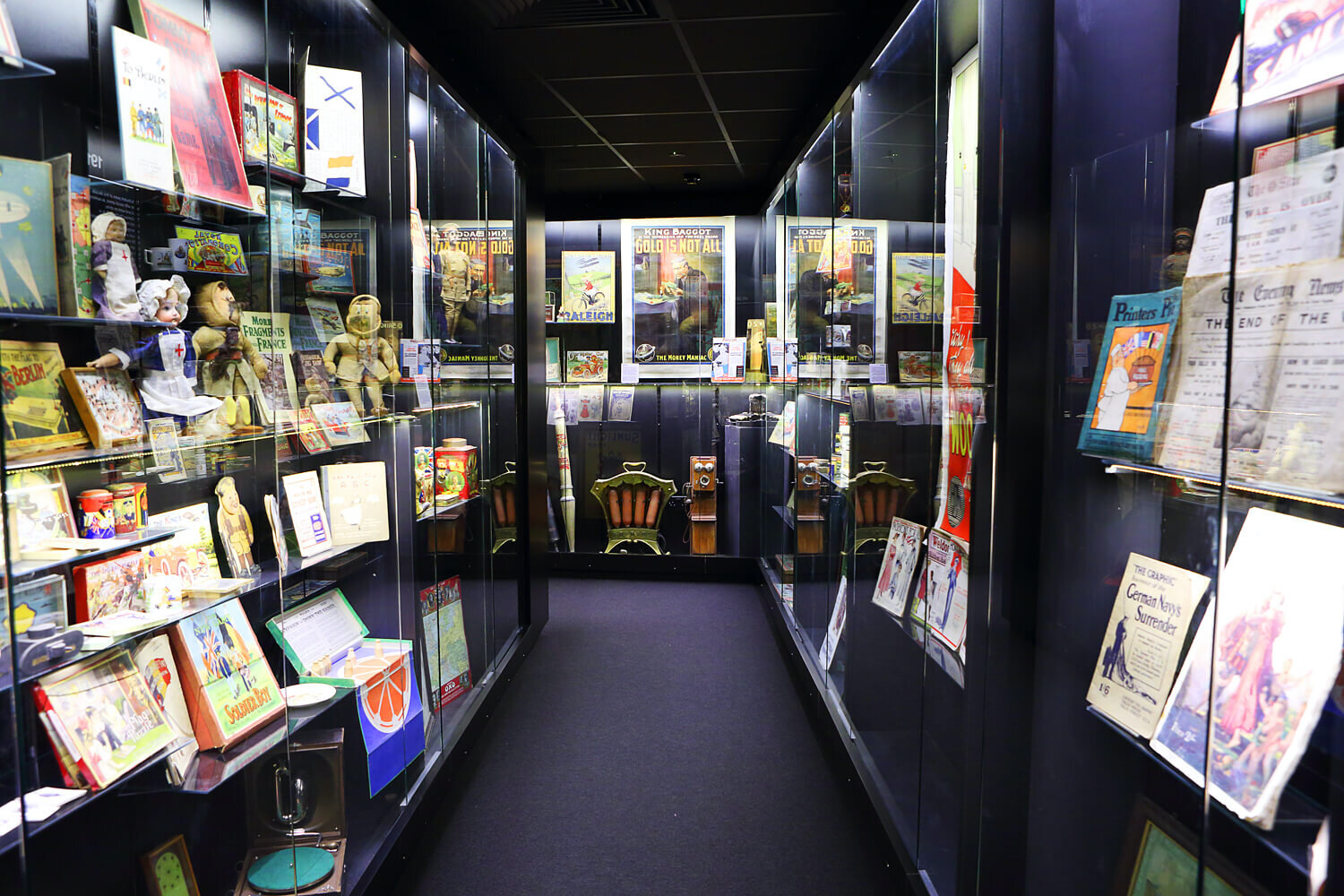
There was a greater range of items than I expected from food packets and toys to magazines and electronics. And at some point, you will experience that feeling of nostalgia, whether you’re 18 or 80.
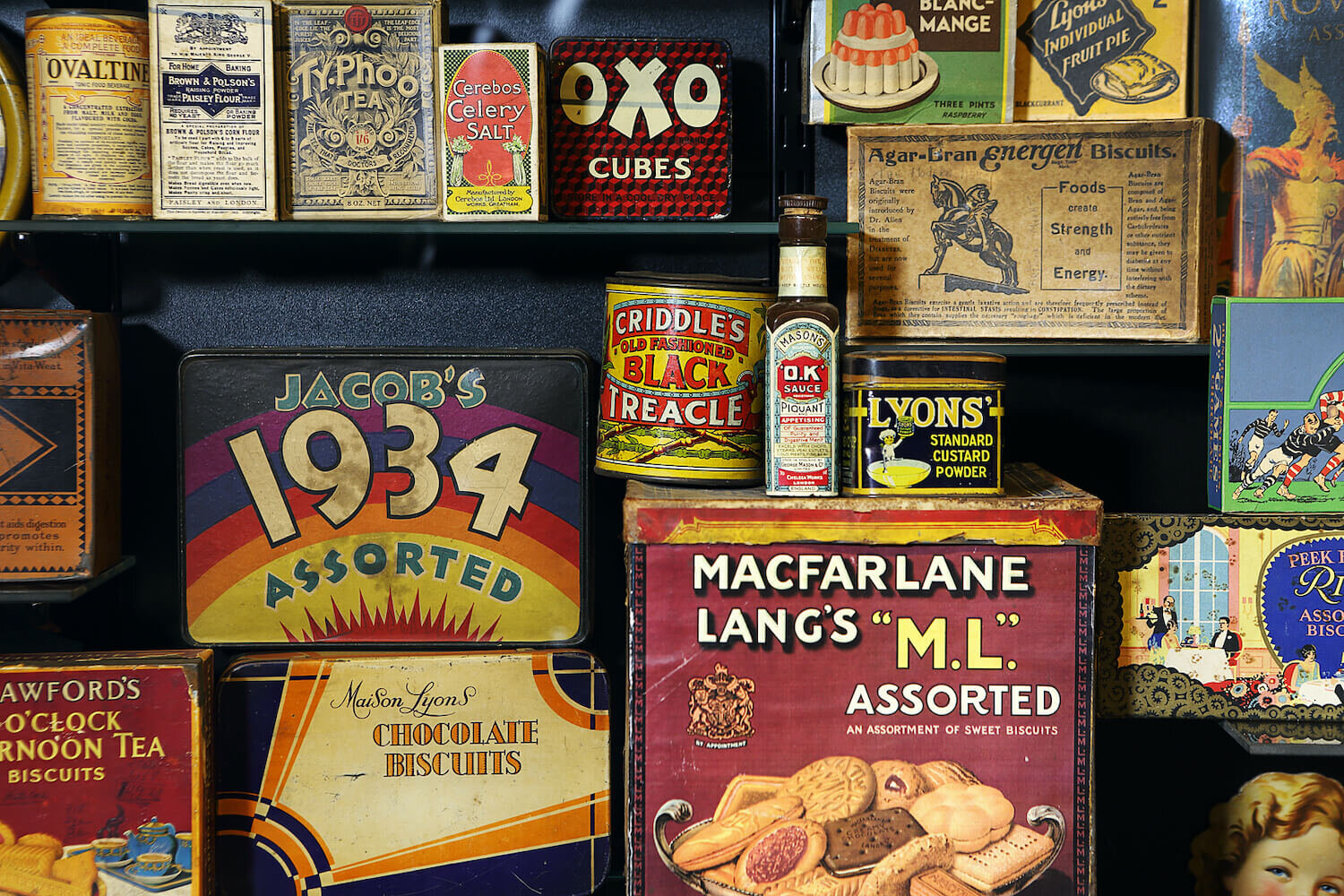
I have no doubt that everyone will connect with something different during their visit, whether it’s a magazine cover from the 90s or a collection of Star Wars toys released for the original films.

The exit to the time tunnel brings you out into the Museums cafe. There’s also a garden area with seating for when the weather is pleasant. The cafe is quite small but it offered everything you would expect. A range of hot and cold drinks, sandwiches and cakes.
One interesting feature on the cafe wall was an exhibit on eco-friendly packaging. Ideas developed by a range of companies were all on display. This could offer an interesting idea for expansion. Whilst the current collection deals with the past and the present, another section could display packaging concepts of the future.
Conclusion And Scoring
Overall, we really enjoyed our visit to the Museum of Brands. The large collection of items on display, neatly presented, offers good value for money. The museum is well connected by London’s excellent public transport system. But it is slightly out of the way in Western London so you should take into account travel time if you’re planning other activities for the day.
In terms of suggestions for improvement, we think an audio guide would be a nice addition to the experience. In addition, an expansion of the eco-friendly/future packaging display would be fascinating to see.

Thank you to Museum of Brands for inviting us to visit. As always, all opinions are my own. Are you thinking of visiting the Museum of Brands, London? If you've got any questions, or if you just want to comment, please let us know in the section down below.
Museum of Brands London, United Kingdom
The Museum of Brands explores how brands shape our world.
Brands carry meaning. They shape who we are. They help make — and are made by — the world around us. Brands live in our hearts and minds. Some command loyalty — like Pandora and Apple. Some are forgotten — like Wood Milne Rubber Heels. And some reflect a time that now seems shocking or surprising.
Consider Craven A cigarettes with their promise, “will not affect your throat”. Or Kellogg’s Corn Flakes — promoted after wartime rationing as 'deliciously flavoured with malt, sugar and salt'.
From 40 years of Star Wars to the Spice Girls and Peppa Pig, every brand tells a story. We’re here to share them with you.
Best Thing Since Sliced Bread: Packaging Innovation
Museum of brands, in this collection, agriculture, 2 museum views.

- Liechtenstein
- Netherlands
- Switzerland
- Solo Location Guides
- Solo Travel Advice
- Solo Inspiration
- Luxury travel
DESTINATIONS , ENGLAND , EUROPE
Museum of brands, london: a nostalgic time machine.
“Blow Football!” squealed one of a trio of vocal pensioners in delight. “We had one just like that at home.”
Moving on to the next case she stopped and sighed wistfully.
“Ooh. I used to love Fry’s Chocolate Cream.”
If there is one thing that London isn’t short of, it’s museums. However, if you are looking for an unusual museum that is also a heady nostalgia trip, look no further than the Museum of Brands, London.

Some articles on this website contain affiliate links. This means that I may earn a small commission if you make a purchase through these links. As an Amazon Associate, I earn from qualifying purchases . Read the full disclosure here .
The History of the Museum of Brands, London
The Museum of Brands is a collection born out of a passion.
In 1963, at the tender age of 13, Robert Opie started to fanatically collect curios from the past. The story goes that, returning from a trip to Inverness , he felt peckish. Being a Sunday in the 1960s, the only shop that was open was the railway station kiosk.
Its offerings were limited, and he ended up satisfying his hunger with a packet of Ginger Nut biscuits and some Munchies. After consuming their contents, he held on to the packaging, which can be seen on display in the museum.
Today, 12,000 of 500,000 items in Robert Opie’s private collection is displayed in the Museum of Brands.
What to Expect from a Visit to the Museum of Brands
The museum is curated as a time tunnel, charting a chronological path from the Victorian era to the present day, and reflecting societal changes over this time period. It chronicles how changes in tastes, fads and fashions and evolutions in technology and design have shaped consumer products .
Amongst its many treasures, the Museum of Brands’ London displays boxes and cartons, memorabilia marking key historical events and toys & games.
Boxes and cartons
The first evidence of brands comes in the shape of items used by Victorian domestic servants, such as Colman’s Starch and Hudson’s Carbolic Soap.
Packaging from household products from every era is represented here. But what struck me is how little the brand design of many of these products has changed over the years. Kellogg’s Corn Flakes, Brasso, Guinness, Golden Shred, amongst others, are instantly recognisable.
I guess if it ain’t broke don’t fix it.
Commemorative items
The Museum of Brands, London holds an extensive number of items linked to key historical events. These include the two world wars and royal weddings, coronations and jubilees. There is an entire case dedicated to the Great Exhibition of 1951.
With a more contemporary resonance, there are items relating to the referendum of 1975 for the UK to remain in the European Community (EC).
“Vote No to secure your future
“Before you make your mind up consider why you should stay in Europe
In 1975, 67% voted to stay in the EC. In 2016, 52% voted to leave the European Union. The UK is still reeling from that vote.
Jigsaws or ‘dissected puzzles’
The museum holds an extraordinary collection of jigsaws.
Originally known as dissected puzzles, in Victorian times these were used to teach upper-class children geography. Their transition from educational tools to entertainment came with the introduction of cheaper, die-cut cardboard puzzles.
Toys and games
Children’s playtime is well represented in the Museum of Brands.
For aspiring Jamie Olivers in Victorian times, there is a fully-functional mini range that is fuelled by methylated spirits. And for Edwardian little boys (or girls!) nursing ambitions of being a train driver, there are a few immaculate Hornby locomotives.
Woe betide the Victorian child who dared to play marbles or spin tops on the pavements of Great Yarmouth. A stern notice from William Brogden, the town’s Chief Constable warns against this ‘public nuisance’.
But my favourite toys were the ones that brought back fond memories of growing up.
For example, there’s a Six Million Dollar Man doll in perfect condition and a Chopper bike (my brother had both). And there’s an original, demonic-looking Spacehopper from the 1970s (the same brother was terrified of that).
It was obvious that many believed that there was money to be made from spinning a TV series into a jigsaw puzzle or a board game. If only I’d known that there was a George & Mildred dice game back in the 70s!
I loved this museum but what I really loved was revisiting my own past, seeing where I slotted into history. Wrapped in a warm fuzzy cloak of nostalgia, I joined the trio of pensioners in the café.
Visiting the Museum of Brands, London: Essential information
- The Museum of Brands, London is in Notting Hill in West London at 111 – 117 Lancaster Road, W11 1QT . It is two minutes walk from Ladbroke Grove Tube station.
- The Museum of Brands is open seven days a week and the standard adult entrance fee is £10 in 2024 (card payment only). Admission is included with the London Pass and London Explorer Pas s.
- The museum has an excellent, award-winning courtyard café set in the grounds of what used to be Terrence Higgins’ Lighthouse.
- When I visited, photography was not permitted anywhere in the museum, with the exception of the café.
Enjoy your visit to the Museum of Brands, London
Mooching around a museum is one of the best solo traveller activities in London and the Museum of Brands is a little gem. It’s safe to say that the older you are, the more you will get out of it. But as some of its collection stretches back to the Victorian era, there is something for anyone who has an interest in history or the development of brands.
If you are looking for another under-the-radar museum in London, Take a look at a few of my favourites:
- The Mail Rail: Exploring Forgotten London
- Visiting the Cinema Museum, London: A Journey Into Cinematic Past
- 5 Reasons Why You Should Visit The Horniman Museum, London

About Bridget
Bridget Coleman is a Londoner who has been a passionate traveller for more than 30 years. She has visited 70+ countries, most as a solo traveller.
Articles on this site reflect her first-hand experiences.
To get in touch, email her at [email protected] or follow her on social media.

- 11 min read
VISITING THE MUSEUM OF BRANDS - 200 YEARS OF CONSUMER HISTORY
The Museum of Brands in London's Notting Hill provides a fascinating insight into British history. A walk through their Time Tunnel shows you the development of how we have become targets of consumer culture from the genteel yet often untruthful advertising of the Victorian age to the far more blatant advertising of today where we are so bombarded with branding that it has become a central part of our society.

Located on Lancaster Road in Notting Hill, the Museum of Brands announces its presence as you would expect - with bold colourful advertising on its walls to draw you inside. The bright red of an Oxo tin, the vivid yellow of Colman's Mustard and intense blue of Walkers crisps leave you in no doubt what the museum is about - even though the names have been changed, the branding is instantly recognisable.
The museum was started by Robert Opie, a consumer historian who collected packaging from an early age when he realised how quickly it was changing. Several incarnations later we now have the Museum of Brands which gives you an understanding not only of the rapid evolution of branding, but its context within wider British society.
The main feature of the museum is the Time Tunnel, a chronological walk through objects, not just brands but some of the main consumer objects which changed society. The arrival of the stamp, the hoover, the radio, TV and fridge all led to consumer revolutions which had a dramatic impact on the brands we needed and the brands we bought - each innovation now so familiar that we don't give a second thought to just how much it changed us and the way we live. The Museum of Brands opens our eyes to what we take for granted, and just how integrated consumerism has become in our society.

The tunnel itself starts in the Victorian era, when goods were first mass produced. Items could be transported across the country thanks to the new railways, and promoted thanks to the new methods of communication - the earliest items on display are from Queen Victoria's Coronation and her wedding, when souvenirs were made in bulk and shipped by train to the masses. There are some early Valentine's cards too; ornate, colourful and intricate, they were the first produced images to be sent across the country after the introduction of the Penny Post.

The Great Exhibition of 1851, with its focus on culture and industry, led to an increased interest in consumer goods.
Visitors learnt about British products and their perceived superiority - consumerism became the fashion and as well as the exhibition selling products, people could buy souvenirs such as ceramics, cards, paints and ornaments.
These include the most wonderful paper telescopic views of the grand opening of the event. Though now flimsy and fragile, you can still look through a hole and see layer upon layer of miniature illustrations making up the whole scene. Over 150 years old, they still hold the power to fascinate and I loved them.
An early form of advertising is a wonderful poster from 1856, detailing a day of celebration for the end of the war in Crimea, with food including a whole roasted sheep and plum pudding, with entertainments such as pony racing, 'grinning through a horse collar' and 'racing on one leg', with the day culminating with a 'general illumination' of the upper windows of the hamlet. To modern sensibilities it seems so very tame yet must have been quite something at the time.
Magazines start to appear; Pen and Pencil , Life in London , The Penny Satirist , all with detailed illustrations and many covered in adverts. The aptly named Modern Society from 1889 has a front page of nothing but adverts - for Cadburys cocoa, tea, and Pears soap complete with a recommendation from Lille Langtry, socialite, actress and the first celebrity to ever endorse a commercial product.

The prevalence of illnesses such as cholera led to an increased awareness of the need for sanitation and hygiene products, and the Victorian obsession with personal hygiene becomes obvious as you move through the displays.
There are delightful pots of black and white toothpaste powder, dainty bottles of perfume, boxes of soap and all manner of adverts for 'cure-alls', as well as treatments for bed bugs and lice.
There is a colourful display of Victorian chocolate boxes, which were introduced in 1868 by manufacturers such as Cadburys and Fry's. Customers could choose a variety of chocolates and then select the lids which were created in Bavaria where the best colour printing was done. On display are albums of the huge choice of decorative lids which shopkeepers could choose from based on what they thought their customers would like. They are beautiful, really elaborate, but as the box size increased over the years, the designs diminished and now we all just buy our chocolates in identical, simplistic and boring packaging.

By 1888 cigarettes could be produced more cheaply than previously and by World War I they replaced the pipe as the most popular method of smoking. On display are packets of early Woodbines, Bryant & May matches as well as early cigarette machines. Although predominantly a male habit, much of the advertising consists of female faces, perhaps one of the earliest times that women were objectified to sell products to men.
Innovations in production and packaging led to an increased range of foodstuffs and some recognisable labels start to emerge - Lea & Perrins Worcestershire sauce, Rose's Lime Cordial and the once famous Peak Frean biscuits. A hugely famous British brand of biscuits founded in 1857 the company was bought out by Americans who dismantled the business and they are now no longer available in the UK - although the name is used in other countries. These decorative biscuit tins were sold in the run up to Christmas yet they are a far cry from the bland tins we get our Christmas biscuits in now.
Throughout the Time Tunnel and alongside the adverts and products are children's toys, more evidence of how consumer society changes through time with a a look at the interests of its youngest members. There are jigsaws, originally known as 'dissected puzzles' until the invention of the mechanical jigsaw, train sets, dolls in prams, optical illusions, building blocks and the most wonderful miniature cooking range, complete with brass saucepans, the whole thing far superior to any of the plastic pink cookers that little girls are fobbed off with these days.

The Coronation of Edward VIII saw the mass production of souvenirs on a far greater scale than any seen before and the transition into the Edwardian era is accompanied by the rise of Art Nouveau as a design aesthetic. The new fascination with aviation, motoring and exploration as popular activities is reflected in the promotional material of the time. The introduction of branded petrol led to the arrival of famous Shell adverts and the new postcards were used for promotional purposes, with several Shell postcards in the display.
World War I saw the rise of patriotism, tins being decorated with army generals and flags. Some goods changed their packaging to save on the raw materials and children's toys also reflect the changes with the appearance of military board games and books, toy tanks and soldiers. After the war the designs never really returned to their glory days, they became simpler; more minimalistic with blocks of colour, fewer intricate details and a less embellished font. There is a tin of sweets called Jazztime Toffees, decorated in the new style; blocky and with an illustration of an open motor car. They are called 'week-end sweets', the new phrase which had just been introduced for Friday - Sundays.

The radio arrived and in the museum they have a magnificent set on display, complete with a huge receiver and metres of cabling.
The popularity of the wireless led to the arrival of the Radio Times , a publication which is still in print today Another vast exhibition, this time the British Empire Exhibition of 1924, led to manufacturers bombarding the visiting public with their goods, along with the now expected plethora of souvenirs, which included a lot of branded products.
In the 1930s, Art Deco spread across the country and we see the arrival of some familiar favourites - Quality Street, Chocolate Orange, Mars Bars, Smarties and more appear in the displays. There is a replica 1930s chemist shop which has a mix of the old fashioned drawers for holding herbs as well as shelves filled with brands. By the 1930s, branded products were overtaking those made in house by pharmacists, and their way of business changed forever. We also get a glimpse inside a drinks cabinet, filled with tins of Cheeselets and cocktail canapes as well as bottles of whisky and liqueurs. A young Princess Elizabeth appears on the scene, her face on the latest batch of magazines.

As we move into World War II, the focus returns to all things military, with planes, bomb shelters, and uniforms. Adverts became public announcements, exhorting people to join the Land Army or telling them that 'Careless talk costs Lives'. Women's magazines show them in dungarees or uniform and at work, rather than lounging around elegantly enjoying a life of leisure. Packaging became increasingly simplified and basic, often with just text and little colour, if any, a sign of the austerity and priorities of the time.
Souvenirs were produced in abundance for VE Day, another Royal wedding, the Olympics held in London in 1948, Festival of Britain 1951 and the Queen's coronation. There is a recreation of a
1950s grocer's shop filled with tins, the shop's last hurrah before the arrival of the supermarkets which soon saw the traditional grocers eradicated. With the first TVs came the first TV commercial in 1955, and the shopper knew what she wanted before stepping foot in the shop, no longer needing a grocer to make suggestions or decisions. Brand names became larger so they could be easily found amongst their competitors by shoppers who were unfamiliar with finding what they needed.
As the tunnel moves into the 1960s, we see the arrival of not just brands but also slogans and images we recognise - 'Have a break, have a Kit Kat', or the 'cup and a half of milk' being poured into Cadburys Dairy Milk. After Eights appear on the scene, which used to have red boxes for assortments as well as the green ones we are still so familiar with. New products include ready meals, slimming food and children's food with TV characters on the packaging. Pop culture begins with a vengeance and the faces of familiar celebrities look out at you from album covers as well as the products they were paid to promote.

By the 1980s it all starts to become horribly familiar. There are board games on display which I still have in my cupboard, there are magazines such as Smash Hits which I remember the covers of, and plenty of Charles & Di souvenirs. Many of the brands wouldn't look out of place on shelves today. I walked quickly through the 90s and early 21st century, it all far too close to home for me to think of it being in a museum, although I did enjoy seeing the leaflets for the 'amazing' new Millennium Dome.
It was a fascinating glimpse into consumer culture and I spent about 90 minutes in there as there was just so much to look at. Its not just the products; they mix it well with information about the main events of each era, fashion, household goods, royal events, publications and more. There are other developments which stand out, an obvious one being what is considered beauty in women. In older advertising they are fresh faced, rosy cheeked rather plain women in bonnets, by the 1960s they are wearing revealing outfits with bunny ears and plastered in make up.
The objects are laid out really photogenically, and I wasn't the only one taking endless photos of absolutely everything. There are also aural accompaniments to the displays, moving from the clopping of horse and carriage to the sounds of old radio shows, 60s pop and more. At various points on the display cases were QR codes to take you to the sound tracks of the era on your phone, some of which I have listened to since leaving and which give you a real sense of the atmosphere of the time.

After the Time Tunnel is a large exhibition room which takes a different approach to brands, focusing on just a few of them and showing their evolution over time. Products include those such as Dettol and Imperial Leather which have barely changed, to Windowlene which has had a dramatic change to enable it to stand out on the shelf. It was fascinating to see the evolution not just in design but in packaging, with manufacturers always looking to reduce costs as well as make opening and storing things much easier for the consumer.
There is a also a display of 150 years of decorative biscuit tins sold in the run up to Christmas, which just left me feeling cheated by modern manufacturers who won't make an effort for us, and an exhibition of the top brands. The Grocer magazine always publishes the top brands for the year based on sales and for the year 2022 they show the changes as we recover from the pandemic, with sales of loo roll going down but on-the-go food increasing. There are further displays on brands who attach themselves to a 'woke' issue and the successes and failures thereof. A further room has an exhibition on shopping lists as well as the evolution of Johnnie Walker as a product.
A visit to the museum ends in the café which has a large garden. The garden is a lovely space, filled with well established trees, plants and a few tables and chairs amongst the foliage. There is even a swinging bench and a pond. The building was once a hospice used by the Terence Higgins Trust and in the garden you can still see dedications and memorials to the people who spent their final days there. Even on a chilly November day, it was a verdant, quiet spot to enjoy.
The Museum of Brands is the perfect place for those like me who are interested in social history and it is certainly the ideal place for anyone studying marketing and consumer habits. I would also anticipate that kids would enjoy it as there are so many toys from across the ages. It is definitely worth a visit and is a museum I would highly recommend.
Visiting the Museum of Brands
Nearest tube station: Ladbroke Grove
Opening hours: Monday - Saturday 10am - 6pm, Sunday 11am - 5pm
Ticket Prices: Adult £9
Buy your ticket:
What's On at the Museum of Brands
1970s Multisensory Workshop – Free Taster Session.
· Tuesday 15 August, 2pm-4pm
· Children must be accompanied by an adult for the duration of the session.
· Website: https://museumofbrands.com/1970s_free_multisensory_workshop/
· Tickets: https://museum-of-brands.arttickets.org.uk/museum-of-brands/2023-08-09-brushstrokes-to-brands-draw-along
Description:
BRAND NEW this summer, we are launching our 1970s multisensory workshop, designed to engage children (and adults) with the 1970s! One of the most popular decades of the last 200 years is brought to life through sight, touch, sound and taste. Explore the Time Tunnel and uncover differences (and similarities) between the 1970s and other decades through brands including Aqua Manda, Bovril and Kellogg’s. Then join us to explore the recipes, jingles, games and brands of the 1970s!
The Impact of Neuroscience on Design
Weblink : https://museumofbrands.com/neuroscience/
Ticket link : https://museum-of-brands.arttickets.org.uk/museum-of-brands/2023-09-19-the-impact-of-neuroscience-on-design
Dates: 19 September. 18:30 - 19:30
Cost: £10 for standard ticket, £5 for students (STUDENT50), £5 for members (MEMBER50)
Details : Delving into semiotics, neuroscience and heuristics, Diageo’s Global Design Director Jeremy Lindley explores how designers are improving their work by understanding how the brain works.
easyCome easyGo
Weblink: https://museumofbrands.com/easygroup-talk/
Ticket link: https://museum-of-brands.arttickets.org.uk/museum-of-brands/2023-11-01-easycome-easygo
Dates: 01 November 18:30 - 19:30
Details: Tony Anderson, the first marketing director of European low-cost airline easyJet, will join us to give you first-hand knowledge of how he helped develop and launch one of Europe's best-known travel brands.
Gamification in Marketing & Advertising workshop
Dates : 23 November 2023, between 9:30 am - 1 pm
Cost: £25 adult, £15 concession
Details: On 23rd November 2023 you can attend a Gamification in Marketing & Advertising workshop at the Museum of Brands, hosted by gamification expert and author, Betty Adamou. Join us in this fun and interactive session and see how brands from KFC to Kim Kardashian have successfully used games to captivate and motivate audiences. Gamification, and play more broadly, have transformed brand experiences and consumer engagement for business worldwide.
Attendees will get to design their very own ‘AdverGame’ too! Don’t miss out!
Related Posts
THE SHERLOCK HOLMES MUSEUM, LONDON
FITZROY HOUSE, LONDON: OFFICE OF AUTHOR L. RON HUBBARD
ST. DUNSTAN IN THE EAST: A MICROCOSM OF LONDON'S DESTRUCTIVE HISTORY
Calendar of Events

H.W. Brands American Ulysses: The Journey of General Grant
Gerald r. ford presidential museum grand rapids, mi.
Award-winning author and presidential historian H.W. Brands made a return visit to Grand Rapids in a speaking engagement co-sponsored with Grand Valley State University's Hauenstein Center for the Presidency.

All events listed in the calendar are free unless noted.
- Have any questions?
- 020 7243 9611
- [email protected]

A nostalgic journey through 200 years of consumer culture
Our collection takes visitors on a nostalgic journey through 200 years of social change, culture and lifestyle. It is an exciting new way of looking at history through the things that generations of families have thrown away. It’s a journey back through the memories of your childhood, all brought back to life again by our Time Tunnel – a fascinating insight into how we have lived since Victorian times.
The Time Tunnel
Our Permanent Exhibition
Explore the remarkable story of how our consumer society has evolved since Victorian times!
In this journey of discovery that puts our favourite brands into their historical context you’ll see royal coronations, two world wars, man landing on the moon and right up to the digital age!
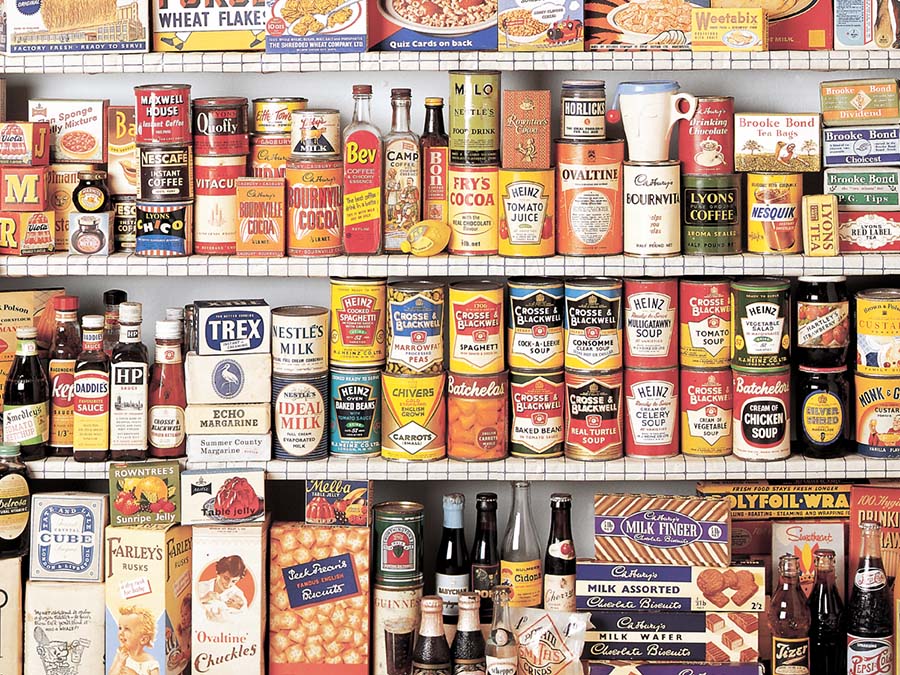
Exhibitions, Displays & Workshops
Online activities.
Have fun with the Museum from home
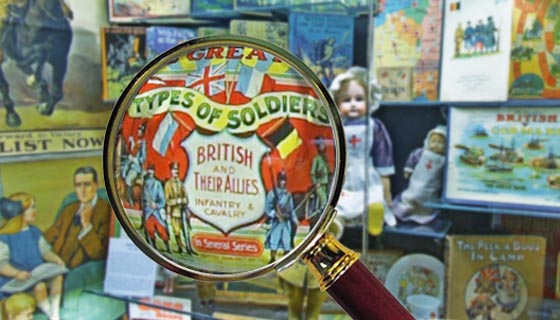
Scavenger Hunt
Grab the whole family and explore the Museum of Brands from the comfort of your own home with our fun virtual scavenger hunt.
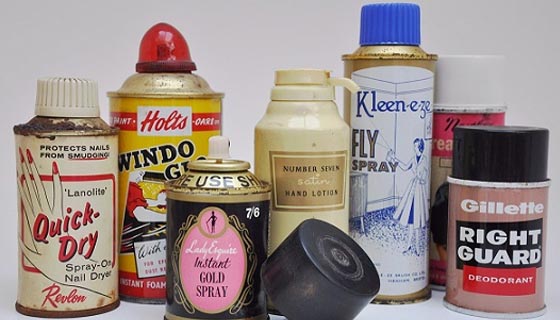
Summer Party Venue
Hire the Museum of Brands for your company's party this Summer! Explore our Time Tunnel with seasonal cocktails and canapes, hold an alfresco barbeque in our award winning garden or just explore all our collection has to offer with an out-of-hours tour – we have options for everyone and every budget.
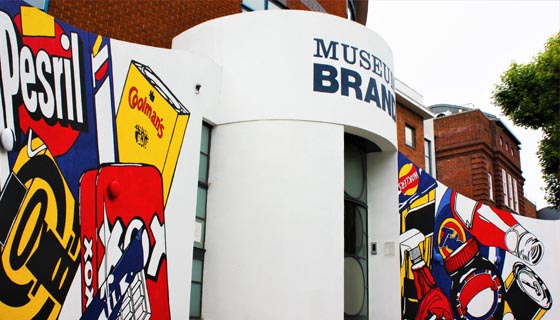
Our work is supported by generous grants from DCMS, National Lottery Heritage Fund, City Bridge Trust, Linbury Trust, Weston Foundation, The Marketors’ Trust, Kusuma Trust and The Royal Borough of Kensington and Chelsea.

Living Brands
Our wellbeing programme offers creative activities for people living with dementia and their carers, providing creative reminiscence in the local community, professional development and opportunities to volunteer with the programme.
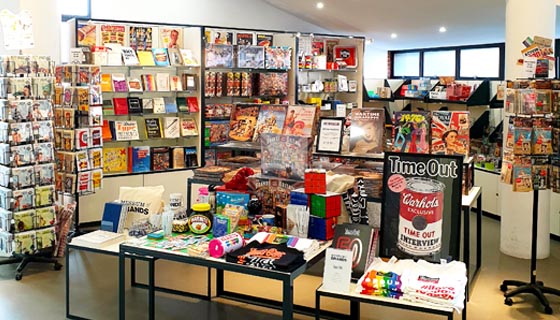
Round off your visit by shopping through a wide range of books, quirky gifts and stationery, retro sweets and even classic toys and games – our shop has something for everyone. All purchases directly support the Museum charity.
Help Us to Continue
Donate today.
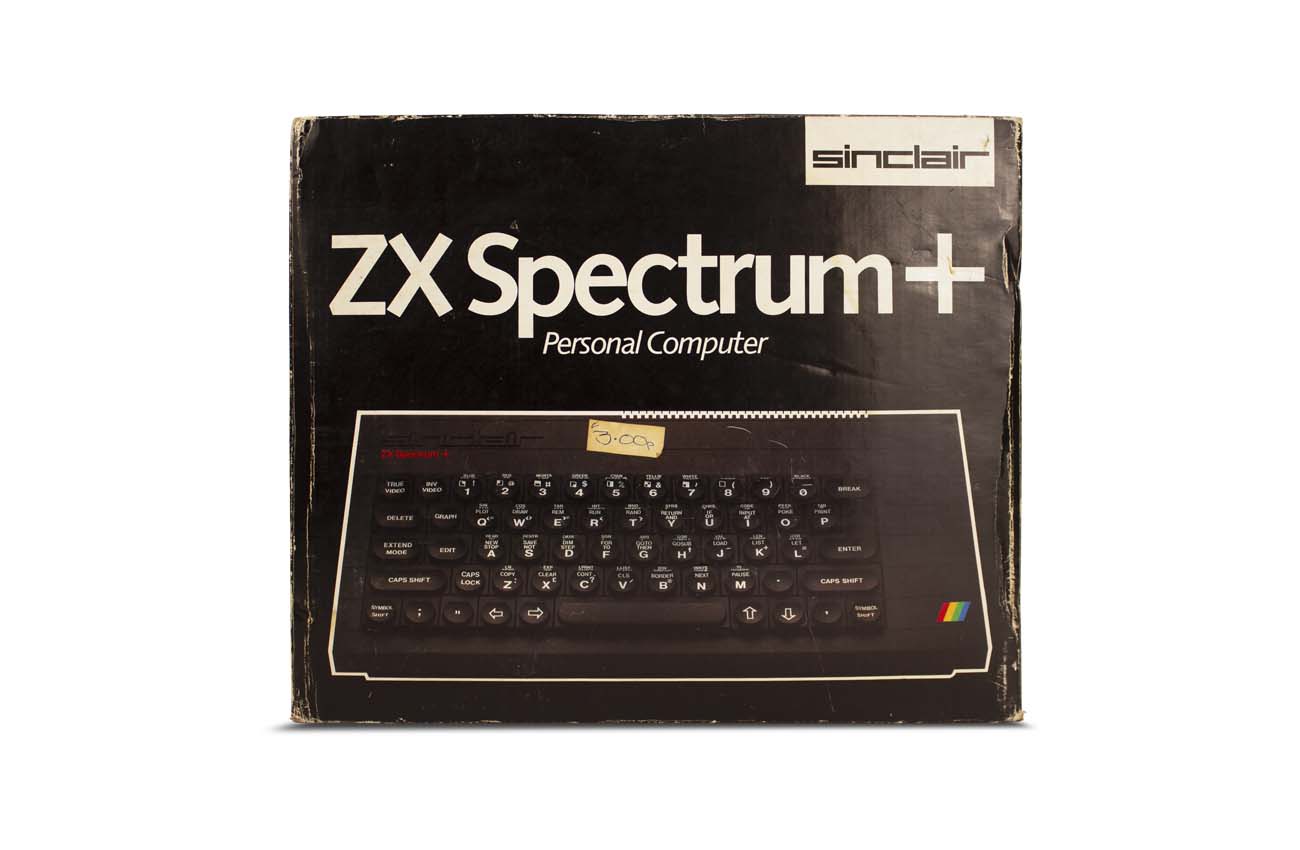
ZX Spectrum+
ZX Spectrum was an 8-bit home computer developed by Sinclair Research. It was released in 1982 and became Britain's best-selling microcomputer. It was advertised as ZX Spectrum to highlight the machine's colour display. The introduction of the microcomputer led to an increase in companies producing software and hardware for the machine.
Sorry, I've been adopted!
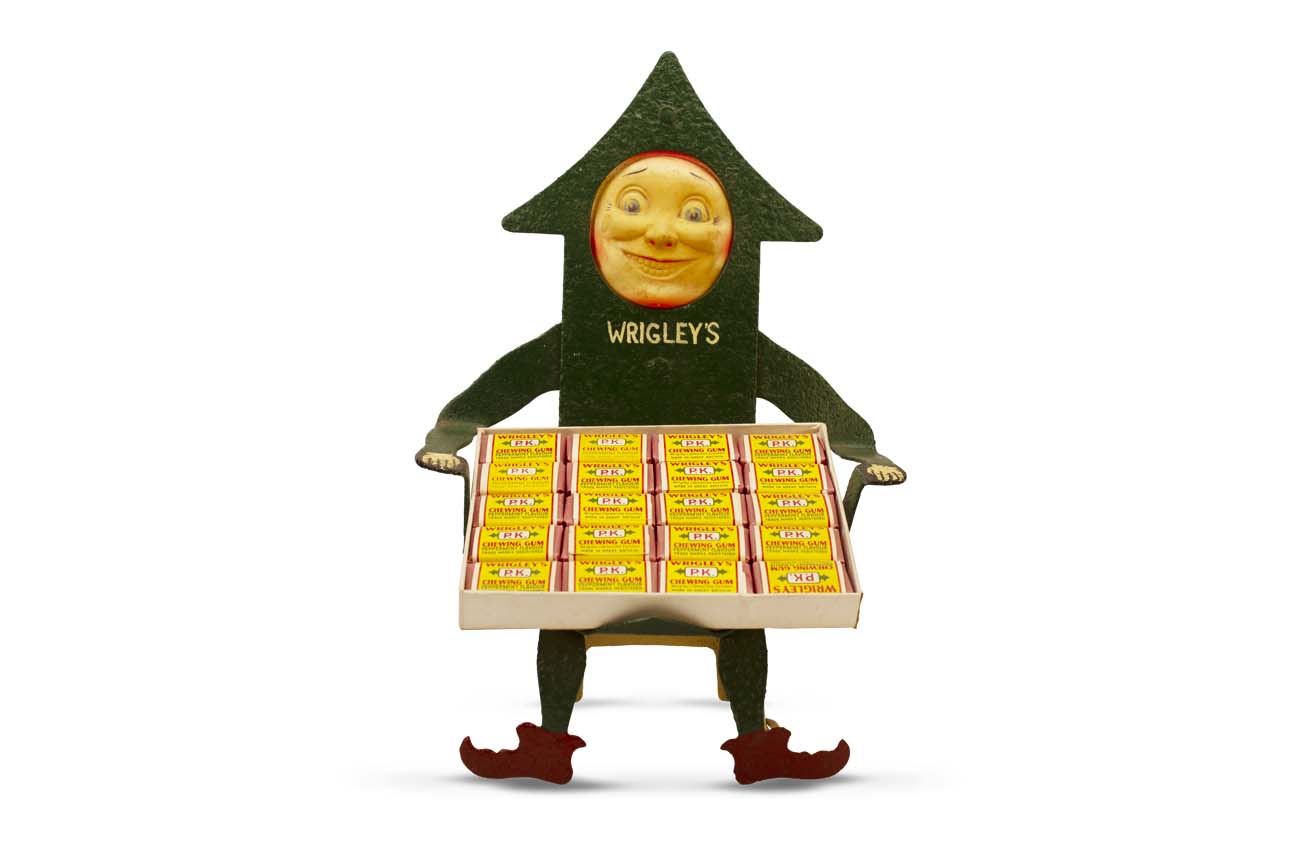
Wrigley's Display Stand
Wrigley company owns many of the chewing gum brands we are familiar with today (Airwaves, Doublemint, Extra, etc. ). This stand from the 1930s features their Spearman, based on the spear graphics introduced in 1893 on the Spearmint wrapper. It has since transformed into the Doublemint logo.
Adopt Me For
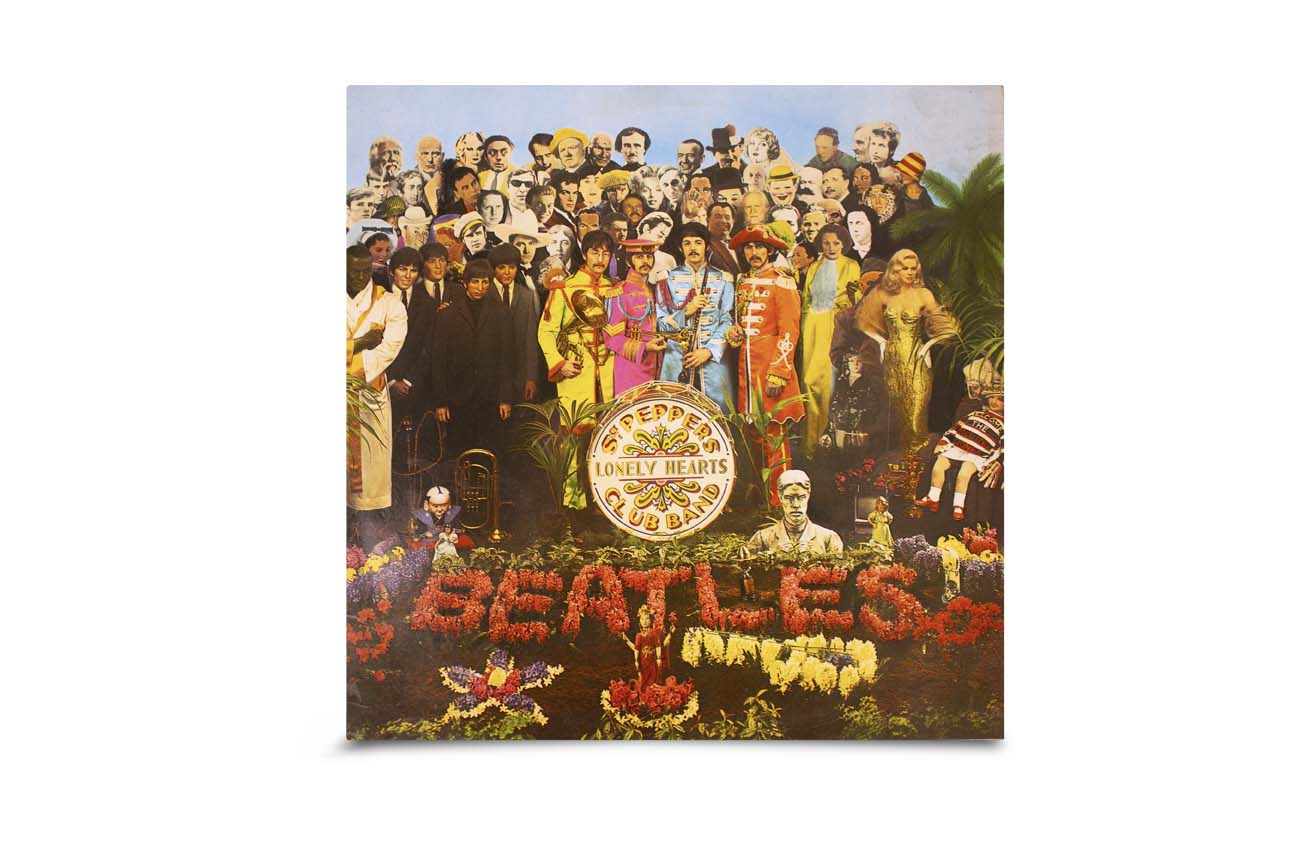
Beatles Sgt Pepper Vinyl
Sgt. Pepper's Lonely Hearts Club Band is the eighth studio album by the English rock band the Beatles, realised on 26th of May 1967. The album was associated with numerous references of the era's youth culture, including fashion, drugs, mysticism, and a sense of optimism and empowerment. Critics praised the album for innovative songwriting, production and bridging the gap between popular and high art.
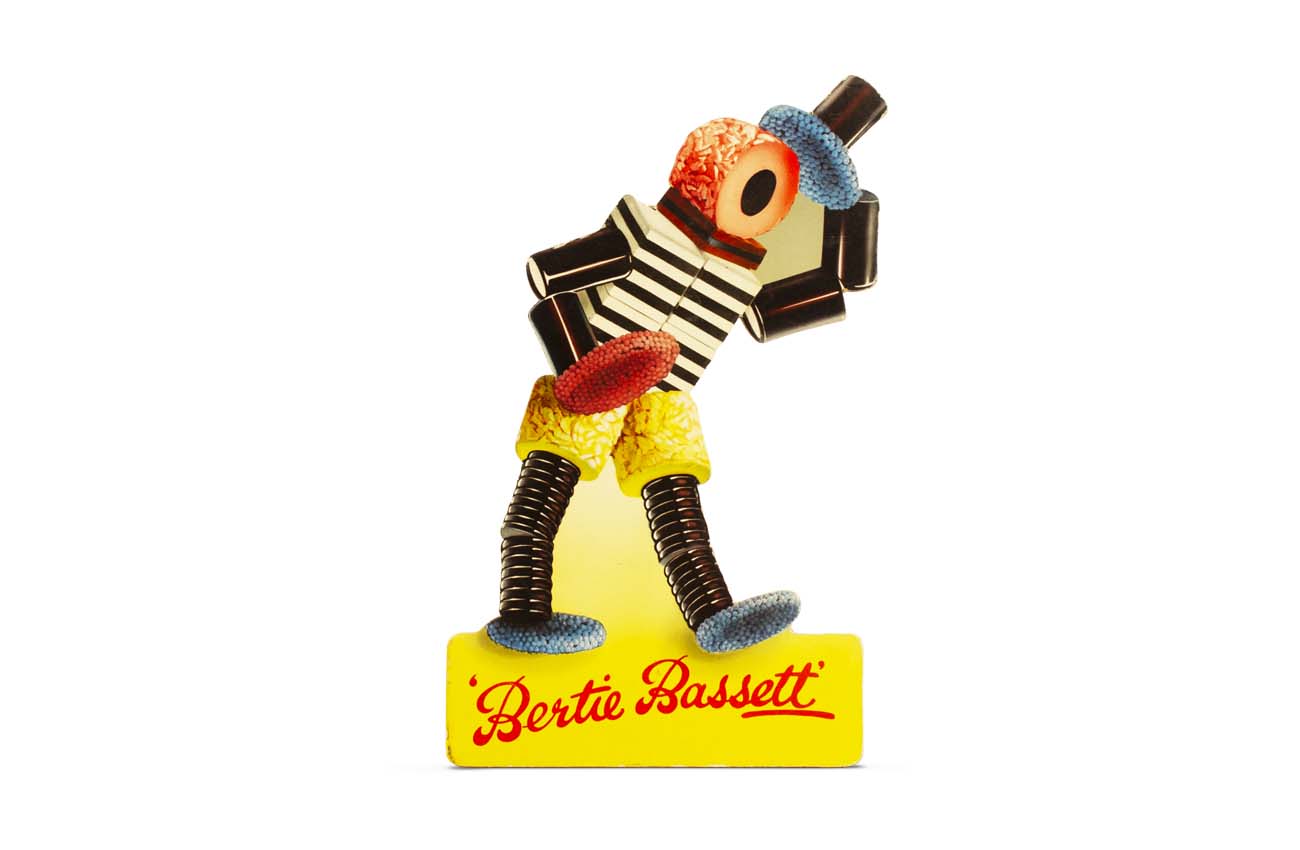
Bertie Bassett Display
Bertie Bassett is the mascot of Bassett's, a British confectionery company best-known for their Liquorice Allsorts. Bertie Bassett was created in 1926 and is a figure made up of liquorice allsorts.
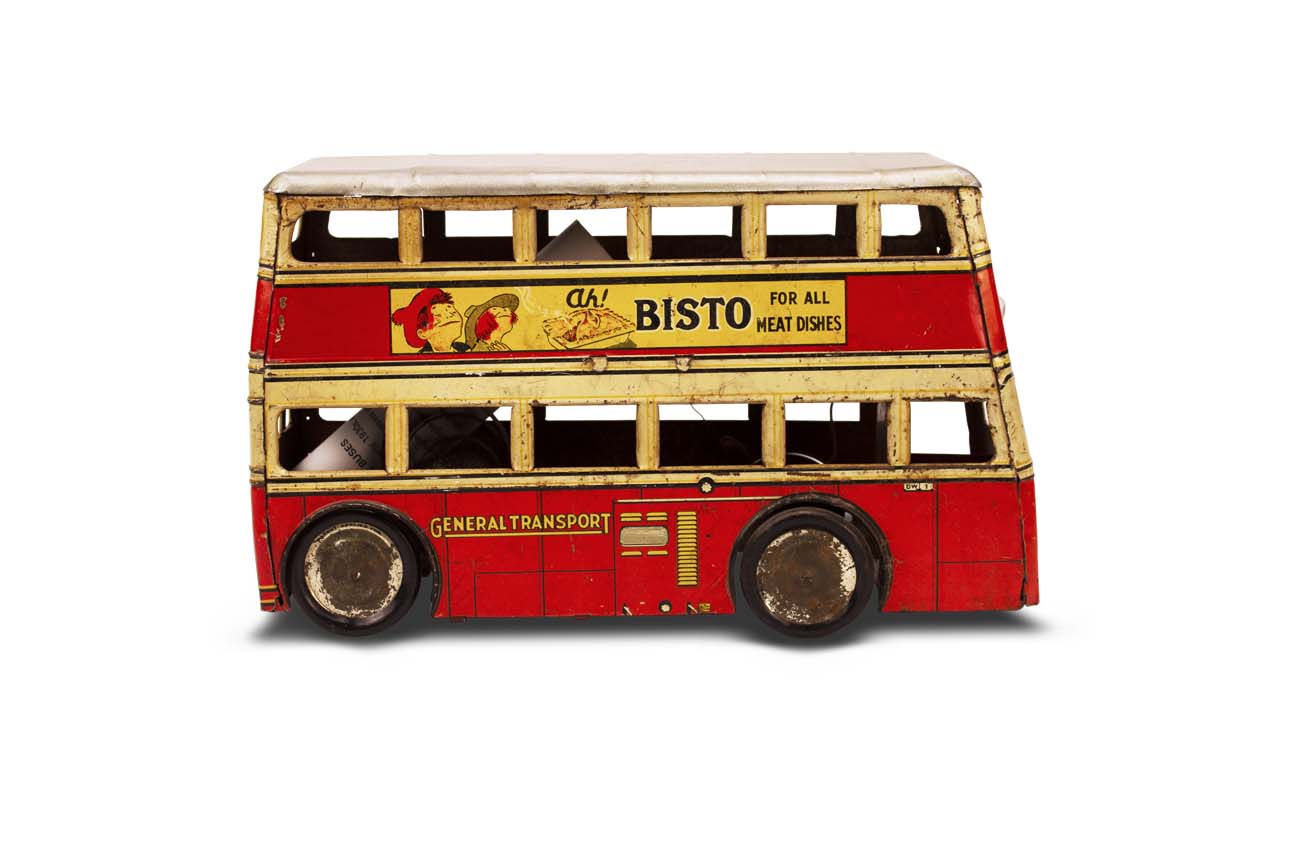
Bisto was lauched in 1908 by two workers of the Cerebos salt works. They were persuaded by their wives to create a product that would guarantee perfect gravy. Bisto has positioned themselves as the gravy of the UK and now hold a 62% share of the branded market. Modern Bisto model buses were produced by Lledo, who produced die-cast scale model commercial vehicles and cars fom 1983 to 1999.
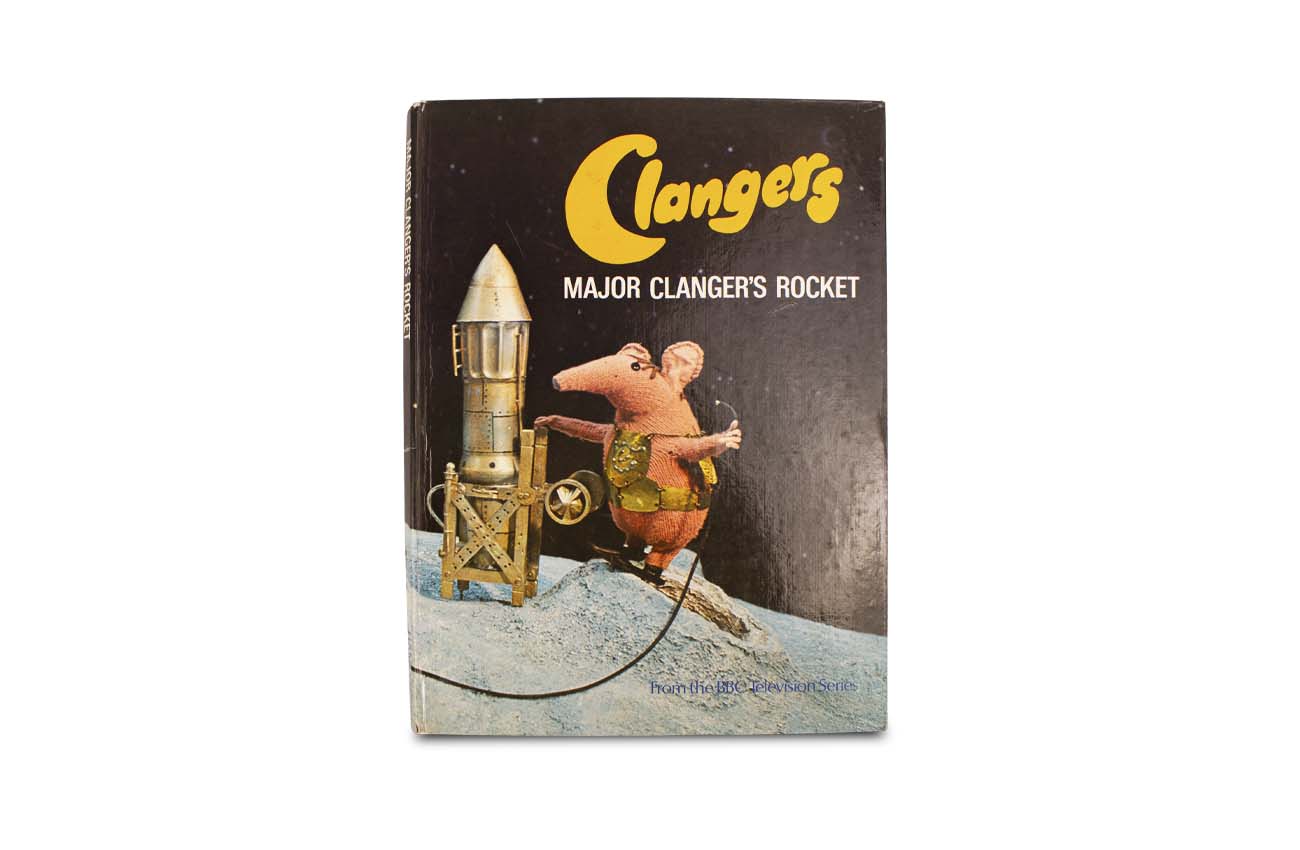
Clangers Rocket Book
Clangers is a British stop-motion children's television series about a family of mouse-like creatures who live on and inside a moon-like planet. The show was originally aired on BBC1 between 1969 and 1972. The series was made by Smallfilms, set up by Oliver Postgate and Peter Firmin. This object is a pictorial book of the character.
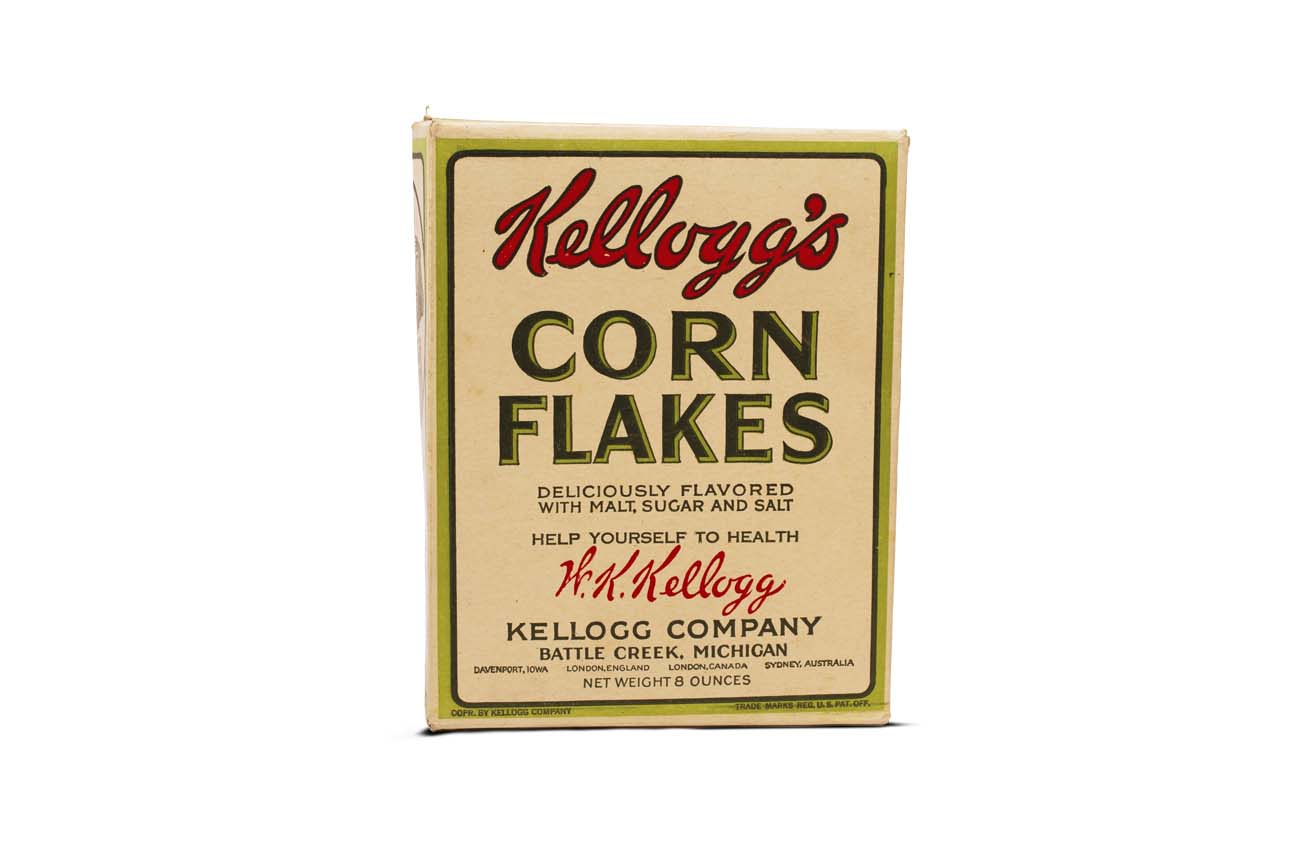
Kellogg's Cornflakes Box
The Kellogg's brand started out with two brothers, John H. Kellogg and Will K. Kellogg. W.K. Kellogg established the Kellogg Cereal Company in 1922. Cornflakes were introduced after the brothers stumbled upon wheat flakes while trying to create an easily digestible form of bread.
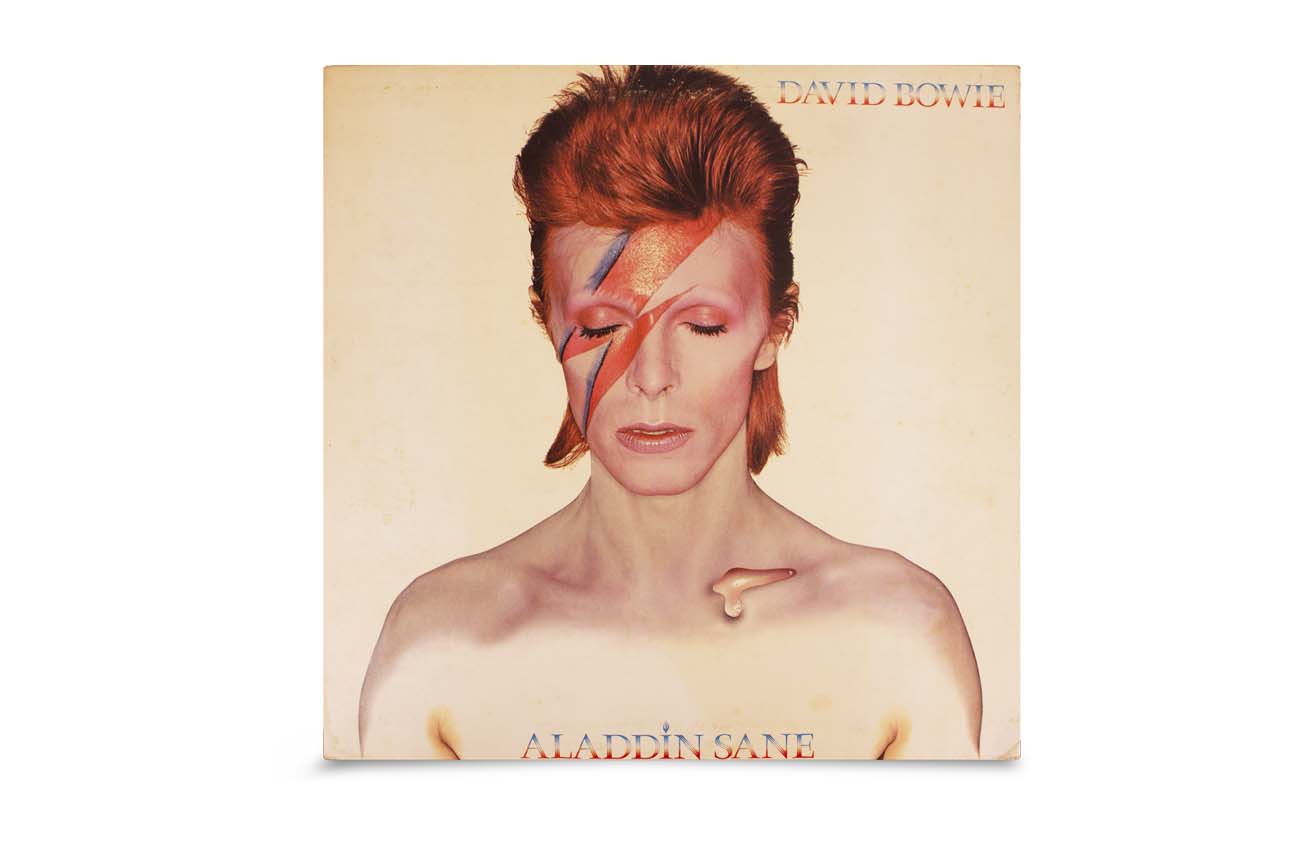
David Bowie Aladdin Sane Vinyl
Aladdin Sane is the sixth studio album by the English musician David Bowie. It was released on 19th of April 1973 and was the first album he wrote and released from a position of stardom. Aladdin Sane was Bowie's most commercially successful record at the time, topping the UK Album Chart. Bowie's work continues to inspire today's contemporary artists and its album cover still resonates deeply in queer culture around the world.
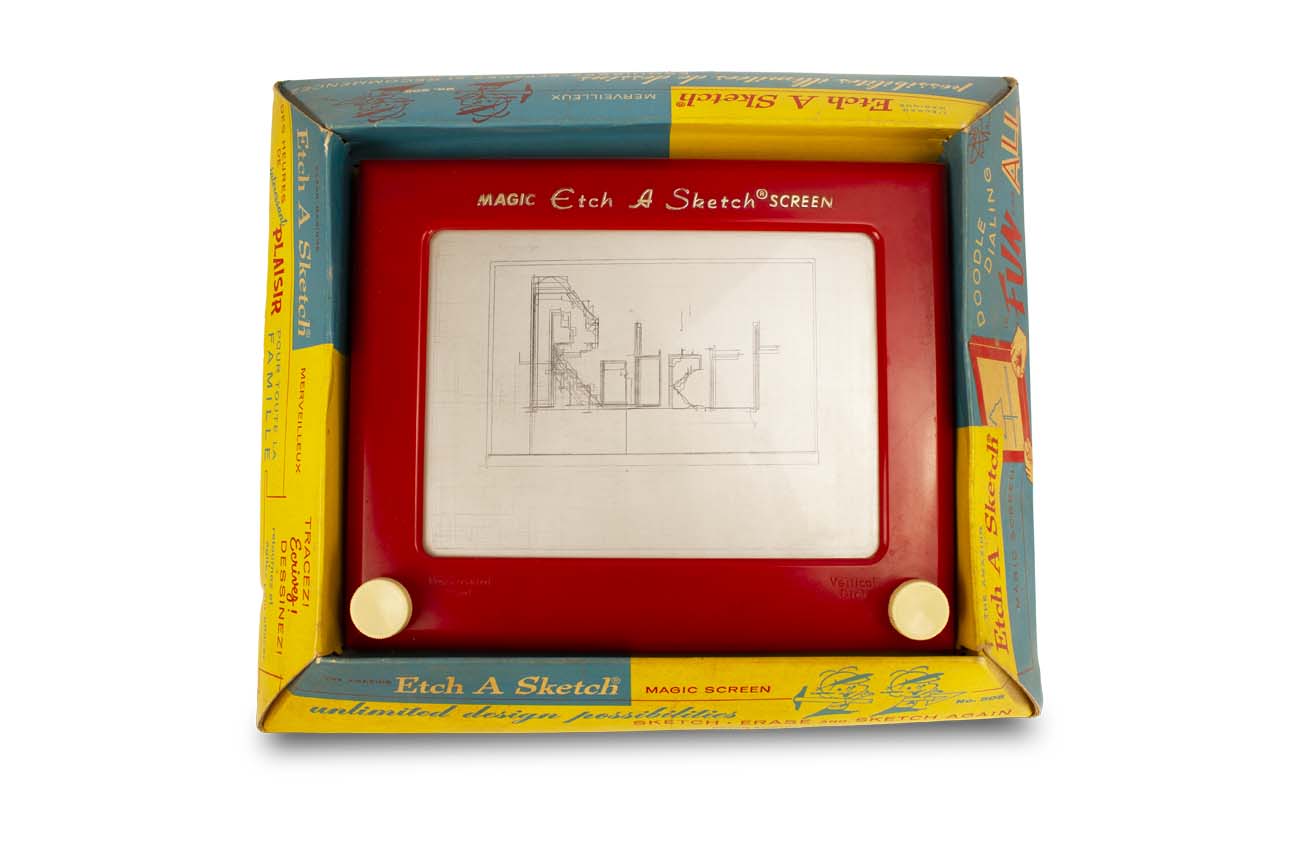
Etch A Sketch
Etch A Sketch is a mechanical drawing toy developed by Andre Cassagnes of France in the 1950s. Twisting the two knobs moves a stylus that displaces aluminum powder on the back of the screen, creating a line. The completed images are lineographic drawings.
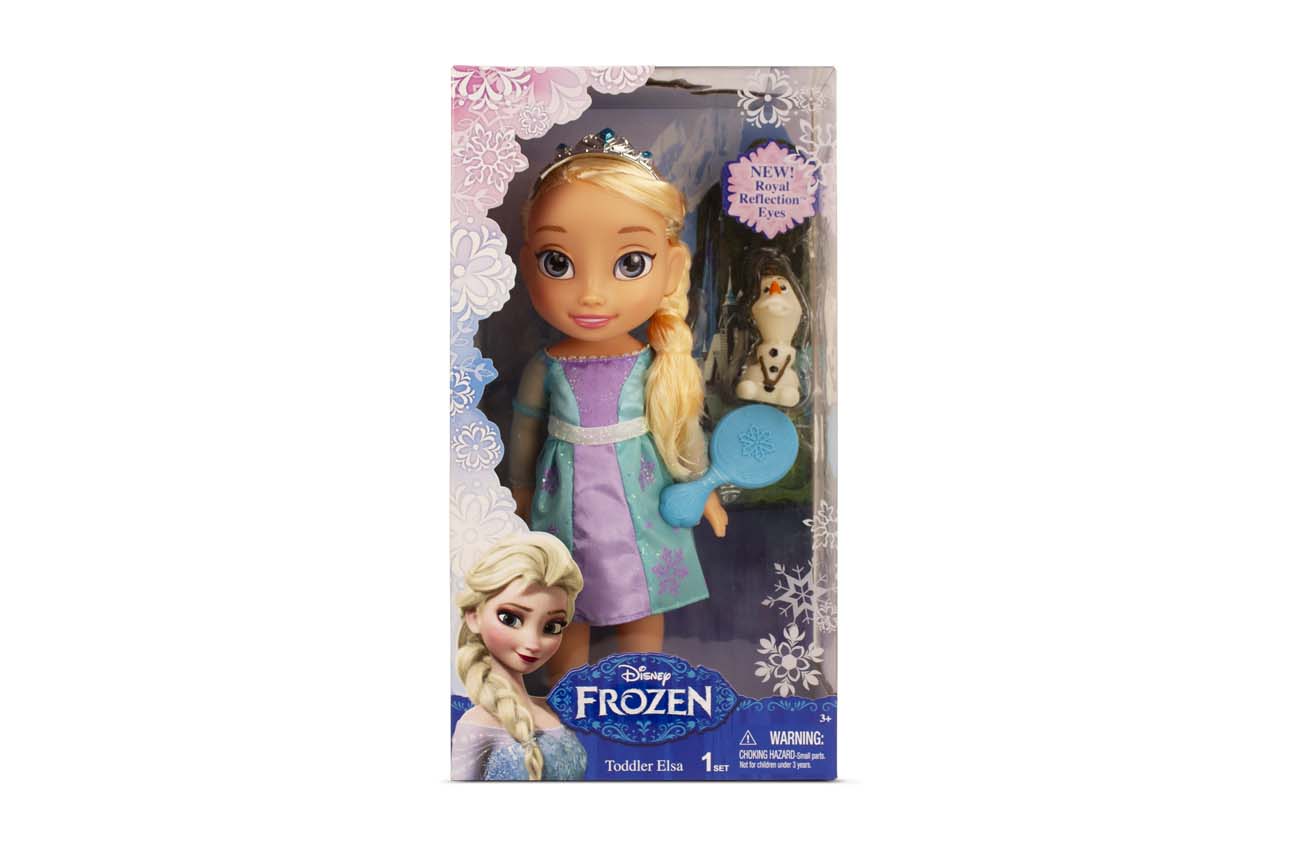
Frozen Figure
The computer-animated Disney film 'Frozen' was released in 2013 and was the highest-grossing film of 2013. Children were watching the film on repeat and knew all the songs by heart. Merchandise, including figures, were one of the many ways the legacy of the film lives on after leaving the cinema. The first figure for adoption is Elsa.
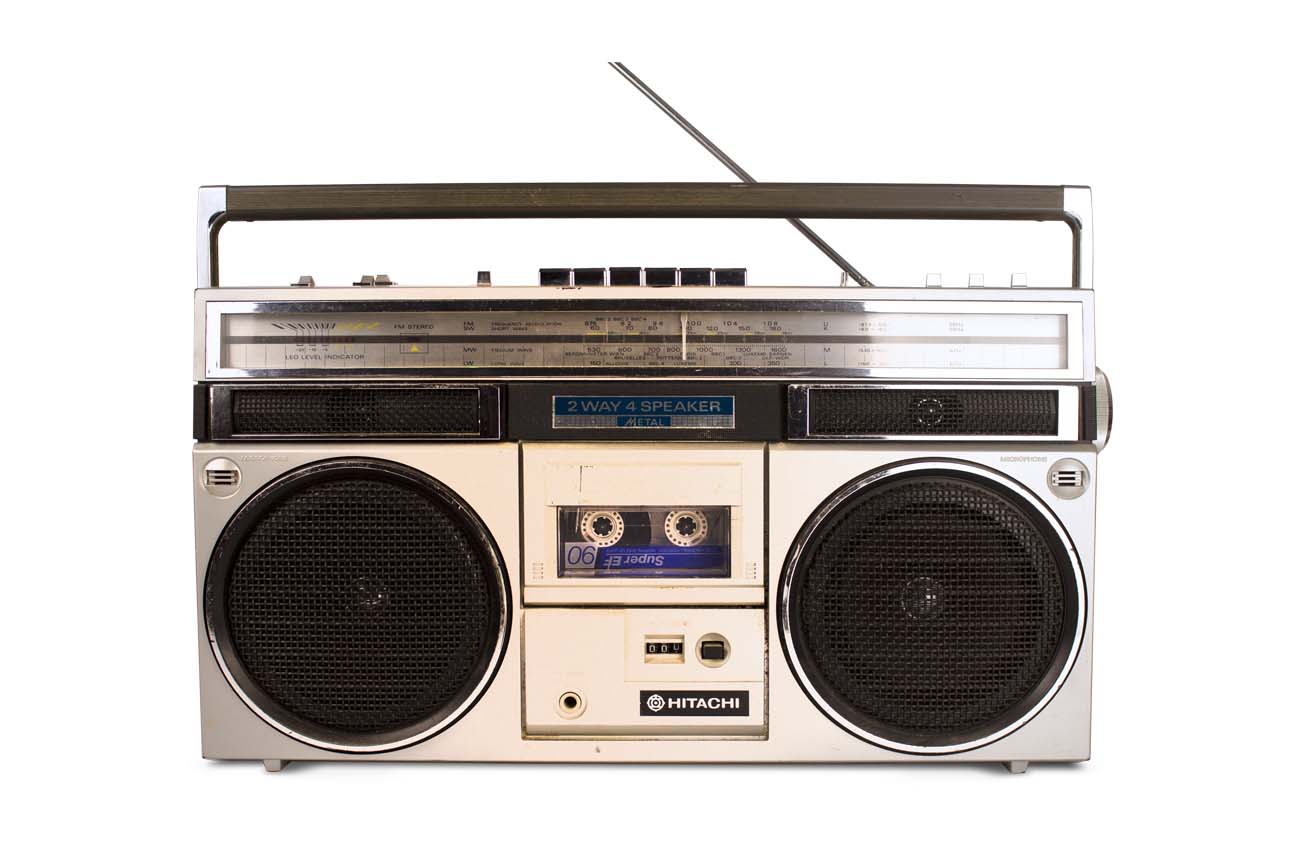
Ghetto Blaster
Ghetto blasters or boomboxes are portable music players that read cassette tapes or CDs and played AM/FM radio. The boombox quickly became associated with urban society in the United States, wide use of boomboxes in urban communitites led to tthe boombox being coined a 'ghetto blaster'. Ghetto blasters became closely linked to American hip hop culture and were instrumental in the rise of hip hop.
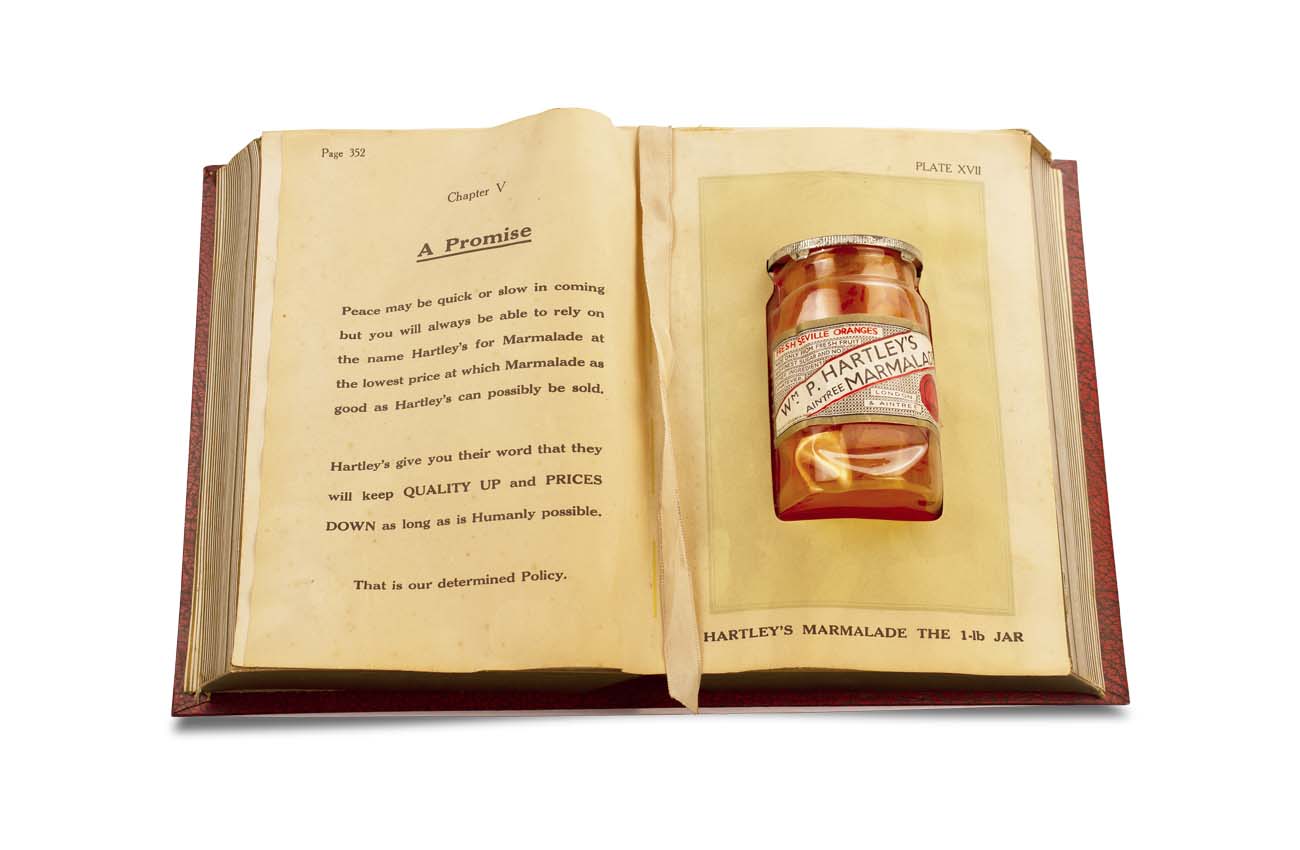
Hartley's Marmalade Book Display
Hartley's is a UK brand of marmalades, jams and jellies which was introduced in 1871. The company continues to provide jam and marmalades and had advertised itself as the 'Best Tasting Jam'. Little is known about this unique display item which comes in the form of 'A Promise' about the quality and price of their products.
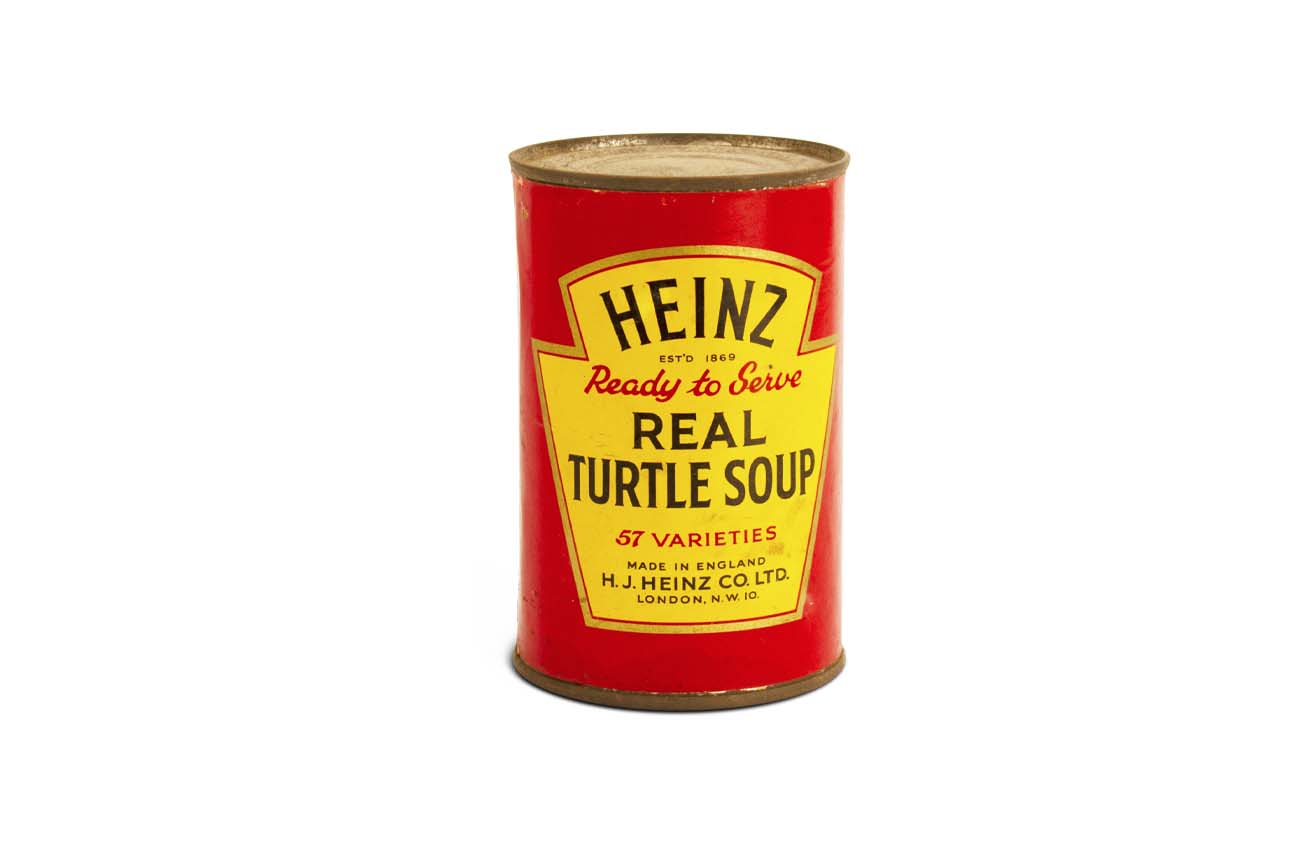
Heinz Real Turtle Soup
Genuine turtle soup was so popular that by the 1930s turtles started to face extinction. The Heinz company responded by producing 'Mock Turtle Soup' where calves heads were the key the main ingredient. Heinz stopped its turtle soup in the 1960s as tastes changed.
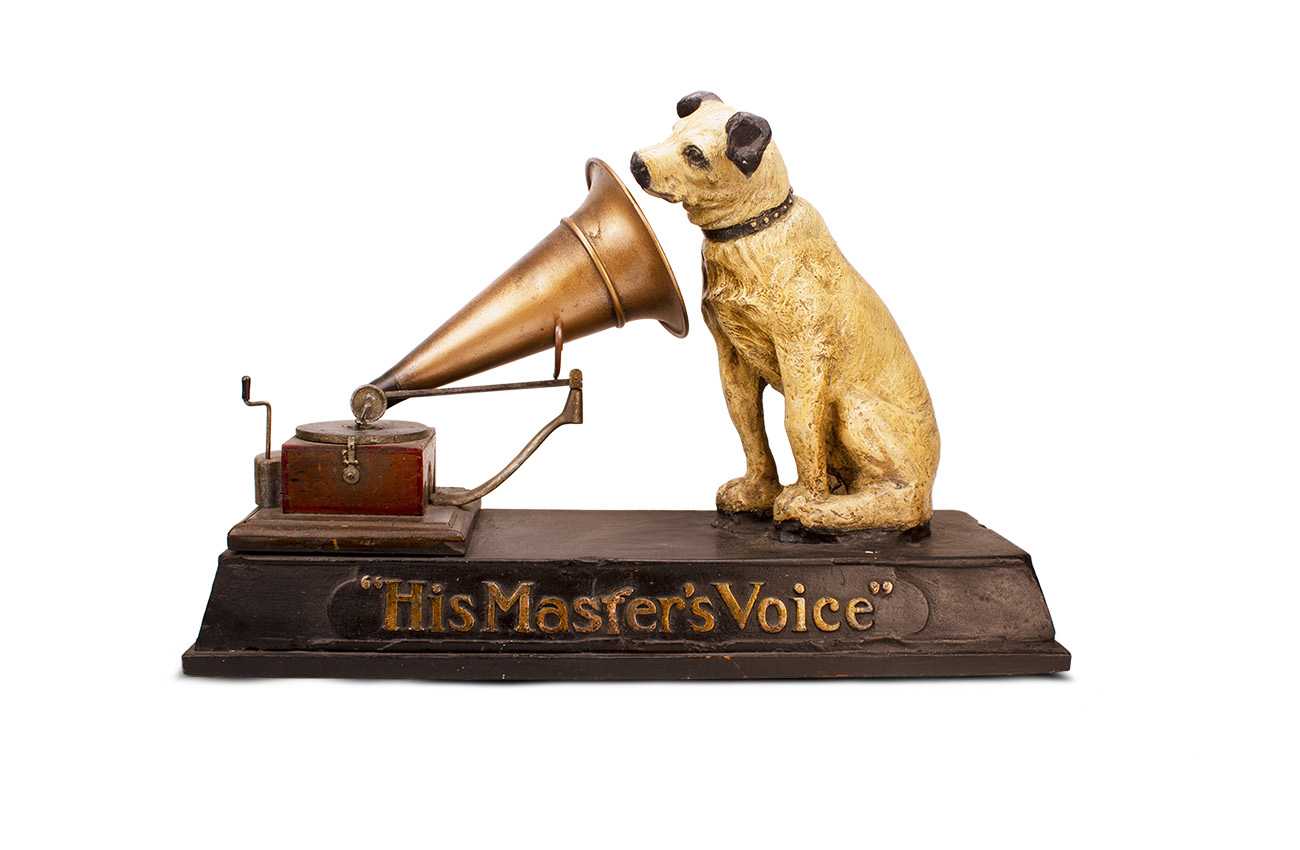
Model HMV dog 'Nipper'
Originally a 1898 painting by Francis Barraud of Nipper the terrier and a gramophone, the image was brought by the Gramophone Company and used as a trademark for HMV (His Master's Voice), a British music and entertainment retailer. The company still trades as HMV today.
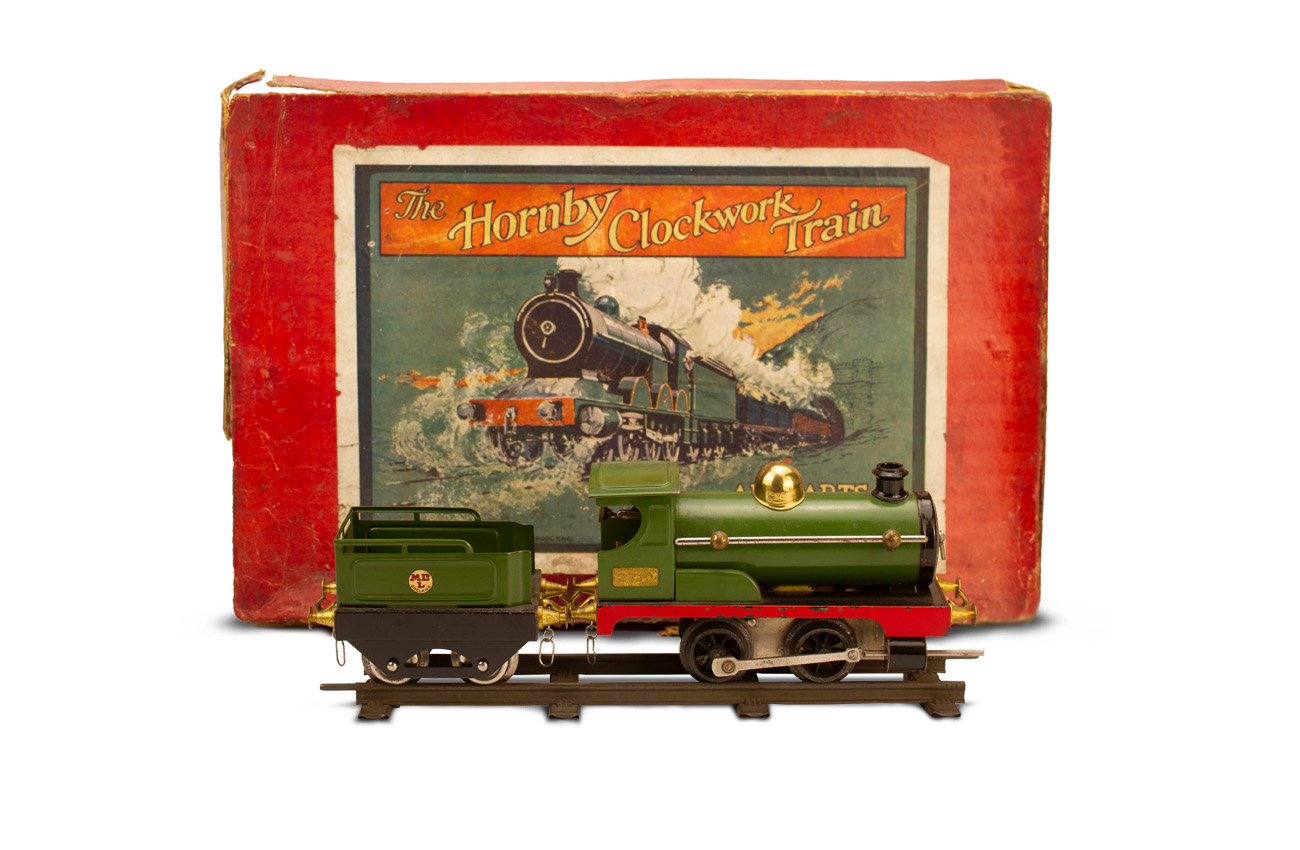
Hornby Train Set
Hornby trains or the 'Hornby Series' were manufactured by Meccano Ltd. between the first and second World War. The Hornby trains grew in popularity when British customers no longer wanted to purchase German train sets. This train dates from around 1920.
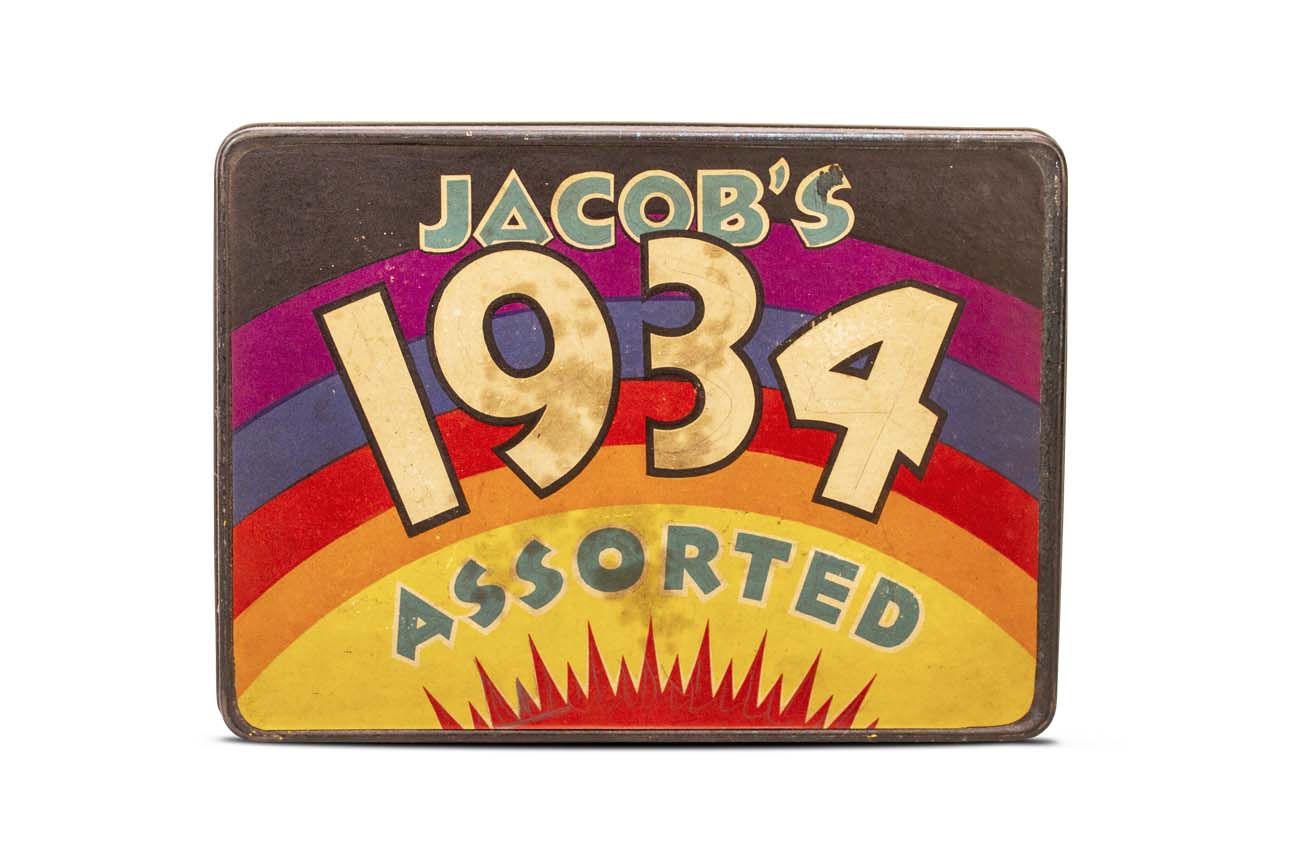
Jacob's Biscuit Tin
Jacob's dated 'assortment' tins were issued every year from the mid-1920s until the Second World War. A similar rainbow design was also used by their then competitor Huntley & Palmers.
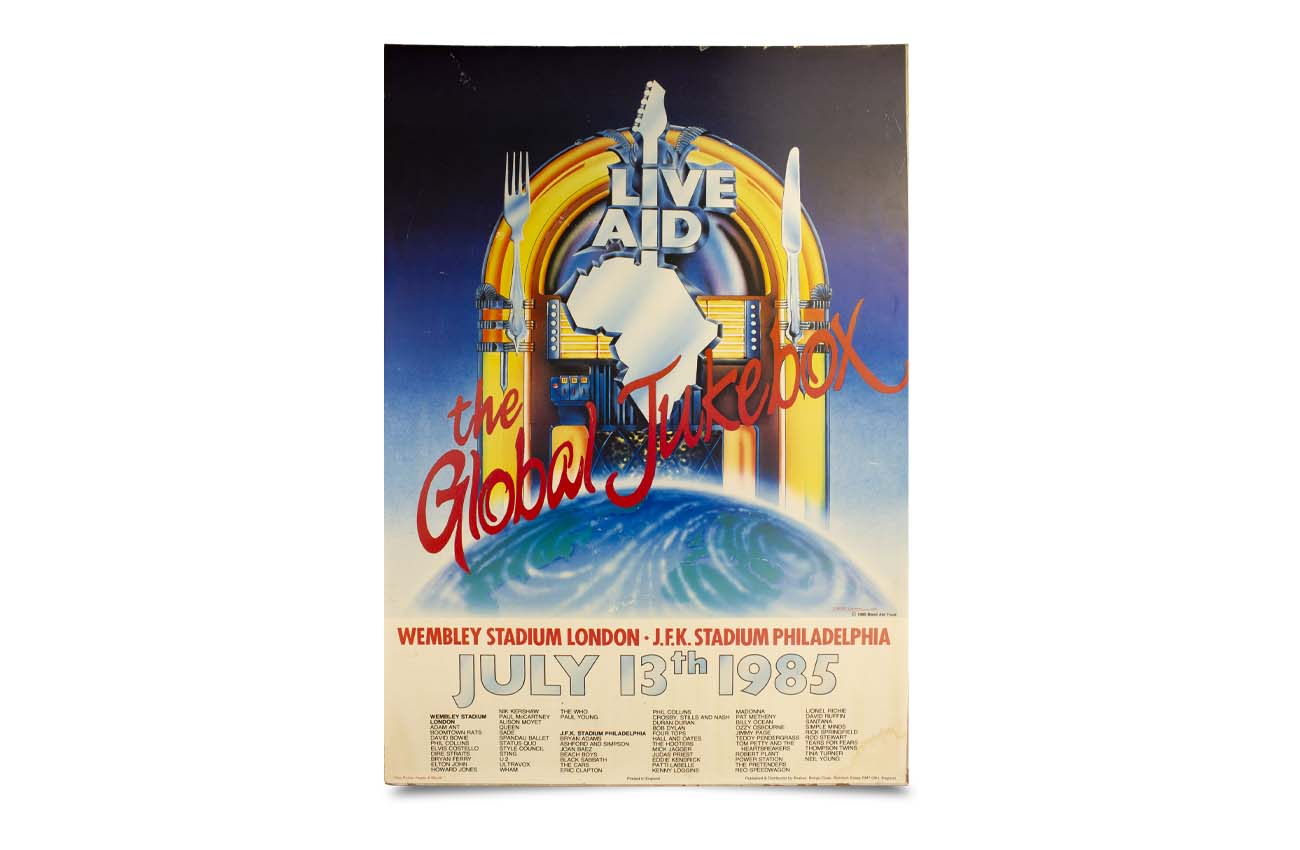
Live Aid Poster
Live Aid was a multi-venue concert held on 13th of July 1985 to fundraise for famine relief in Africa. It was opened by then Prince Charles and Princess Diana, and watched by an estimated global audience of 1.5 billion people. It raised more than $140 million for famine relief.
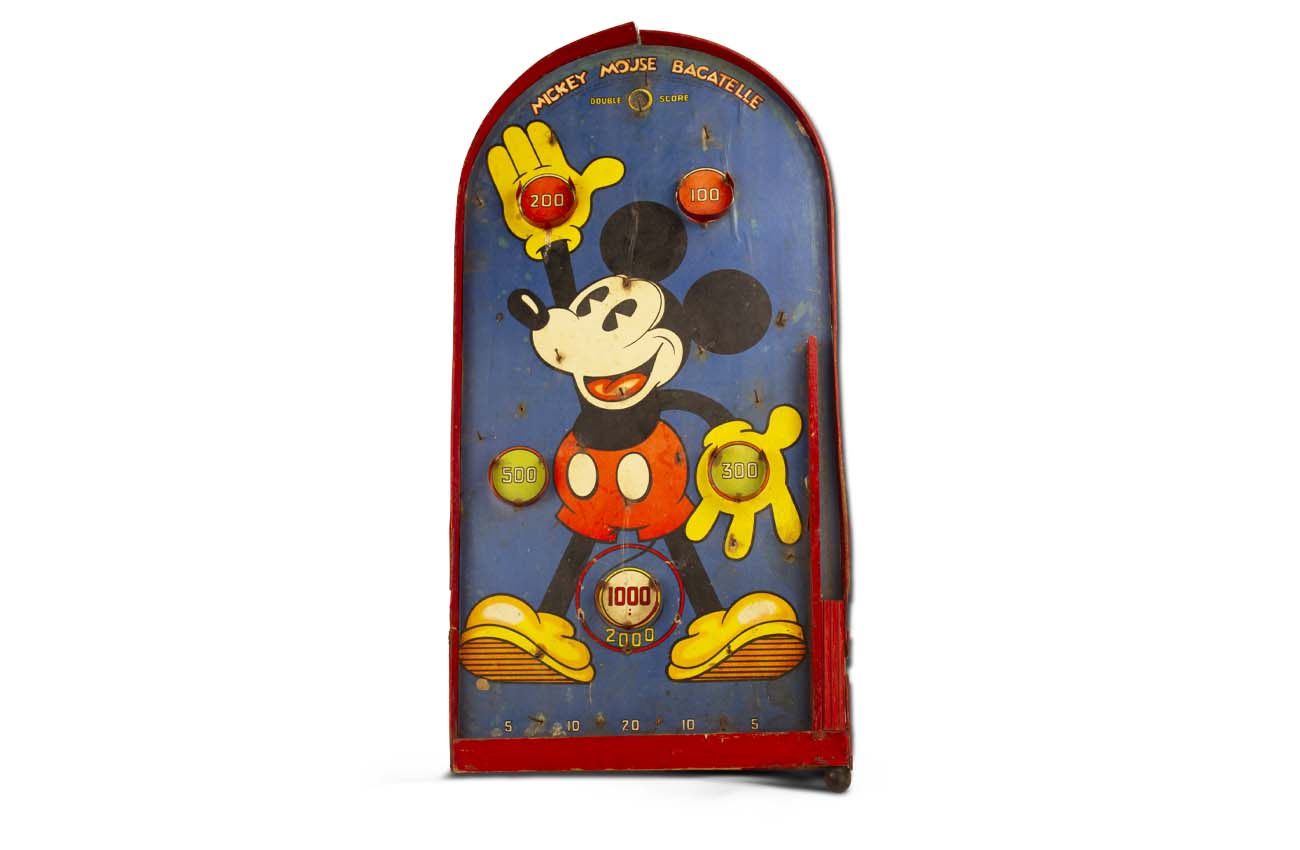
Mickey Mouse Game
Walt Disney's Mickey Mouse made his first screen appearance in the 1928 animated film "Steamboat Willie". The 1930s was at the time of the Great Depression. Games such as this bagatelle, were very popular amongst children.
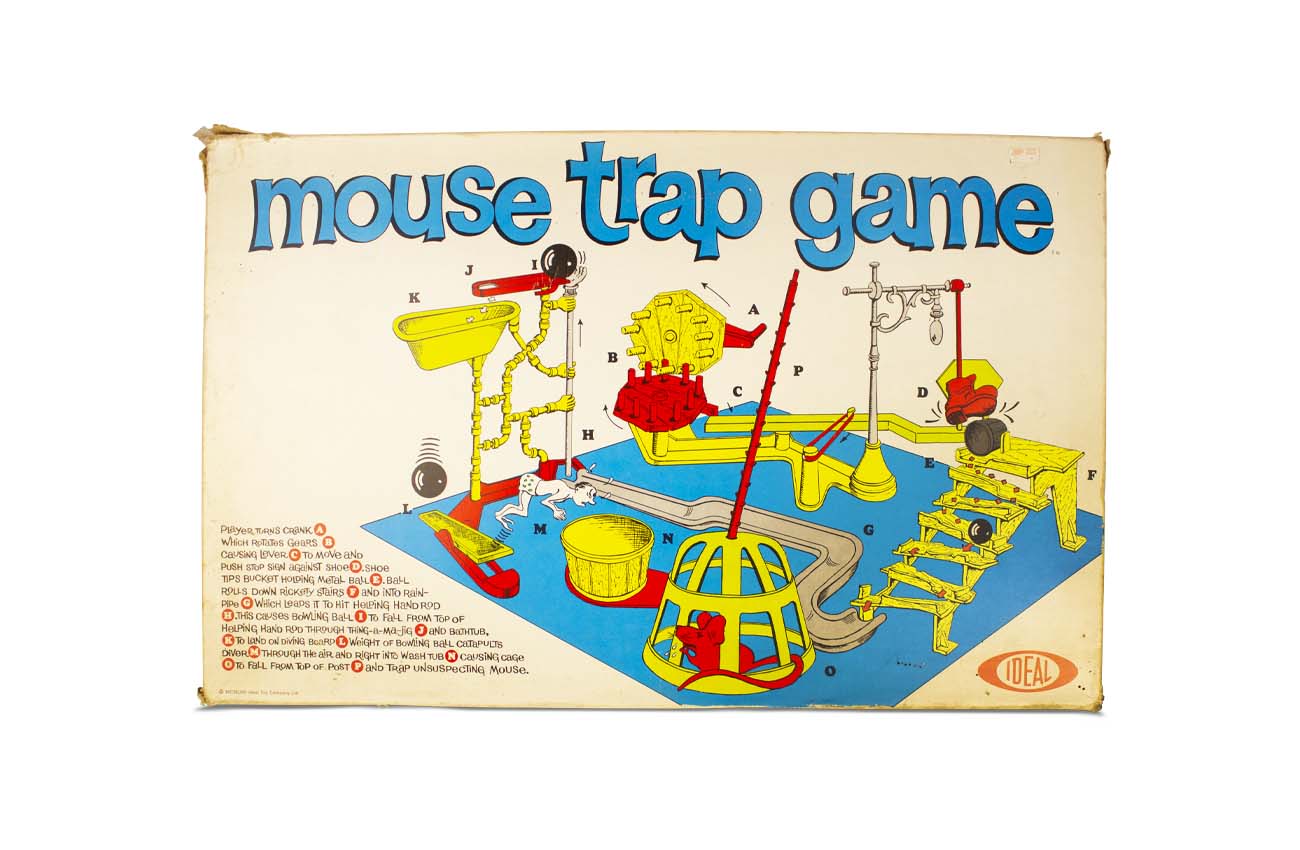
Mouse Trap Game
Mouse Trap, released in 1963 by Ideal and designed by Marvin Glass & Associates was one of the frist mass-produced, three-dimensional board games. The game was inspired by Rube Goldberg's cartoon drawings of complicated contraptions designed to perform simple tasks.
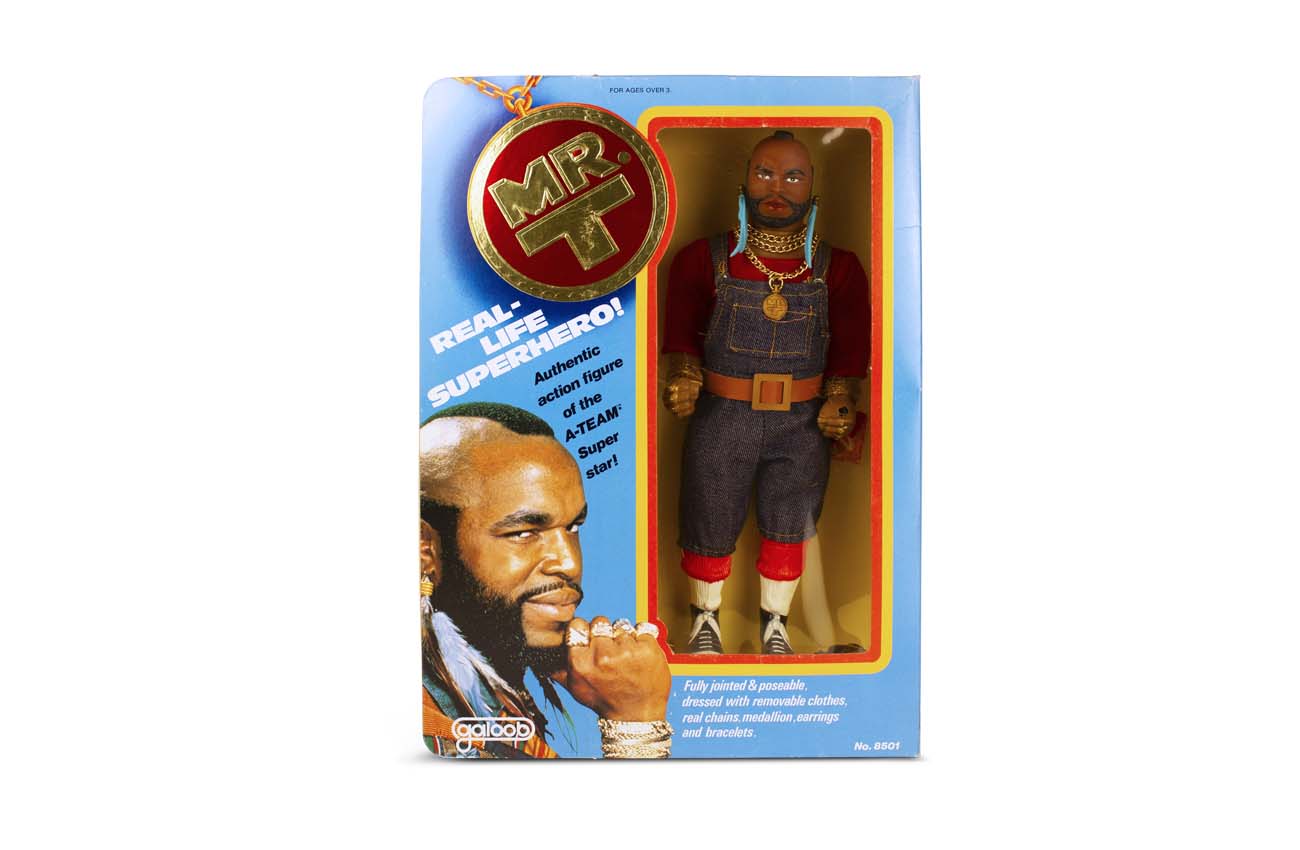
Mr. T Action Figure
Mr. T, Laurence Tureaud, is an American actor and professional wrestler. Mr. T made his debut in WrestleMania as Hulk Hogan's tag-team partner in the WWF era in 1983. He was one of the biggest TV and film stars in the 1980s and is to this day a pop culture icon.
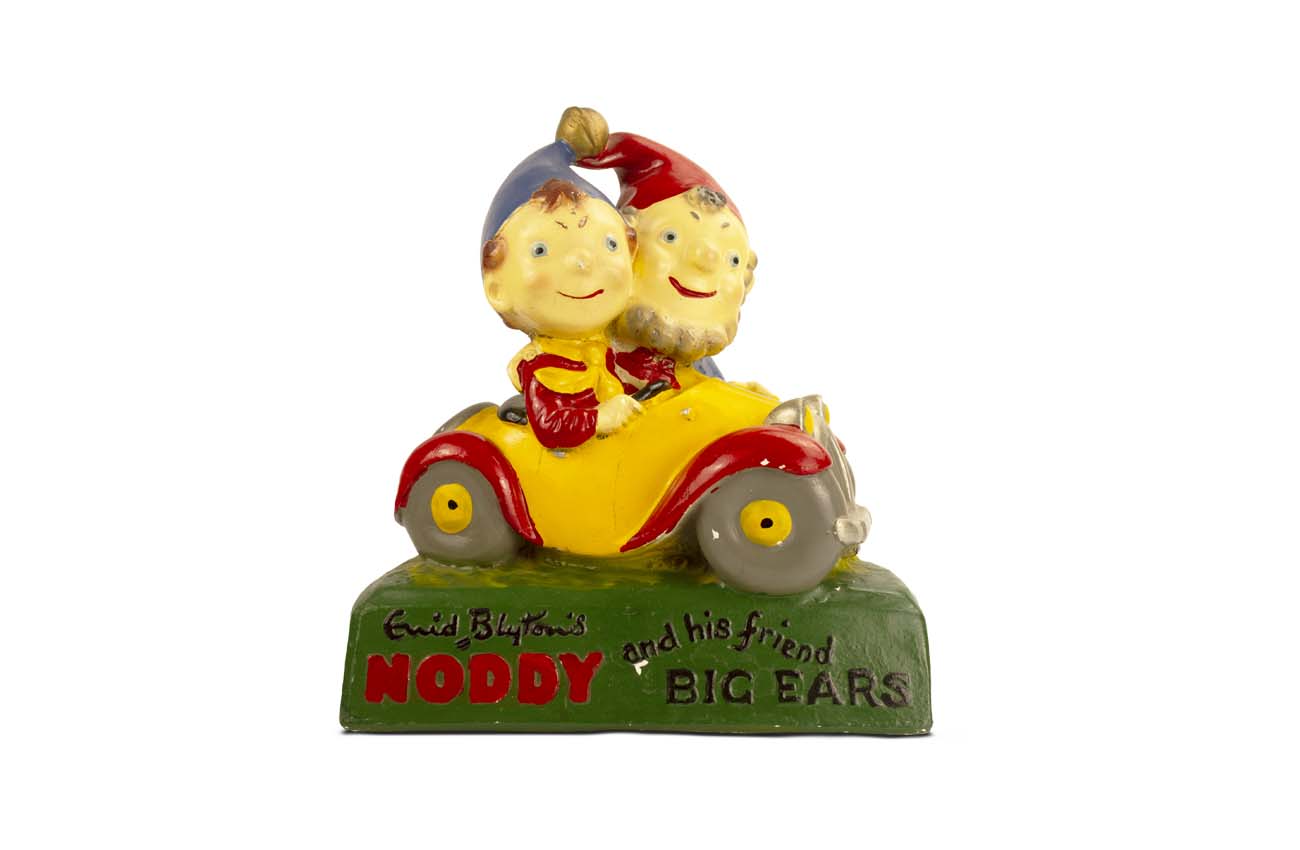

Noddy Ceramic Model
Noddy is an English children's character created by author Enid Blyton. Noddy was illustrated by Dutch artist Harmsen van der Beek from 1949 to 1953 and continued by Peter Wienk until 1963. Television shows based on the character have run on British television since 1955.
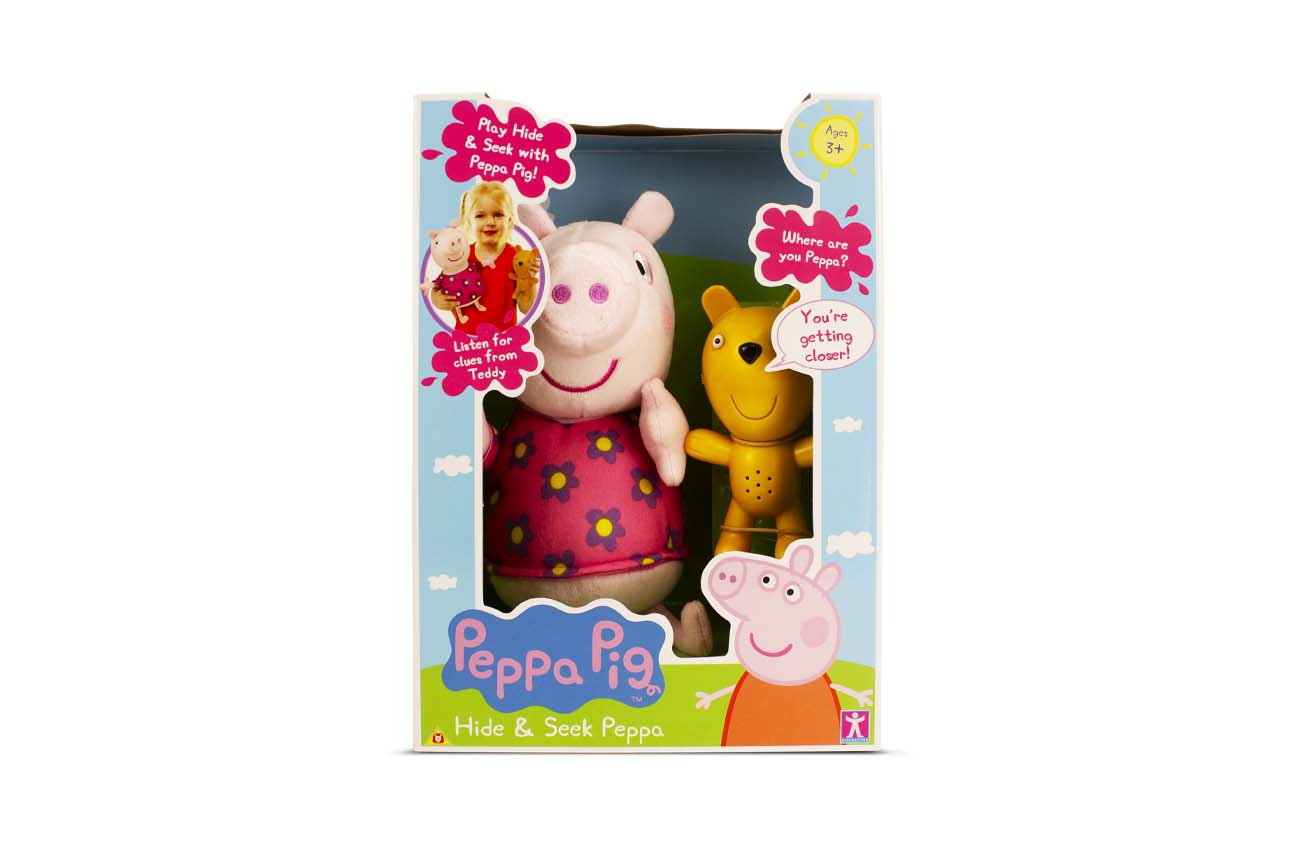
Peppa Pig Toy
Peppa Pig is a British children’s animated television series. Peppa is a female piglet that interacts with her family and friends in the show. The first release was on Channel 5 on 31st May 2004. By 2010, Peppa Pig had topped the pre-school toy market. Merchandise included figures, stationery, bed-linen, food, drink and clothing.
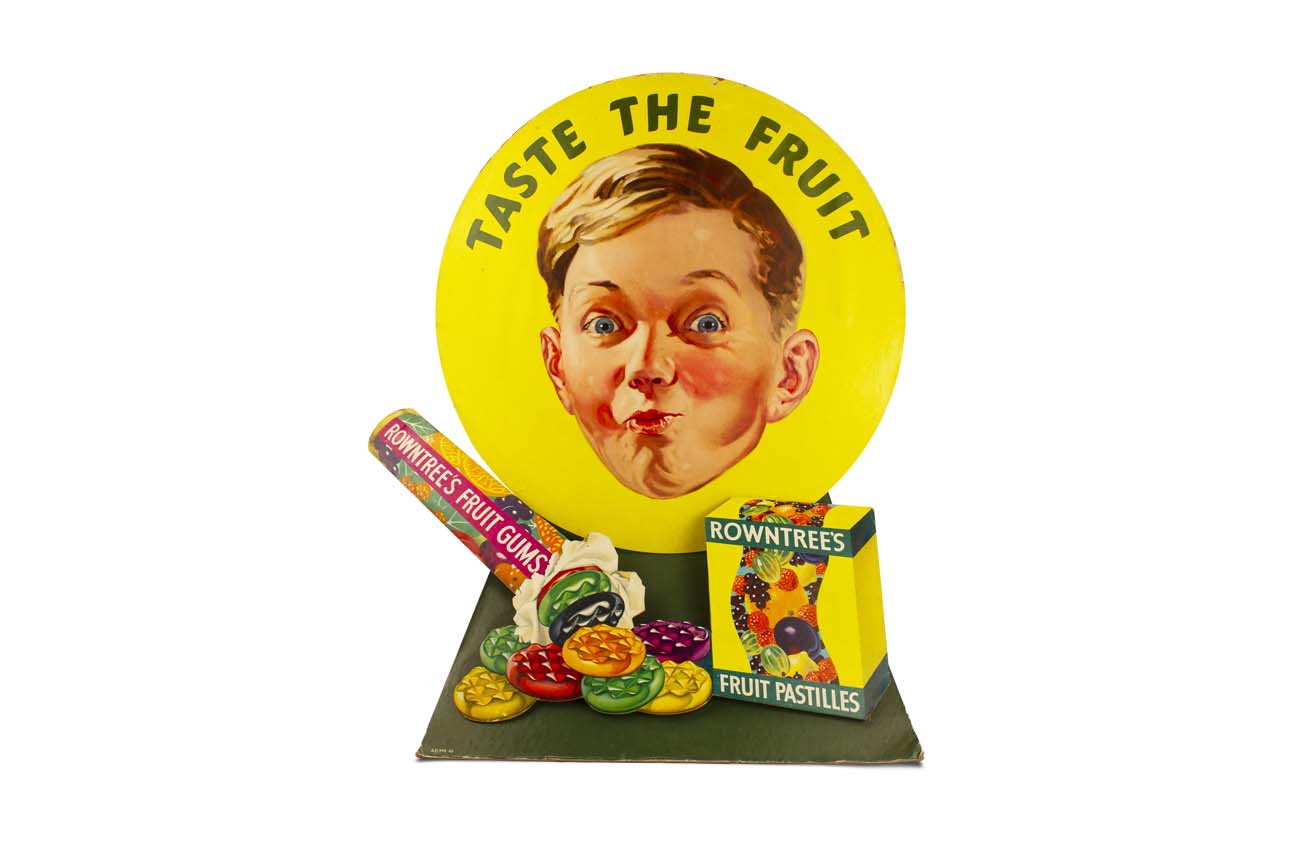
Rowntree's Display
In 1881, Rowntree introduced Fruit Pastilles and then Clear Gums (now known as Fruit Gums) in 1893. This stand up display epitomises the charm and nostalgia of 1950s advertising. The products were a huge success and are still available today.
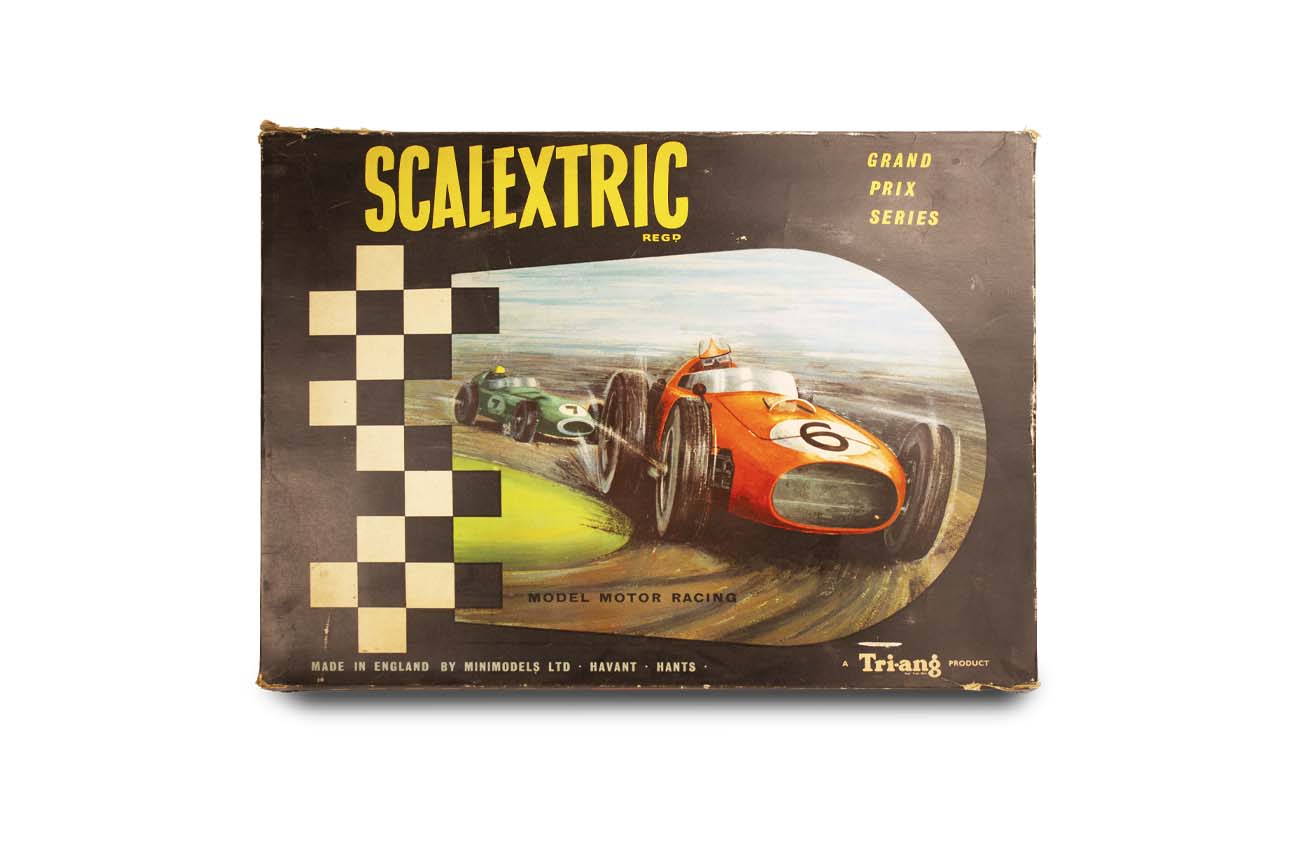
First introduced in 1957, Scalextric was one of the leaders in slot car racing. This particular model is the Grand Prix Series. Minimodels, the previous owners of Scalextric converted the previous model, Scalex, into an electric version, which gave birth to Scalextric models. They became an instant hit, with American hobbyists and manufacturers adapting 1:24 car models to slots.
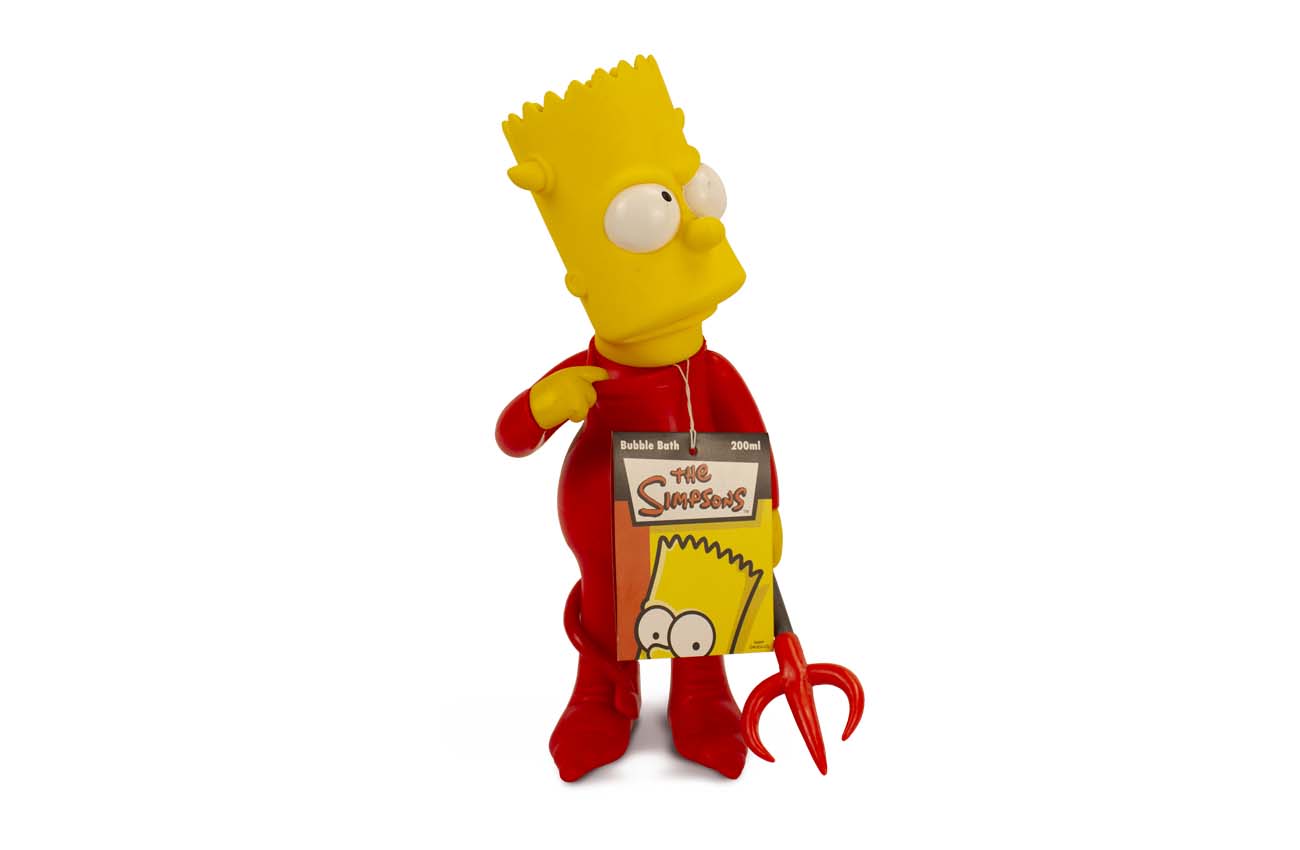
Simpsons Bubble Bath
The Simpsons bubble bath bottles were released in the 1990s. They were a result of a ‘bubble bath boom’, where characters in many popular shows, films and video games were moulded into novelty figurines filled with soapy gel.
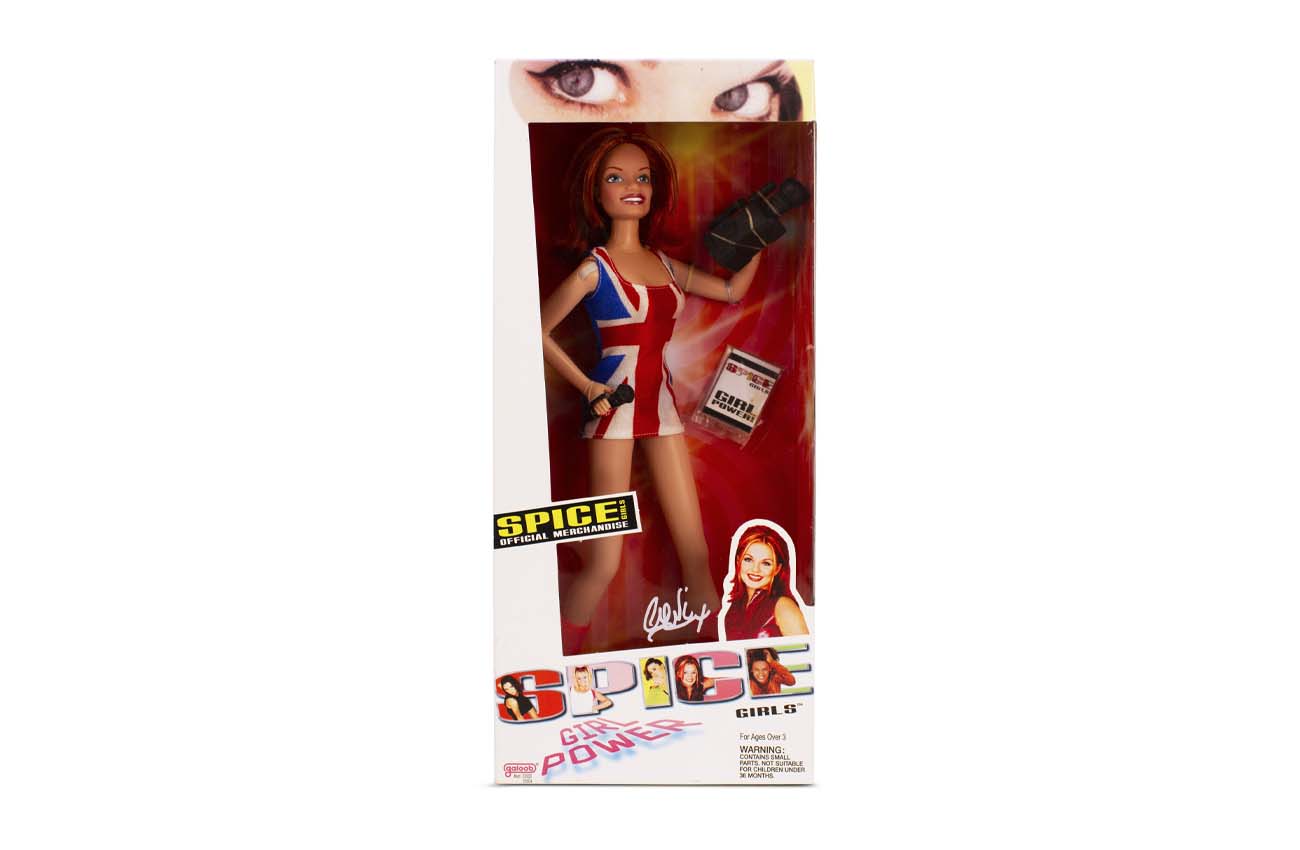
Spice Girls Figure
The Spice Girls are an English girl group formed in 1994. They led the teen pop resurgence of the 1990s and remain pop icons to this day. They had a young female fanbase thanks to their 'girl power' mantra. Spice Girls figurines were released in the UK in 1997.
The first figure for adoption is Ginger Spice.
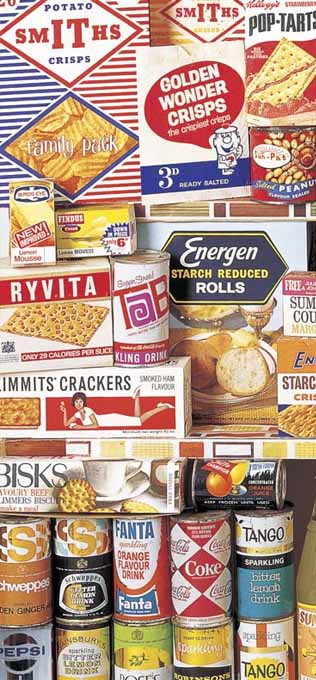
Subscribe to our Newsletters
Join the conversation
Be the first to receive news about our exhibitions, workshops and offers.
You can unsubscribe at any time!
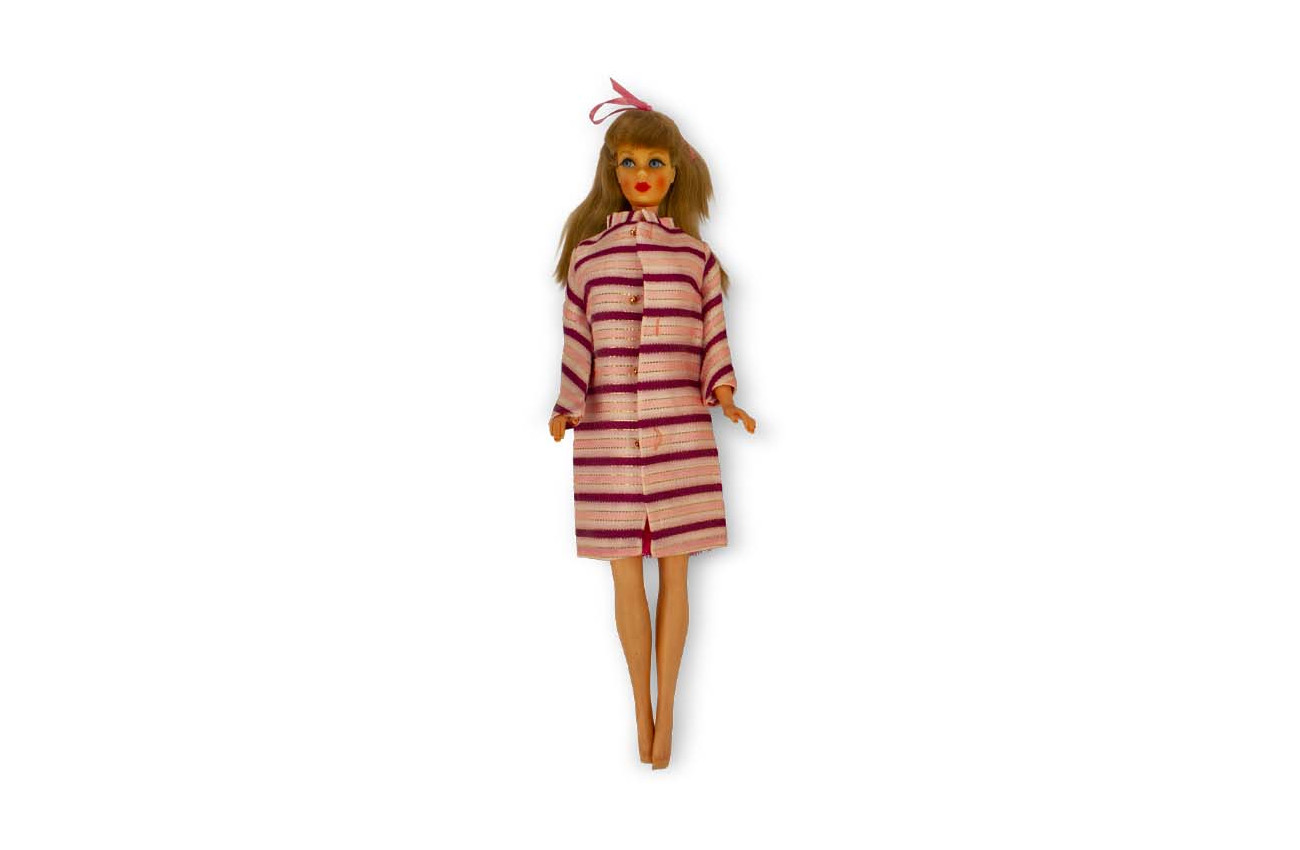
Barbie was a fashion doll manufactured by American toy company Mattel, Inc. Barbie was launched in 1959 and Ken in 1961. Ruth Handler, the creator of Barbie wanted to create a line of toys for girl children that were not infants, the only options on the market at the time. The dolls are as controversial as they are popular, with much debate raging over Barbie’s appearance across the decades. The first live-action Barbie film, 'Barbie' aired on 21st of July 2023.
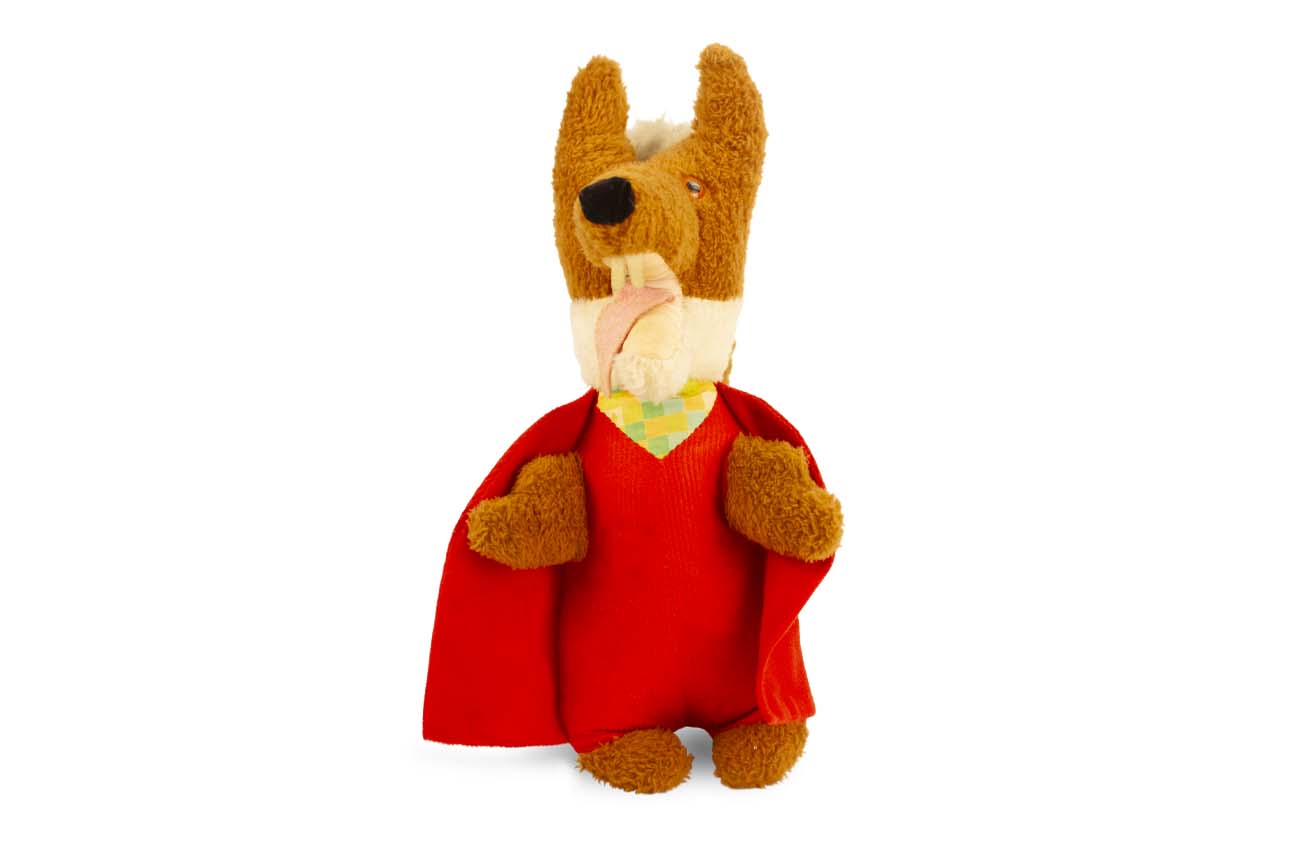
Basil Brush
Basil Brush is a fictional red fox portrayed primarily by a glove puppet. He first appeared in The Three Scampies in 1962 on daytime British children's television. Basil is created by Peter Firmin and voiced by Ivan Owen
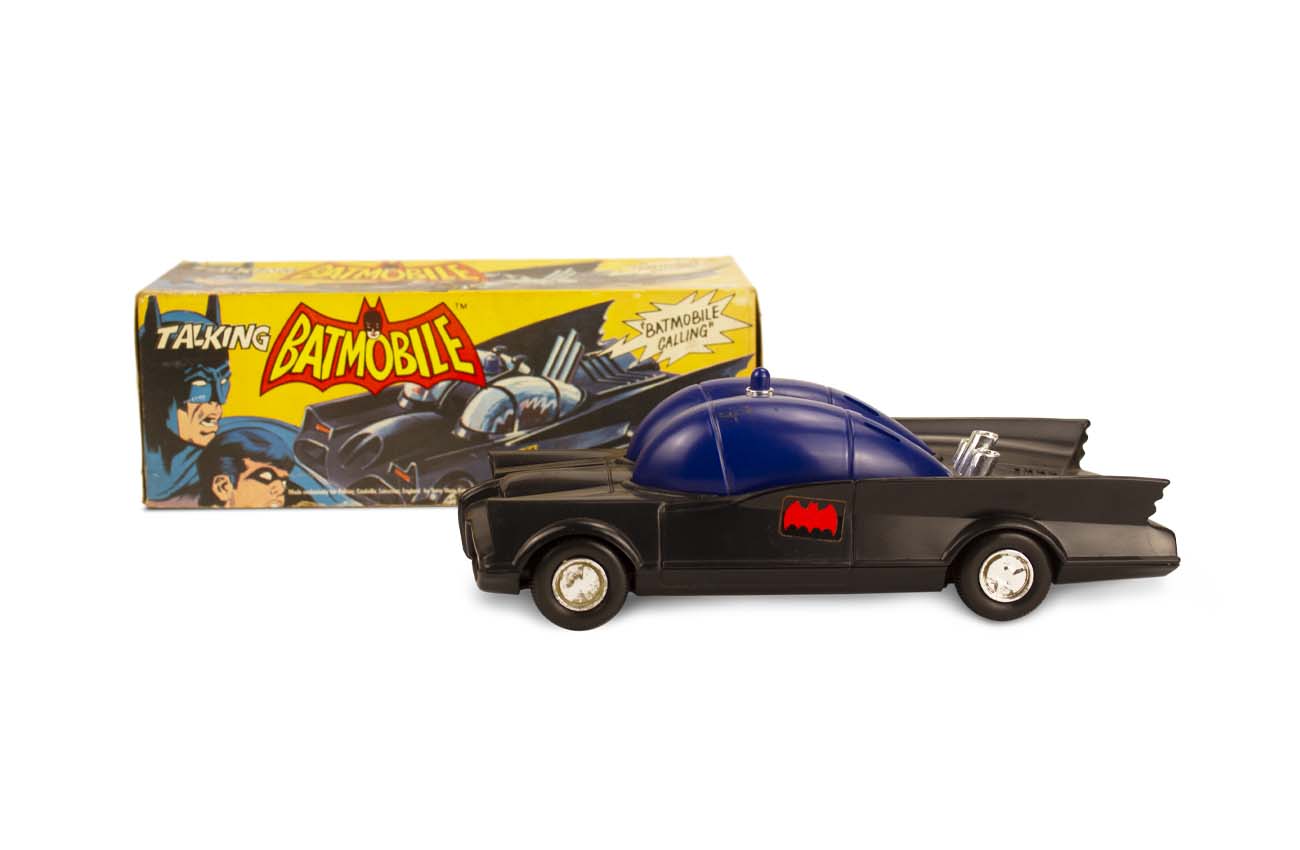
Batman is first shown driving a red car in his debut story in Detective Comics in 1939. The name "Batmobile" was not applied to Batman's automobile until 1941, and then popularised by the 1966 - 1968 Batman television series. This particular model is Palitoy's Tomy Talking Batman Batmobile from 1977.
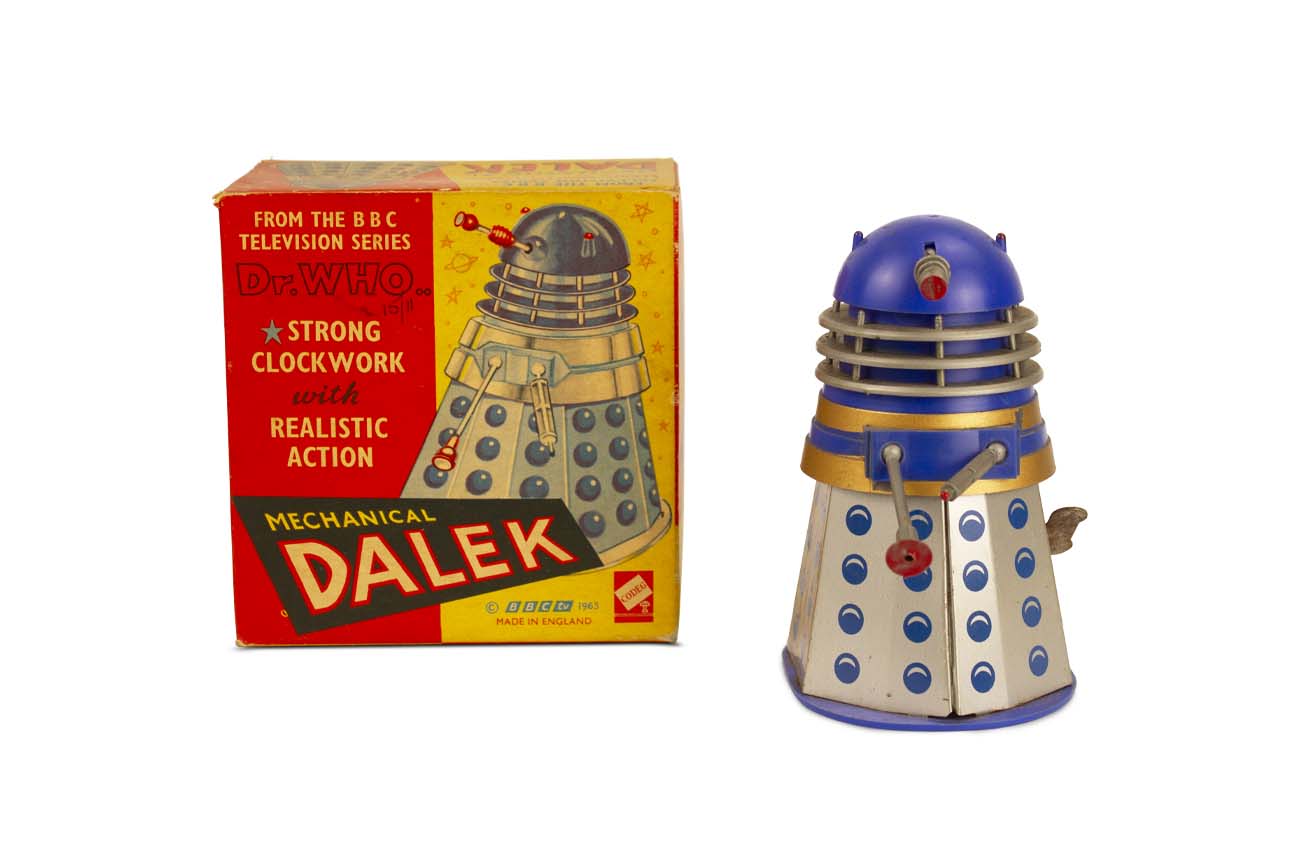
The Dalek toy comes from the second Doctor Who series"The Daleks" in 1963. They were very successful and led to a 'Dalekmania' in the 1960s. The very first Dalek toy was released in 1964; it was battery-operated and could glide on wheels whilst flashing its headlight.
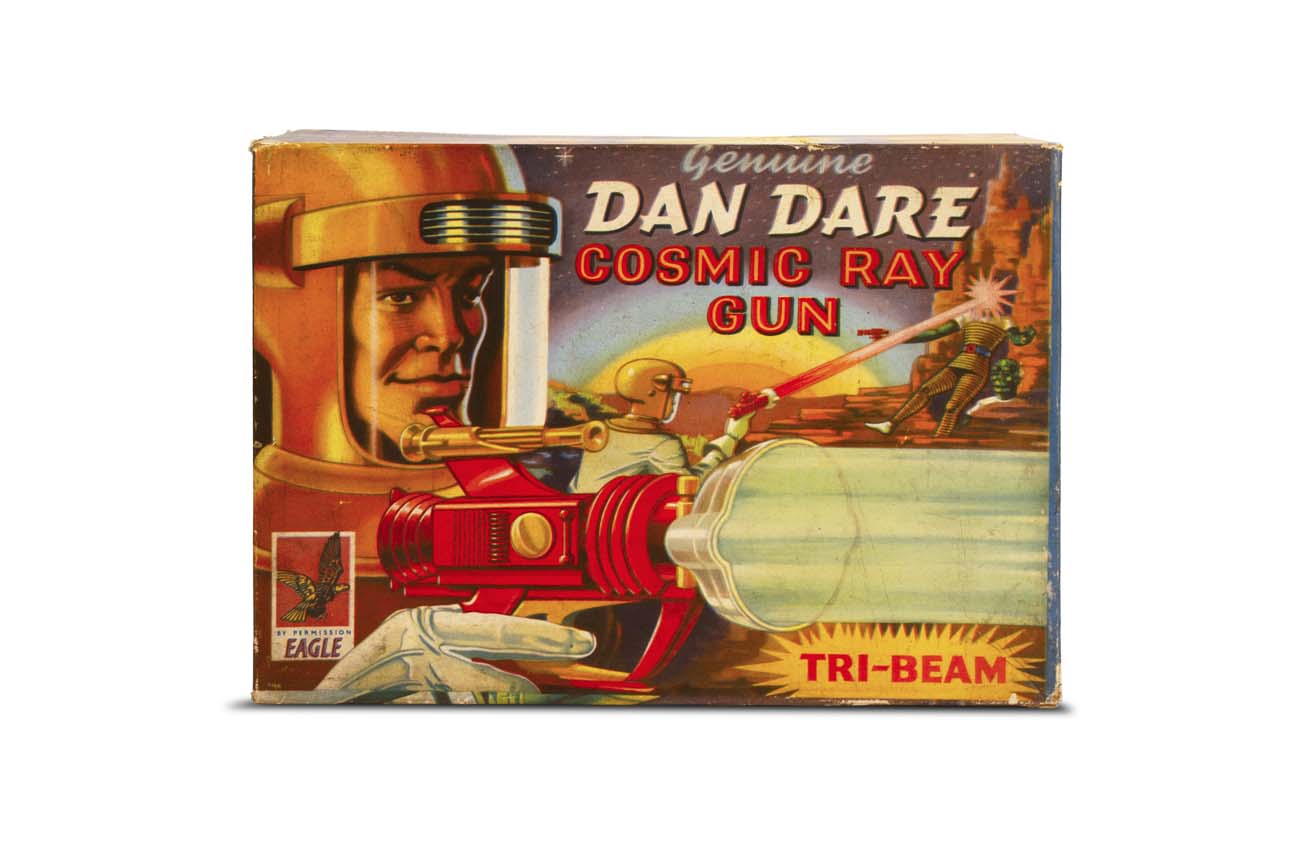
Dan Dare Gun
The Dan Dare Cosmic Ray Gun from the 1950s is manufactured by Palitoy, a British toy company. Dan Dare is a British science fiction comic hero created by Frank Hampson. He was in the Eagle comic series Dan Dare, Pilot of the Future from 1950 to 1967.
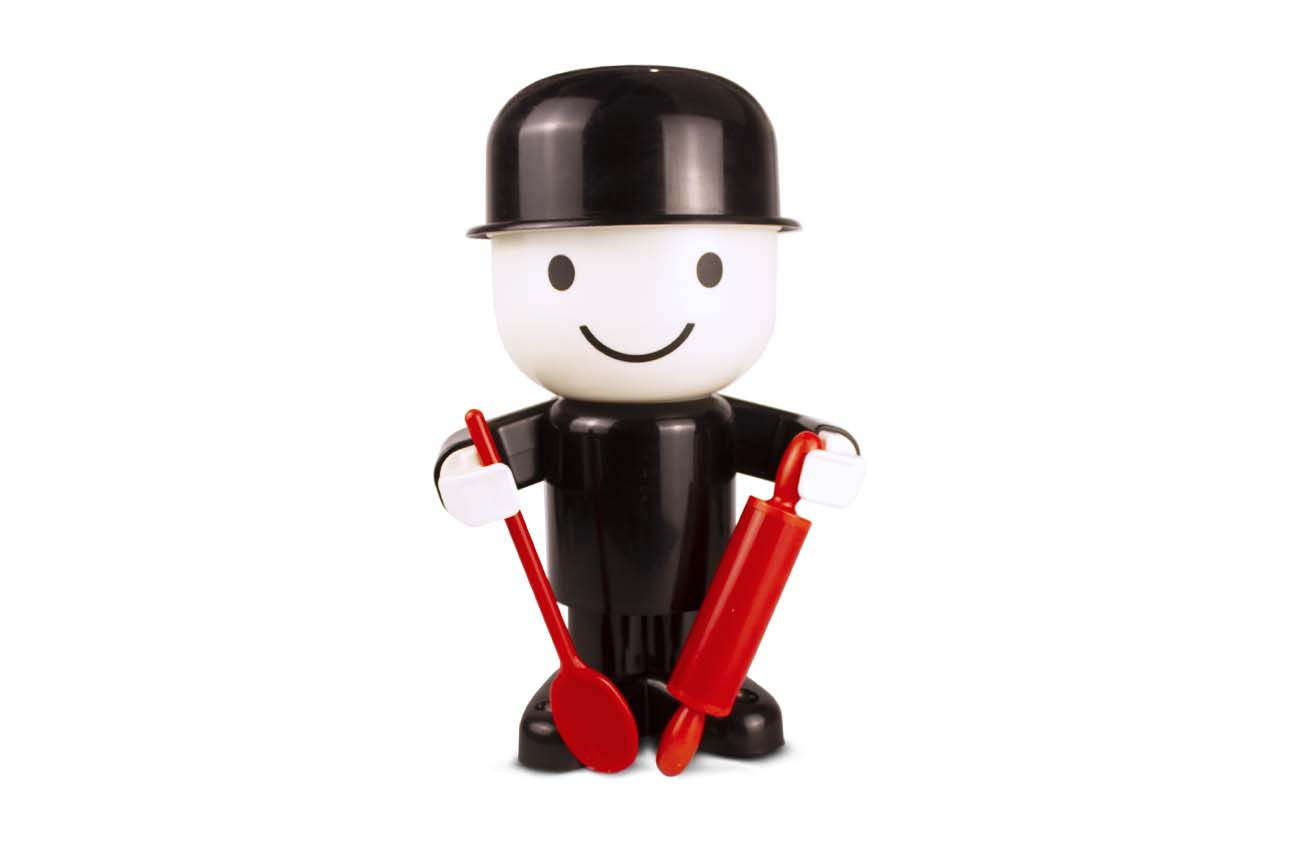
Fred Homepride Figure
Fred the flour grader is synonymous with Homepride, a British flour manufacturer. Fred was introduced in 1964 through a series of TV advertisements with the message "Great British baking since 1964". He has since then become a collector's item.
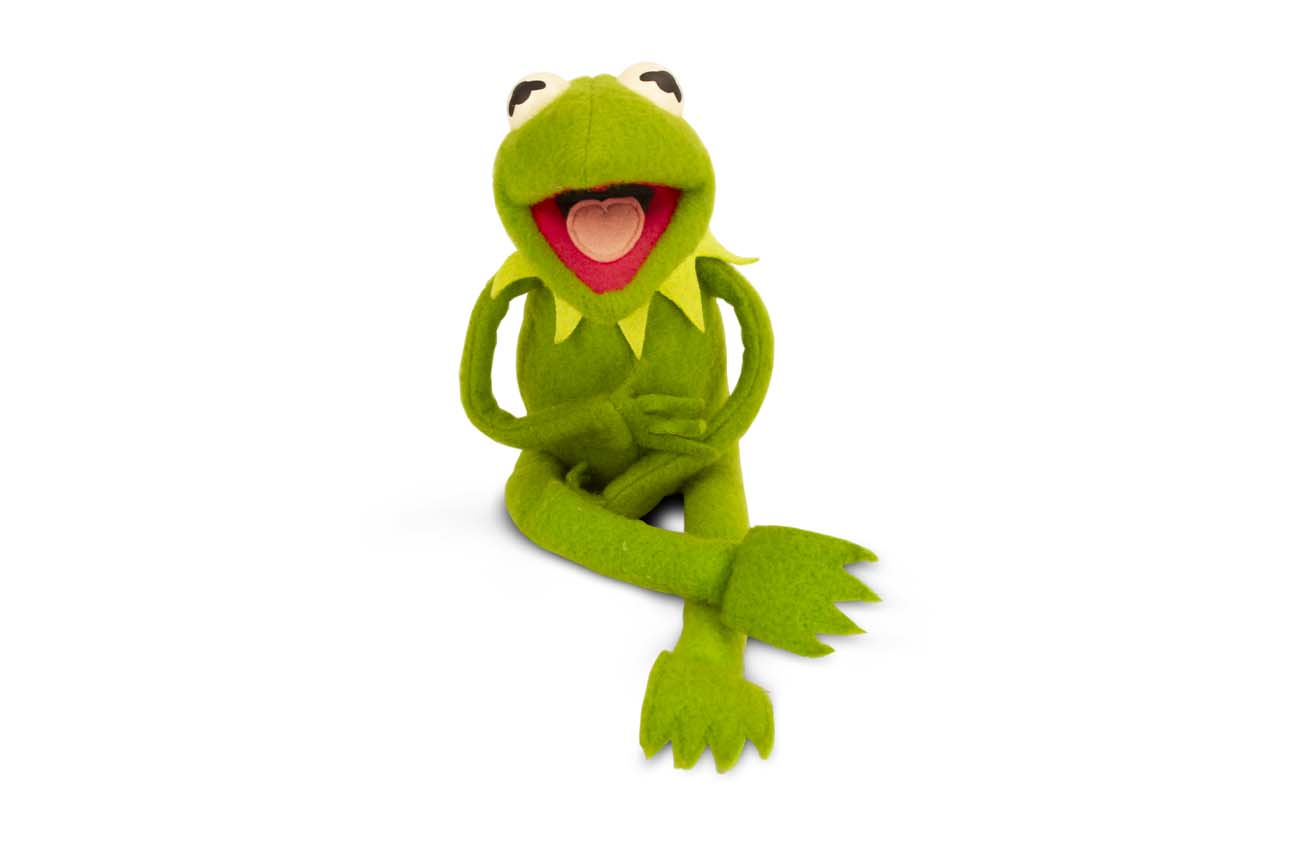
Muppets Kermit Toy
The Muppets are American puppet characters created by Jim Henson in 1955. They originated in the television series Sam and Friends, then on late-night talk shows and advertising during the 1960s. The Muppets began appearances on Sesame Street from 1969 to the present, and increased their popularity through The Muppet Show (1976-1981).

Glam Rock Platforms
The 1970s in Britain saw the rise of Glam Rock, blending rock music with androgynous styles and extravagant makeup for all genders. Pioneers like Marc Bolan and David Bowie redefined masculinity by popularising shiny synthetic fabrics, bold colours and the platform shoe.
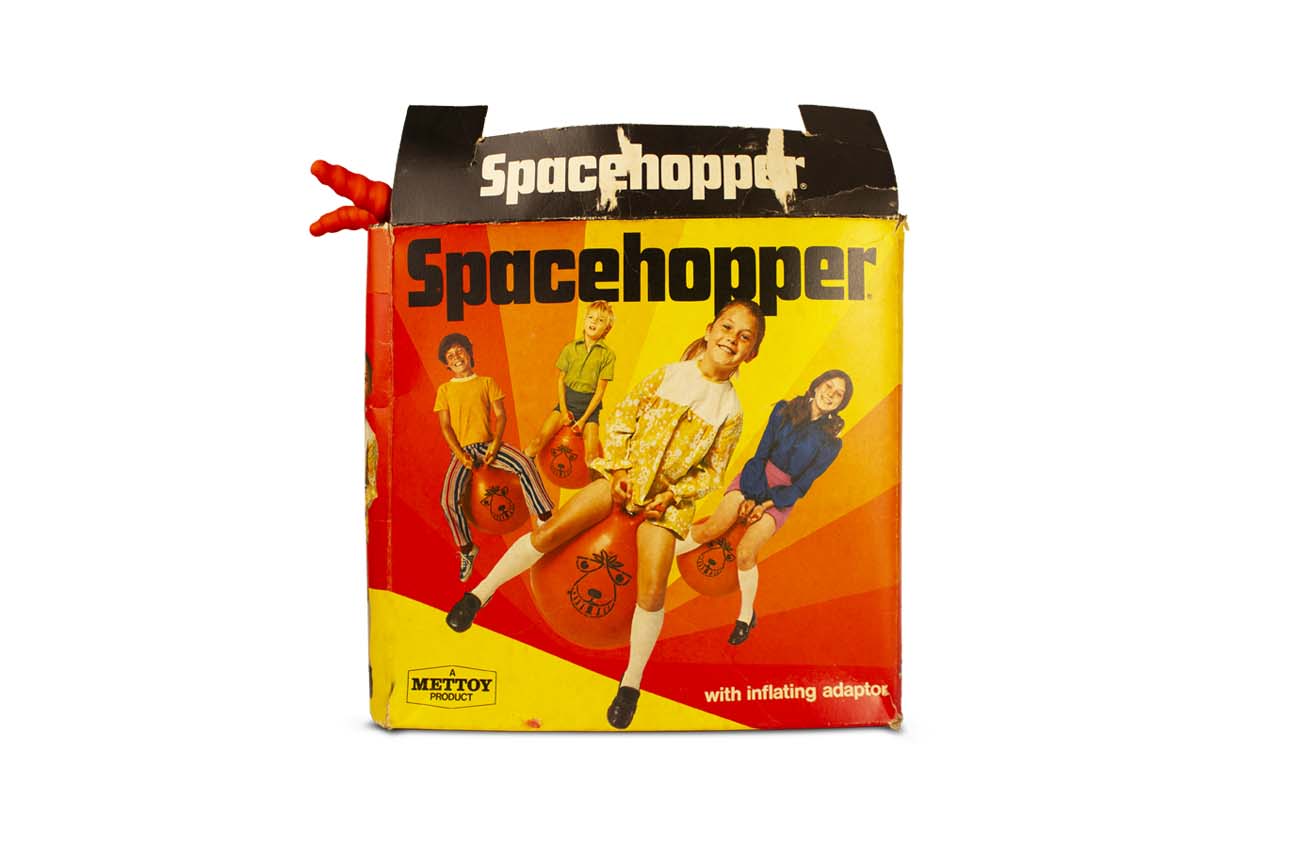
Space Hopper
Considered a symbol of the 1970s, the Space Hopper was manufactured in the UK by Mettoy. It is a children's toy with handles that allow one to sit and hop on it without falling. It was introduced in 1969.
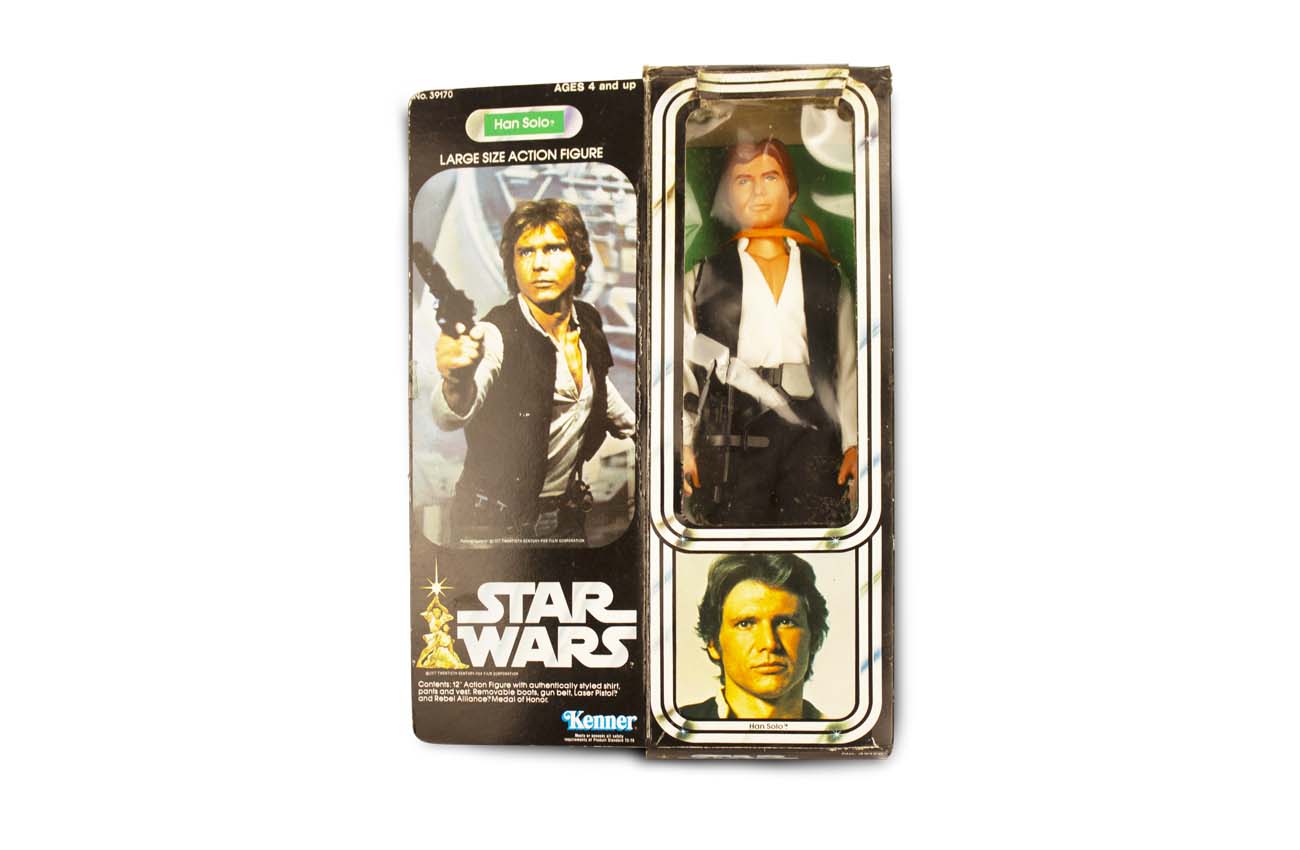
Star Wars Figure
Star Wars the film was released in 1977, written and directed by George Lucas. The film proved a success instantly after its release and Kenner Products was the first company to gain license to produce Star Wars action figures in 1976. Despite being underprepared for Christmas 1978, Kenner Products still earned $100 million through sales of Star Wars action figures and accessories.
The first figure for adoption is Han Solo.
£50.00 (Each)

Thunderbirds Scale Model
Thunderbirds is a British science fiction television series created by Gerry and Sylvia Anderson. Merchandise for the show was so popular that some British commentators dubbed the 1966 end-of-the-year shopping season "Thunderbirds Christmas". The Thunderbird toys are one example of the merchandise.
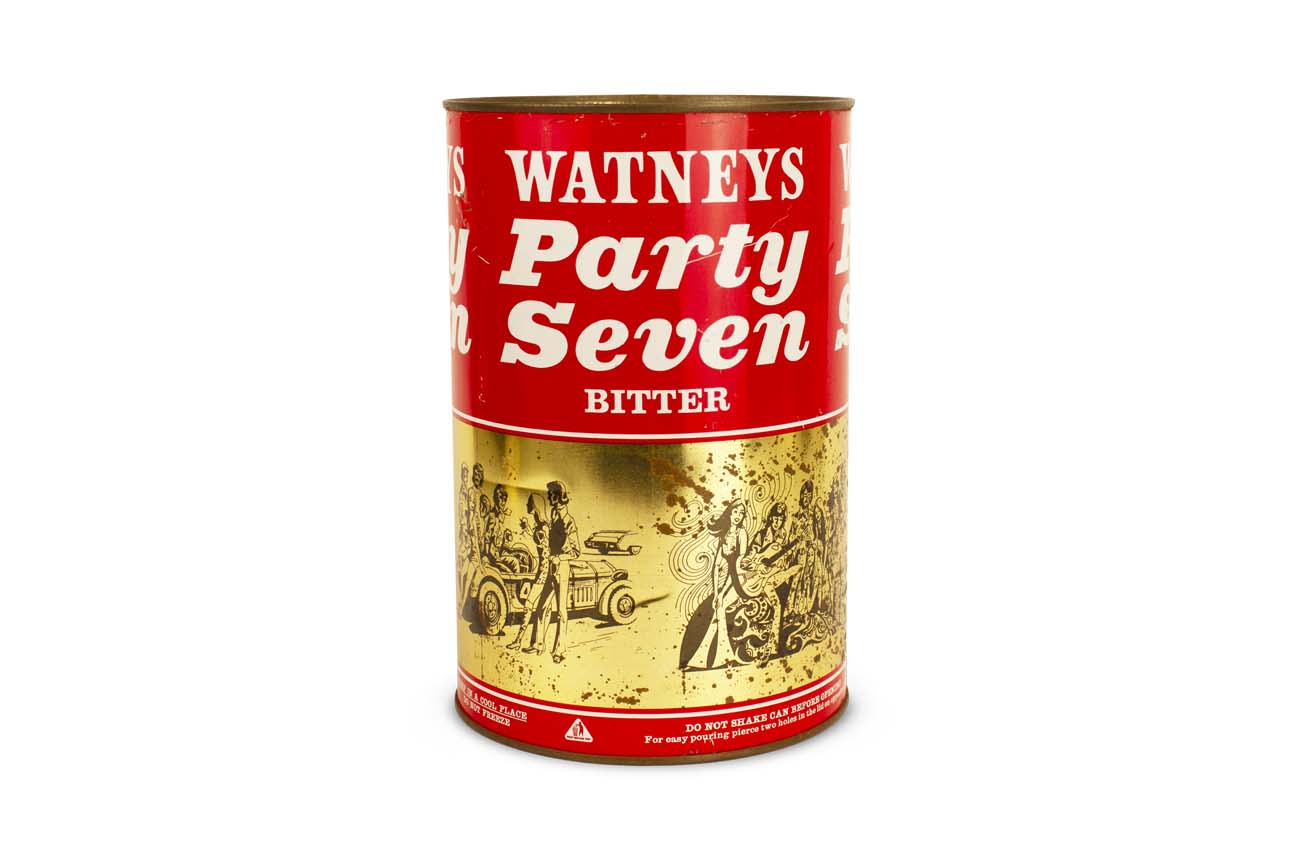
Watneys Party Seven
Watneys Party Seven was a popular party beer for the youth of the 1970s. It was a giant can of ale that needed to be opened with two holes at the top, one to let air in and one to let the beer out . It is notorious for its bland taste, but was a staple at parties.
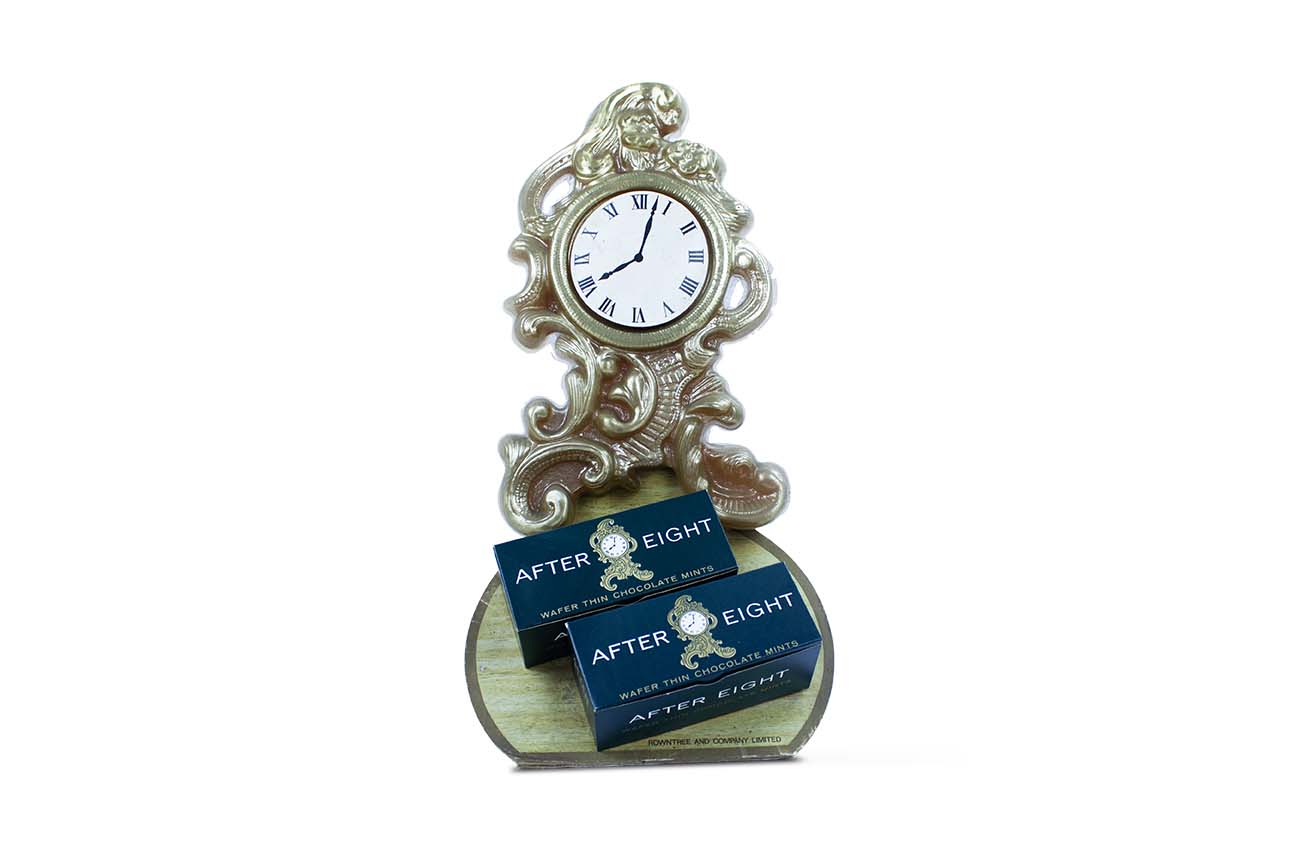
After Eight Display
Description
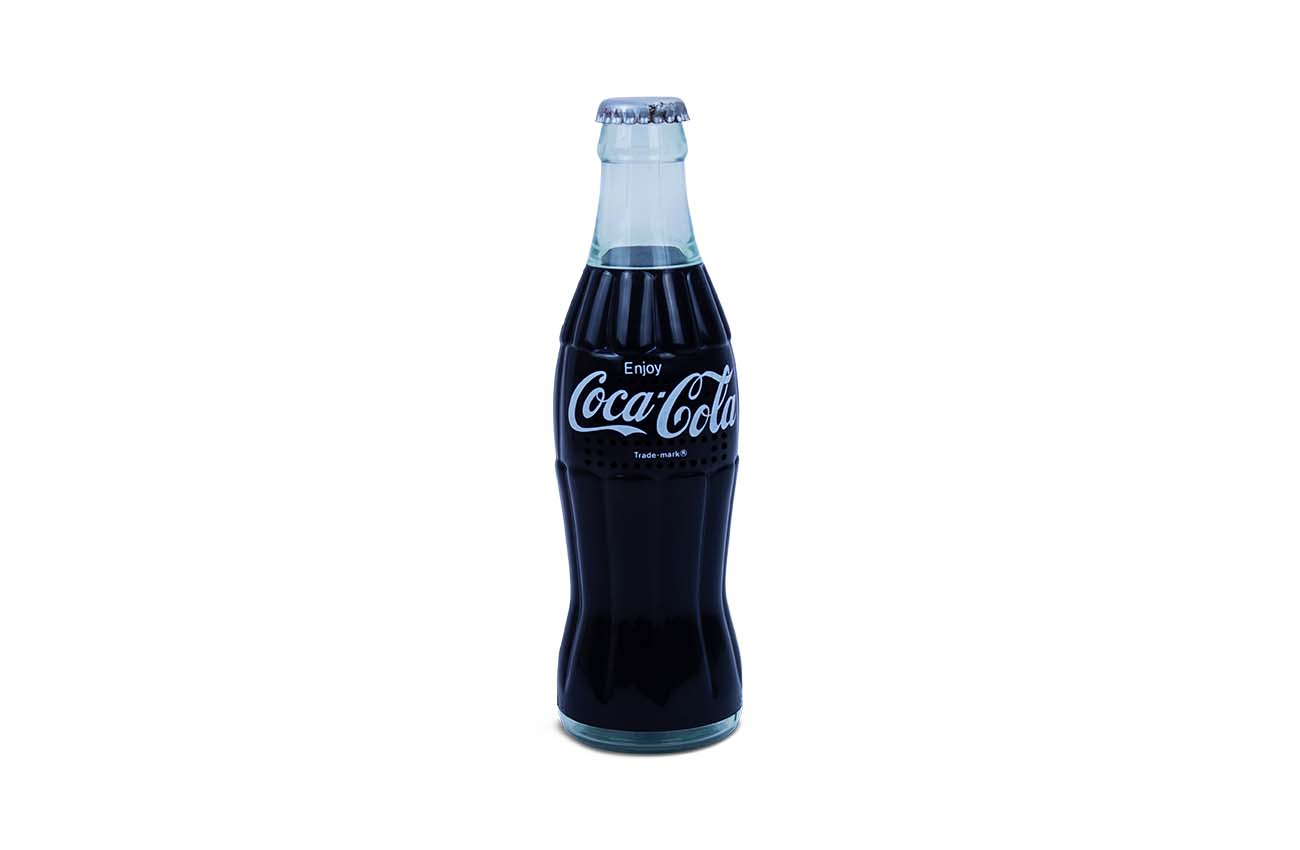
Coca-Cola Bottle Radio
Coca Cola has been licensing their brand on radios since the 1930s, however it took them 40 years to produce a commercially popular version, like this 1970s radio. The radio bottles could be turned on by twisting the bottle cap, and the station could be changed by twisting the base. Today these little radios are among the many collectable items Coca-Cola lovers enjoy finding.
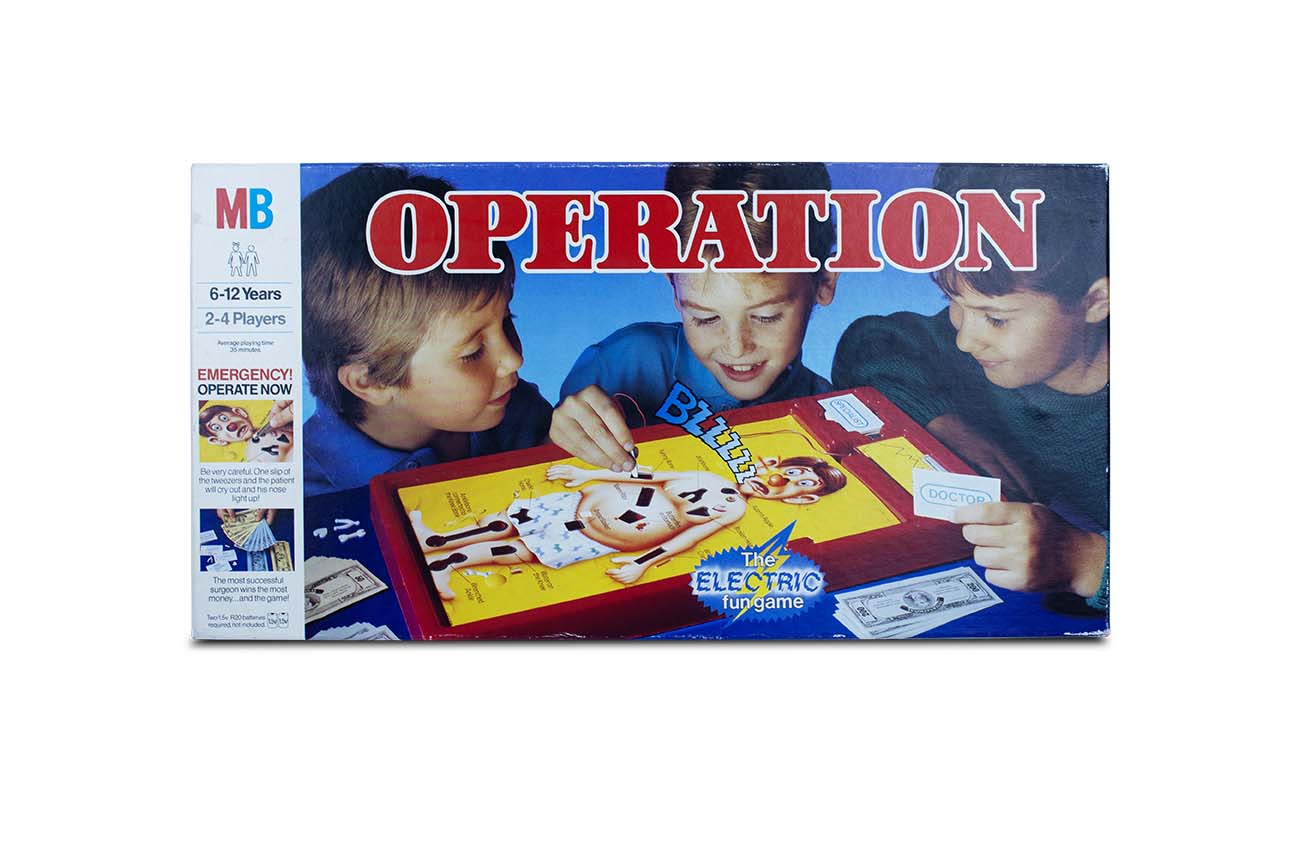
Operation Board Game
This is a 1993 edition of the game ‘Operation’, released by the Milton Bradley Company (MB). It was conceived in 1964 by John Spinello, an industrial design student from the United States, who sold the rights to the leading toy designer Milton Glass for $500 and a promise of a post-graduation job, the latter of which was left unfulfilled. As with the old-fashioned ‘electrified wire loop game’, Operation revolves around suspense and requires steady hands: players must carefully extract small plastic pieces from cavities in a ‘patient’ printed upon an ‘operating table’ without setting off a jarring ‘buzz’. This copy of Operation speaks to the longevity of the game which has remained a household name for generations.
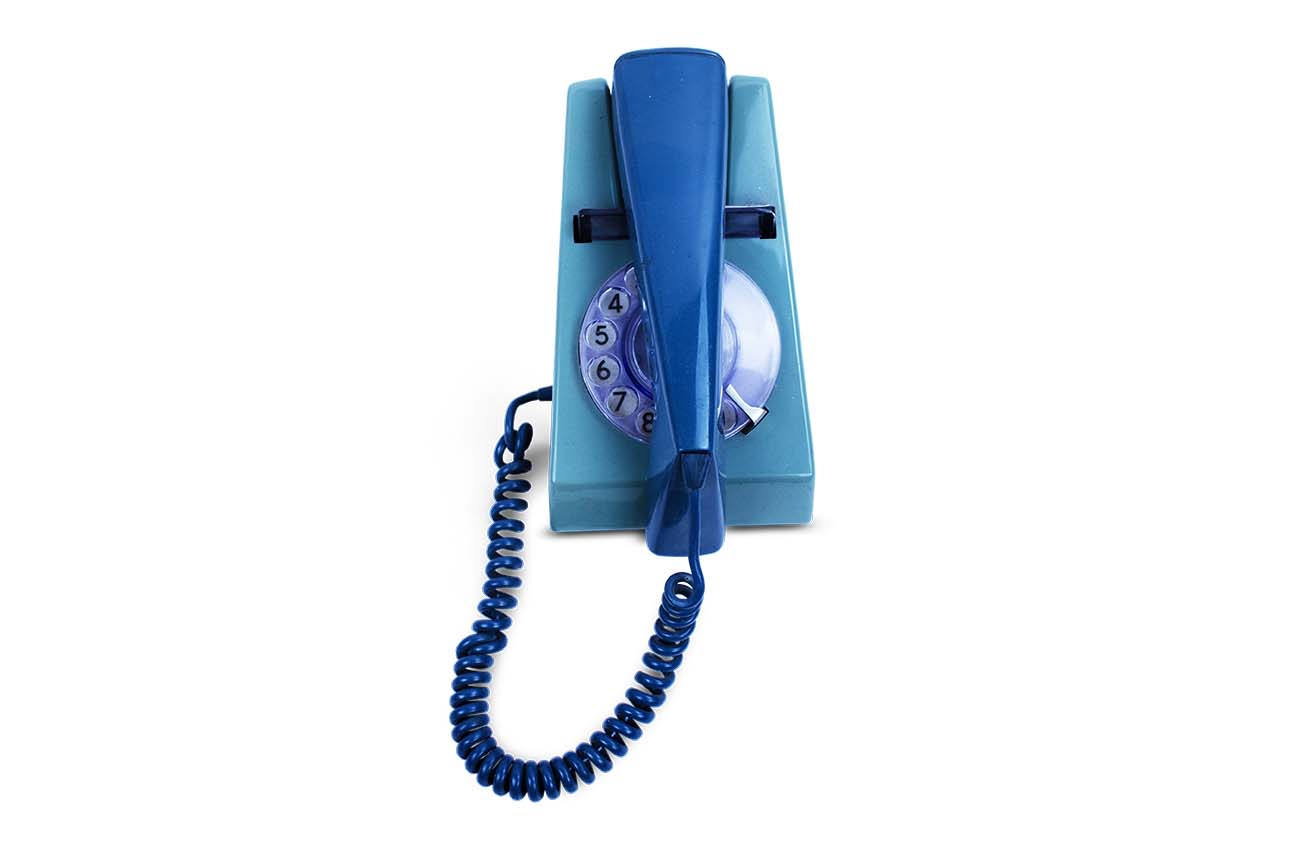
The Tone Ringer Illuminated Model Phone, or Trimphone, was highly desirable when it became publicly available in 1965 due to its sleek modern design. The phone’s elegant styling was enhanced by features such as an electronic warble ringer, rather than a traditional bell, and an illuminated dial. The Trimphone was designed by Martyn Rowlands and came in three standard colours green, grey and blue. The two-tone blue example at the Museum of Brands is a model 722 dating from 1971, it has the same external appearance as the earlier 712 model but internally the electronics were updated for an improved performance.
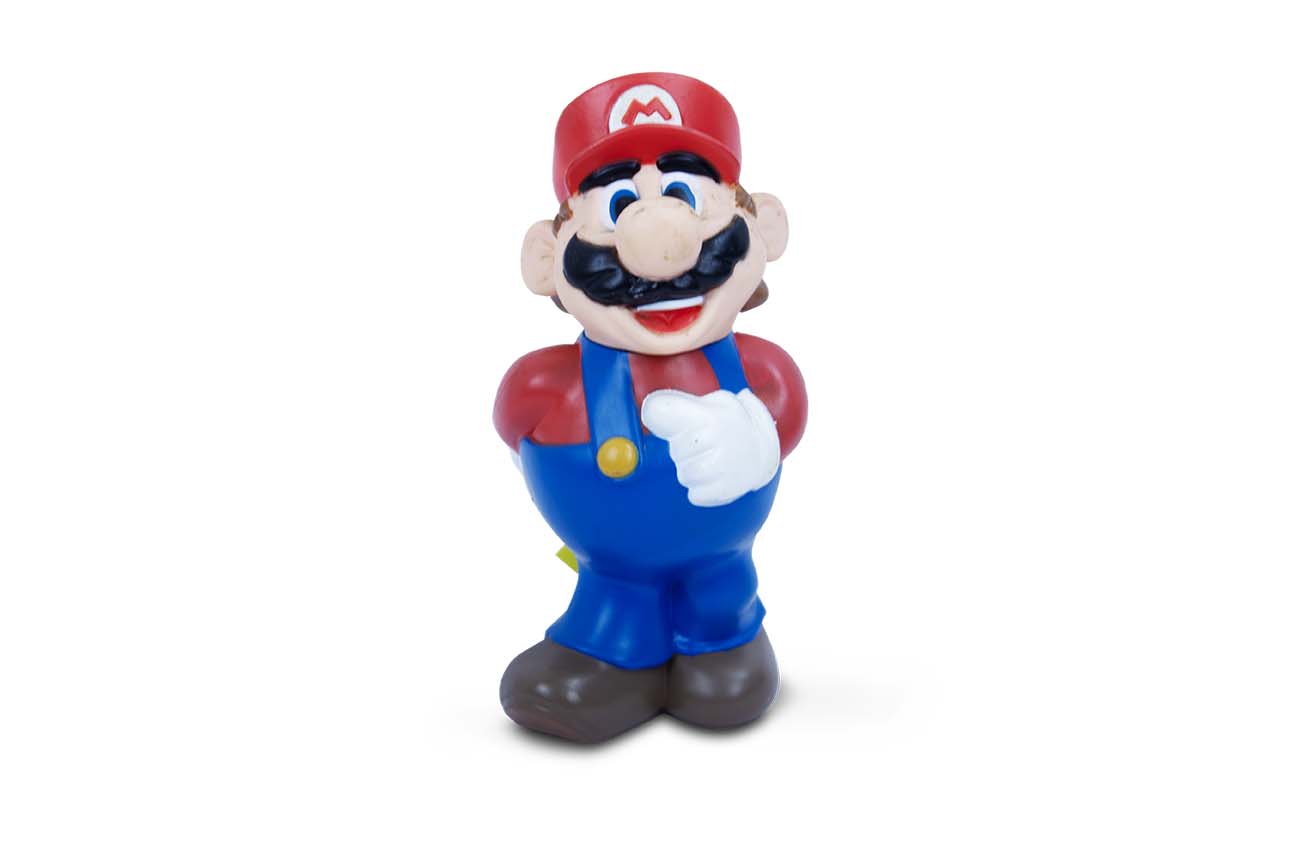
Mario Figure
In 1992, Grosvenor of London launched the Mario bubble bath bottle following the UK release of the widely successful video game ‘Super Mario World’. Grosvenor, founded by Robert Beecham, sought to seize the opportunities from the advent of widespread licensing, and at its peak in the mid-to-late ‘90s, the company was releasing over 300 novelty products annually. Every bubble bath figurine resembled an animated character from popular culture, serving as a budget-friendly alternative to conventional toys. These bubble bath bottles were a memorable part of the childhoods of a generation and remain sought-after collectibles today.
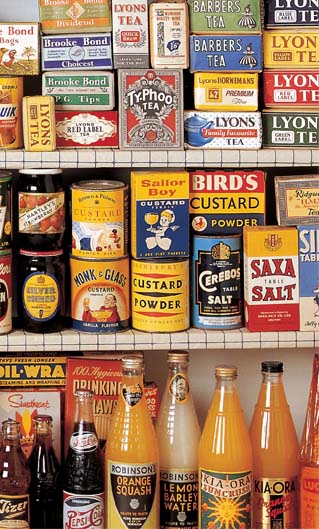
You can unsubscribe at any time.
To provide the best experiences, we use technologies like cookies to store and/or access device information. Consenting to these technologies will allow us to process data such as browsing behavior or unique IDs on this site. Not consenting or withdrawing consent, may adversely affect certain features and functions.
You are using an outdated browser. Please upgrade your browser .
Moscow International Business Center (Moscow City)
- Guide to Russia
What can you do at Moscow City?
- Dine in style: Moscow City is home to 100+ cafes and restaurants, including Europe’s highest restaurant and ice-cream shop
- See Moscow like never before: Ascend to one of Moscow City’s observation decks for an unparalleled panorama of Moscow
- Admire world-class architecture: Each of Moscow City’s skyscrapers has distinctive architecture and design
- Learn something new: Visit the Museum of High-Rise Architecture in Moscow or the Metro Museum
Moscow City is a multifunctional complex in the west of Moscow, which has come to represent the booming business of Russia’s capital. Its skyscrapers enrich Moscow’s skyline, contrasting the medieval cupolas and Stalinist high-rises. Visitors to Moscow City can enjoy entertainment high in the sky, as the complex is home not just to offices, but to restaurants, cinemas, viewing platforms, and museums.
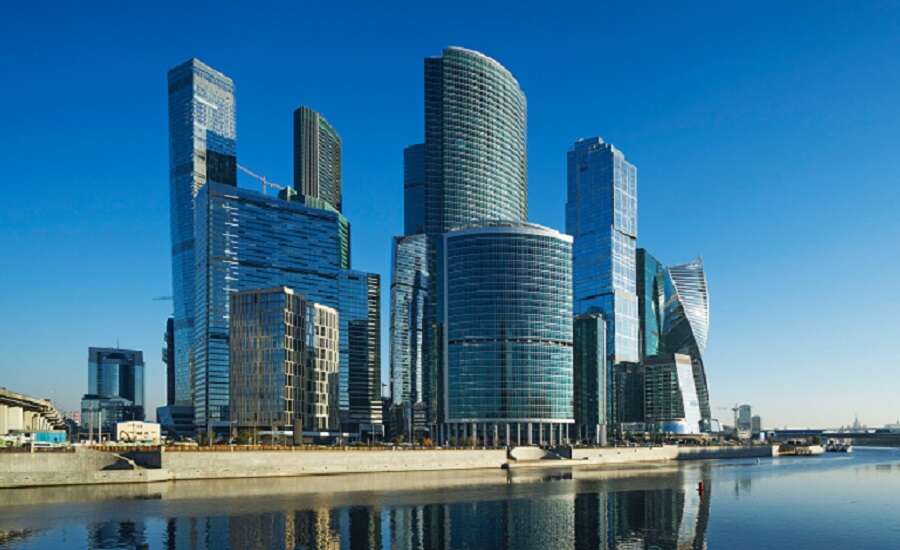
Photo by Alex Zarubi on Unsplash
History of Moscow City
Moscow City was first conceived in 1991 by honoured Soviet architect Boris Tkhor, who proposed to construct a business center in Moscow. It would be complete with gleaming skyscrapers rivalling those of New York and London, to reflect the new life and growing ambitions of post-Soviet Russia.
The chosen site was a stone quarry and disused industrial zone in western Moscow, in between the Third Ring Road and Moskva River. Initially, the territory was divided into 20 sections arranged in a horseshoe shape around a central zone. The skyscrapers would increase in height as they spiralled around the central section, with shorter structures built on the waterfront to give the taller buildings behind a view of the river.
Architect Gennady Sirota, who contributed to iconic projects such as the Olympic Sports Complex on Prospekt Mira, was selected as the chief architect, and many other world-famous architects were attracted to Moscow to realise their visions in Moscow City.
What can you see and do at Moscow City?
Where Moscow’s cityscape was once dominated by Stalin’s Seven Sisters skyscrapers , this is no more. Moscow City is home to eight of Russia’s ten tallest buildings, six of which exceed 300 metres in height. More buildings are still under construction there today, including the One Tower (which will be Europe’s second-tallest building). Once completed, Moscow City will comprise more than 20 innovative structures.
Each of Moscow City’s skyscrapers was designed by its own architect, lending the cluster of skyscrapers a unique appearance. Aside from being a site of architectural wonder, Moscow City is a place for leisure and entertainment with over 100 cafes and restaurants, exhibition spaces, cinemas, viewing platforms, and more.
Photo by Nikita Karimov on Unsplash
Federation Tower
- East Tower: 374m, 97 floors; West Tower: 243m, 63 floors
- Completed in 2017
- Architects: Sergey Tchoban and Peter Schweger
The East Federation Tower is the tallest building in Moscow, and the second-tallest building in Europe after the Lakhta Centre in St Petersburg. Visitors can enjoy a luxurious meal of seafood, truffles or steak at restaurant ‘Sixty’ on the 62nd floor of the West Tower, or visit Europe’s highest observation deck, ‘Panorama 360’, on the 89th floor of the East Tower.
Did you know? The ice cream and chocolate shop on the 360 observation deck are the highest in the world!
- South Tower: 354m, 85 floors; North Tower: 254m, 49 floors
- Completed in 2015
- Architect: Skidmore, Owings & Merrill LLP
The South OKO Tower is the third-tallest building in Russia and Europe. Here, you can visit ‘Ruski’ to dine on hearty Russian cuisine cooked on a real Russian stove, and have a drink in the ice bar. Alternatively, visit restaurant, nightclub and performance space ‘Birds’; the restaurant is the highest in Europe, situated on the 86th floor roof terrace alongside an observation deck. The OKO Towers are also home to karaoke club ‘City Voice’.
Did you know? Underneath OKO Towers is the largest underground parking in Europe, with 16 levels and 3,400 parking spaces.
Mercury Tower
- 339m tall, 75 floors
- Architects : Mikhail Posokhin, Frank Williams, Gennady Sirota
Another multifunctional skyscraper, which was designed as the first truly ‘green’ building in Moscow. The Mercury Tower has a distinct geometric shape and copper-coloured glazing, and was the tallest building in Europe upon completion. Visit ‘More i myaso’ (Sea and meat) on the first floor of the tower to enjoy European and Mediterranean cuisine whilst surrounded by greenery. On the 2nd and 40th floors a modern art gallery, the ‘ILONA-K artspace’, has just opened.
City of Capitals
- Moscow Tower: 302m, 76 floors; St Petersburg Tower: 257m, 65 floors
- Completed in 2009
- Architect: Bureau NBBJ
The unique geometric design of the City of Capitals towers resembles stacks of rotating blocks, and is rooted in Constructivism of the early Soviet period (many Soviet Constructivist buildings can be found in Moscow). Visitors to the Moscow Tower can enjoy a range of cuisines – traditional Italian dishes on the summer terrace of ‘Tutto Bene’, Panasian cuisine in the tropical luxury of the ‘Bamboo Bar’ on the 1st floor’, and poke or smoothie bowls at ‘Soul in the Bowl’ cafe on the 80th floor.
Tower on the Embankment
- Tower A: 84m; Tower B:127m; Tower C: 268m, 61 floors
- Completed in 2007
- Architects: Vehbi Inan and Olcay Erturk
After completion, the Tower on the Embankment was the tallest building in Europe, and is now the 13th tallest. It houses the headquarters of several large Russian and international companies, including IBM and KPMG. There are two cafes located on the 1st floor of Tower C – self-service café ‘Obed Bufet’ (Lunch Buffet) and Bakery Chain ‘Khleb Nasushchny’ (Daily Bread).
Evolution Tower
- 255m tall, 54 floors
- Architects: Philip Nikandrov and RMJM Scotland Ltd
Evolution is Moscow City’s most recognisable tower, and the 11th tallest building in Russia. Its façade is a true architectural marvel, comprising continuous strips of curved glazing spiralling high into the sky. According to the architect, Philip Nikandrov, the spiral shape of the tower honours centuries of architectural design in Russia, from the onion domes of St Basil's Cathedral to Vladimir Shukhov’s Tatlin Tower, a masterpiece of Constructivist design. Outside the Evolution tower is a landscaped terrace and pedestrian zone descending to the Presnenskaya Embankment, which was also designed by Nikandrov.
Did you know? Moscow’s largest wedding palace was supposed to be built on the site of the Evolution tower, though the project was abandoned.
- 239m tall, 60 floors
- Completed in 2011
Imperia’s interesting design has a curved roof and an arched glass façade. Inside the tower are various cafes including ‘City Friends’ for all-day breakfasts and light lunches, ‘Mama in the City’ for simple meals of Russian cuisine, and ‘abc kitchen’ for European and Indian-inspired dishes. Alternatively, visit ‘High Bar’ on the 56th floor for cocktails with a view. In Imperia you’ll also find the Museum of High-Rise Construction in Moscow (suitably located on the 56th floor), and the Camera Immersive Theatre.
Did you know? Inside Vystavochnaya metro station is the Metro Museum , dedicated to the history of the beautiful Moscow Metro!
- 130m tall, 26 floors
- Completed in 2001
- Architect: Boris Tkhor
Tower 2000 was Moscow City’s first tower. It stands on the opposite bank of the Moskva River, and houses a viewing platform from which visitors can admire an unparalleled panorama of Moscow City. The Bagration Bridge reaches across the river from the tower to Moscow City, and underneath are piers from where you can take boat trips.
Photo by Alexander Popov on Unsplash
Afimall is Moscow’s largest entertainment and shopping complex, home to 450 shops, cafes and restaurants, a cinema, and a virtual-reality game park. The shopping centre is located in the central section of Moscow City, and a cinema and concert hall are currently under construction there.
What’s nearby?
Sechenov Botanical Gardens: The botanical gardens of the First Moscow State Medical University was created for students’ training and research in 1946. Today it is open for free visits, and is home to a large arboretum.
Park Krasnaya Presnya: This park belonged to the Studenets estate of the Gagarin princes. It is a monument of 18th and 19th century landscaping, with Dutch ponds, ornate bridges, and tree-lined alleys. There are also sports facilities, sports equipment rental, and cafes.
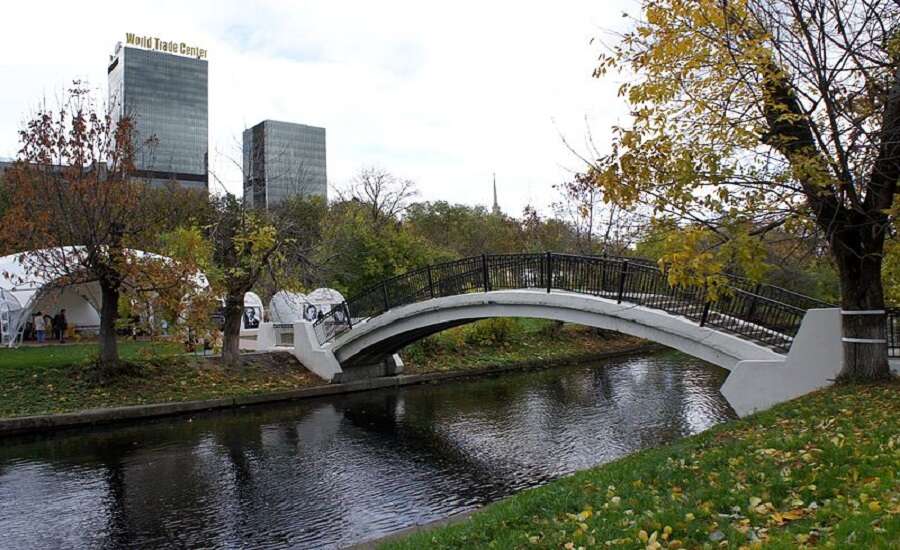
Photo by Akkit on Wikipedia
Essential information for visitors
Website: https://www.citymoscow.ru/
Email: [email protected]
Phone: +7 (495) 730-23-33
Nearest metro: Mezhdunarodnaya (closest to the skyscrapers), Delovoy Tsentr (underneath Afimall), Vystavochnaya (closest to Expocentre)
Related Tours
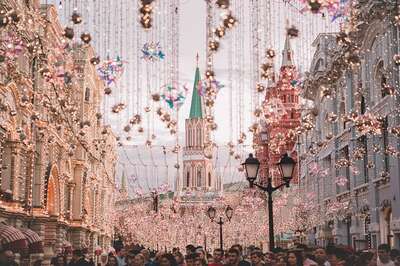
Moscow - St. Petersburg 3-star cruise by Vodohod
This is our most popular cruise covering Moscow and St. Petersburg and all of the significant towns between these 2 cities. Besides the Two Capitals, you will visit the ancient towns of Uglich, Yaroslavl and Goritsy, the island of Kizhi, and Mandrogui village.
Cruise Ship
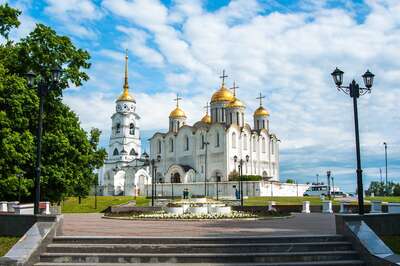
Two Capitals and the Golden Ring
This tour covers the best sights of Moscow and St. Petersburg along with a trip to the Golden Ring - a group of medieval towns to the northeast of Moscow. Ancient Kremlins, onion-shaped domes and wooden architecture is just a small part of what awaits you on this amazing tour.
Accommodation
PRIVATE TOUR

Classic Moscow
This is our most popular Moscow tour that includes all the most prominent sights. You will become acquainted with ancient Russia in the Kremlin, admire Russian art in the Tretyakov Gallery, listen to street musicians as you stroll along the Old Arbat street, and learn about Soviet times on the Moscow Metro tour.
Our travel brands include

Express to Russia
Join us on Facebook
We invite you to become a fan of our company on Facebook and read Russian news and travel stories. To become a fan, click here .
Join our own Russian Travel, Culture and Literature Club on Facebook. The club was created to be a place for everyone with an interest in Russia to get to know each other and share experiences, stories, pictures and advice. To join our club, please follow this link .
We use cookies to improve your experience on our Website, and to facilitate providing you with services available through our Website. To opt out of non-essential cookies, please click here . By continuing to use our Website, you accept our use of cookies, the terms of our Privacy Policy and Terms of Service . I agree
- Skip to primary navigation
- Skip to main content
- Skip to primary sidebar
- Skip to footer
TravelAwaits
Our mission is to serve the 50+ traveler who's ready to cross a few items off their bucket list.
19 Unique And Fabulous Experiences In Moscow

- Destinations
Thinking of visiting Russia? When visiting such a famous city, one must, of course, visit the iconic landmarks first. Moscow has plenty of those, most of them in the center of the city, which is very well-planned for tourists. Once you’ve seen the sights that are on most travelers’ lists, it’s time to branch out and visit some of the lesser-known sites, and there are some fascinating places to see and things to do.
I know this list is long, but I just couldn’t help myself. You probably won’t have the time to see them all. But that’s okay. Just scroll through the list and choose what sounds the most interesting to you. Where possible, make sure to book in advance, as things can get crowded, especially during high season.

1. The Red Square, Kremlin, And Surroundings
Red Square (Krasnya Ploshad) is the heart and soul of Russia, and where much of the country’s history has unfolded. This is the most famous landmark in Moscow and indeed the whole country, it’s an absolute must-do! The square is always full of people and has a rather festive atmosphere!
Saint Basil’s Cathedral
This is the famous church with the rainbow-colored, onion-domed roof. The cathedral was commissioned in the 1500s by Ivan the Terrible and according to legend, the Tsar thought it was so beautiful, that he ordered that the architect’s eyes be cut out afterward, so he could never build anything more beautiful! He wasn’t called Ivan the Terrible for no reason!
Lenin’s Mausoleum
The “love-it-or-hate-it” of tourist attractions in Russia. A glass sarcophagus containing the embalmed body of Russian revolutionary, Vladimir Lenin. It may seem a bit bizarre to display the mummy of a person, but it has been there for almost half a century and the 2.5 million visitors who come each year, clearly feel the queuing and thorough body search are worth it, to be in Lenin’s presence.
Pro Tip: no photos and no loud talking are allowed inside the Mausoleum.
Eternal Flame
There is an Eternal Flame in honor of an unknown soldier on the left side of Red Square. The hourly changing of the guards is worth seeing.
The Kremlin is the official residence of the Russian president. You can see it from the outside, or you can take an excursion to one of the museums located inside. This is the biggest active fortress in Europe, and holds a week’s worth of attractions! Once behind the 7,332-feet of walls, there are five squares, four cathedrals, 20 towers, various museums, and the world’s largest bell and cannon to see. Worth a special mention is the Armory Chamber that houses a collection of the famous Faberge Eggs.
Pro Tip: You can only go inside the Kremlin if you are part of a tourist group.

2. Bolshoi Theatre
Bolshoi Theatre translates to “The Big Theatre” in Russian, and the building is home to both the Bolshoi Ballet and Bolshoi Opera — among the oldest and most famous ballet and opera companies in the world.
Pro Tip: It’s hard to get an inexpensive ticket, so if you’re reading well in advance of going to Moscow then try buying tickets on the official website . Last-minute tickets cost around $250 per person. If this is out of your budget, about an hour before a performance, you can try buying a ticket at the entrance from a reseller. Most can speak enough English to negotiate the price.
Tour the Bolshoi Theatre: You can take a group guided tour of the Bolshoi Theatre which focuses on the history and architecture of the theatre and behind the scenes. There’s an English language tour that lasts 2 hours and costs around $300 for a group of up to six.

3. Luxury Shopping At GUM And TSUM
Russia’s main department store, GUM, has a stunning interior that is home to over 100 high-end boutiques, selling a variety of brands: from luxurious Dior to the more affordable Zara. Even if shopping is not on your Moscow to-do list GUM is still worth a visit; the glass-roofed arcade faces Red Square and offers a variety of classy eateries. TSUM, one of the biggest luxury malls in town, is right behind the Bolshoi and GUM. It’s an imposing building with lots of history, and worth a visit just for its design and its glass roof.

4. Christ The Savior Cathedral
This is one of Russia’s most visited cathedrals and is a newer addition to the gorgeous array of Muscovite cathedrals, but don’t let its young age fool you. After perestroika, in the early 90s, the revived Russian Orthodox Church was given permission to build a cathedral on this site. It did the location honors and built the largest temple of the Christian Orthodox Church. The façade is as grand as you’d expect, but it’s the inside that will mesmerize you, with its domes, gold, gorgeous paintings, and decor!
The cathedral is located just a few hundred feet away from the Kremlin and was the site of the infamous Pussy Riot protest against Putin back in 2012.
Pro Tip: Bring a shawl to cover your hair as is the local custom.

5. Gorky Park
Moscow’s premier green space, Gorky Park (Park Gor’kogo) is the city’s biggest and most famous park. There is entertainment on offer here for every taste, from outdoor dancing sessions to yoga classes, volleyball, ping-pong, rollerblading, and bike and boat rental in summer. In winter, half the park turns into a huge ice skating rink. Gorky Park is also home to an open-air movie theater and the Garage Museum of Contemporary Art. There is also Muzeon Art Park, a dynamic contemporary space with a unique collection of 700 sculptures. It is located right in front of Gorky Park.
6. Sparrow Hills Park
If you take a walk from Gorky Park, along the Moscow River embankment, you’ll end up in the city’s other legendary park, Sparrow Hills. Although the park doesn’t offer as many activities as its hip neighbor, it has a great panoramic view of the city
Pro Tip: You can take a free walking tour to all of the above attractions with an English-speaking guide.

7. River Cruising
One of the best ways to experience Moscow, and see all the famous landmarks, but from a different angle, is from the Moscow River. Take a river cruise. Avoid the tourist crowds. There are little nameless old boats that do the cruise, but if you are looking for a more luxurious experience take the Radisson Blu cruise and enjoy the sights with some good food and a glass of wine.

8. Metro Hopping
Inaugurated in the 1930s, the Moscow Metro system is one of the oldest and most beautiful in the world. Started in Stalinist times, each station is a work of art in its own right. I’d recommend touring the stations between 11 a.m. and 4 p.m. This way, you’ll be able to properly see it without the crowds. Ideally, I’d recommend taking a tour with a knowledgeable guide with GuruWalk, who will tell you stories of forgotten stations and how the history of the country is interconnected with the metro development. If going by yourself, then I definitely recommend checking out: Mayakovskaya, Ploschad Revolutsii, Kievskaya, Kropotkinskaya, Kurskaya, and Novoslobodskaya stations.
Visit the free Moscow Metro Museum: For real train enthusiasts, located in the southern vestibule of Sportivnaya station is a small free museum. Here you can take a peek into the driver’s cabin, see a collection of metro tokens from different cities, and see different models of a turnstile, traffic lights, escalator, and more.

9. Moscow State University View
In his effort to create a grander Moscow, Stalin had seven skyscrapers built in different parts of town; they’re called the Seven Sisters. The largest of these buildings and the one with the best view is the main building of the Moscow State University. Although this is a little outside the city center, the view is more than worth it.

10. Izmailovsky Market
Mostly known for the city’s largest flea market, the district of Izmaylovo is home to a maze of shops where you can get just about anything, from artisan crafts to traditional fur hats, handcrafted jewelry, fascinating Soviet memorabilia, and antiquities. It’s also one of Moscow’s largest green spaces. There are often no price tags, so be prepared to haggle a bit. Head to one of the market cafes for a warming mulled wine before continuing your shopping spree.
The History of Vodka Museum is found here, and the museum’s restaurant is the perfect place to sample various brands of the national drink.
Once you’ve covered the more touristy spots, Moscow still has plenty to offer, and the places below will also be full of locals! So for some local vibes, I would strongly recommend the spots below!

11. Moscow City
With a completely different vibe, Moscow City (also referred to as Moscow International Business Center) is like a mini Dubai, with lots of impressive tall glass buildings. Here is where you’ll find the best rooftops in towns, like Ruski Restaurant, the highest restaurant both in Moscow City and in Europe. Moscow City is great for crowd-free shopping and the best panoramic views of the city.

12. Tretyakov Gallery
Tretyakov Gallery started as the private collection of the Tretyakov brothers, who were 19th-century philanthropists. They gave their private collection to the government after their deaths. If there is just one museum you visit in Moscow, I recommend this one!

13. Tsaritsyno Museum-Reserve
Tsaritsyno was a residence of Catherine the Great more than two centuries ago. It became derelict during the Soviet era but has now been fully renovated. With its opulently decorated buildings, gardens, meadows, and forests, Tsaritsyno Park is the perfect place for a green respite in Moscow.

14. Kolomenskoye
A 10-minute metro ride from the city center is Kolomenskoe Museum-Reserve, where you can get an idea of what Russia looked like 200 years ago. You’ll find ancient churches (one dating back to the 16th century), the oldest garden in Moscow, and the wonderful fairytale wooden palace of Tsar Alexey Mikhailovich, father of Peter the Great.

15. Ostankino TV Tower
Built in 1967, Ostankino TV Tower was the tallest free-standing construction in the world at the time, it’s still the 8th tallest building in the world and the highest in Europe. It’s also the best observation deck, with a glass floor and 360-degree views. The speedy elevators take you 1,105 feet in next to no time.
Pro Tip: You need to book in advance; entrance is based on specific ticket times and the capacity is limited and only a certain number of tourists are allowed per day. Don’t forget your passport, you’ll need it to get through security.

16. Zaryadye Park
Zaryadye is a newly opened, landscaped urban park so new you won’t find it in a lot of tour guides. The park is near Red Square and is divided into four climatic zones: forest, steppe, tundra, and floodplains, depicting the variety of climatic zones in Russia.
These last three suggestions are a little quirky, but all are really worth checking out.
17. Museum Of Soviet Arcade Games
Release your inner child playing on 66 arcade machines from the Soviet era! What a great way to spend a couple of hours when tired of visiting museums and palaces. The staff speaks excellent English and are happy to explain how the games work.

18. Moscow Rooftop Tour
Take a 1-hour private Moscow rooftop tour with an experienced roofer. I can just about guarantee none of your friends will be able to say they’ve done it! For your comfort, I recommend wearing comfortable shoes. Take your camera, there are some amazing photo opportunities out there!

19. Sanduny Banya
This classical Russian bathhouse opened its doors in 1808 and is famous for combining traditional Russian banya services with luxurious interiors and service. If you enjoy spas and saunas, then you should experience a Russian bathhouse at least once in your life! Go with an open mind and hire a specialist to steam you as it’s meant to be done — by being beaten repeatedly with a besom (a leafy branch)! This is said to improve circulation, but is best done by a professional!
So there you have my list of things to do in Moscow. I could have gone on and on and on, but I didn’t want to try your patience! There are so many things to do in this vibrant city that you’ll definitely need to allocate several days for exploring.
Here are some other reasons to visit Moscow and Russia:
- 7 Reasons To Put Moscow On Your Travel Bucket List
- Russia 30 Years (And 30 Pounds) Ago
- Massive Mysterious Craters Appearing Again In Siberia

Born and raised in Sydney, Australia, before moving to Africa at the age of 21, Sarah Kingdom is a mountain climber and guide, traveler, yoga teacher, trail runner, and mother of two. When she is not climbing or traveling she lives on a cattle ranch in central Zambia. She guides and runs trips regularly in India, Nepal, Tibet, Russia, and Ethiopia, taking climbers up Tanzania’s Mount Kilimanjaro numerous times a year.

IMAGES
COMMENTS
Welcome to the Museum of Brands Plan Your Visit We are open 7 days a week Please note, we only accept card payments Tripadvisor Reviews Buy Tickets Smoothie Lab Workshop We are proud to announce the launch of our new workshop, Smoothie Lab, designed to explore the fundamentals in developing a product as well as exploring how brands communicate their values through packaging.
Museum of Brands. 1,494 reviews. #40 of 2,719 things to do in London. History Museums. Closed now. 10:00 AM - 6:00 PM. Write a review. About. Just around the corner from the world-famous Portobello Road Market stands a unique, Aladdin's cave of retro design and memories - the only museum of its kind in the whole world.
Museum of Brands. 1,494 reviews. #40 of 2,720 things to do in London. History Museums. Open now. 10:00 AM - 6:00 PM. Write a review. About. Just around the corner from the world-famous Portobello Road Market stands a unique, Aladdin's cave of retro design and memories - the only museum of its kind in the whole world.
Opening Times. Monday to Saturday: 10am to 6pm. Sunday and bank holidays: 11am to 5pm. Closed: 28-29 August, 24-26 December and 1 January. One of the quirkiest London museums. Explore brands and packaging now and then. Walk the time tunnel and see old logos. From £9.00 Book Now.
Museum of Brands. / 51.516306°N 0.211033°W / 51.516306; -0.211033. The Museum of Brands in London examines the history of consumer culture from Victorian times to the present day. The museum was set up as a registered charity in 2002, [1] and is now located at 111-117 Lancaster Rd, Notting Hill, London W11 1QT.
The Museum of Brands in London, with over 12,000 pieces, offers you the chance to walk through consumer history, from the Victoria era to today. ... Damon and I were kindly invited to visit The Museum of Brands (a.k.a the Museum of Brands, Packaging and Advertising) in Notting Hill during our recent London trip. The museum, which focuses on the ...
The Museum of Brands explores how brands shape our world. Brands carry meaning. They shape who we are. They help make — and are made by — the world around us. Brands live in our hearts and minds. ... UK Visit Museum of Brands's website. Opening hours. Monday 10:00 AM - 6:00 PM. Tuesday 10:00 AM - 6:00 PM.
The Museum of Brands, London is in Notting Hill in West London at 111 - 117 Lancaster Road, W11 1QT. It is two minutes walk from Ladbroke Grove Tube station. The Museum of Brands is open seven days a week and the standard adult entrance fee is £10 in 2024 (card payment only).
Gamification in Marketing & Advertising workshop. Dates: 23 November 2023, between 9:30 am - 1 pm. Cost: £25 adult, £15 concession. Details: On 23rd November 2023 you can attend a Gamification in Marketing & Advertising workshop at the Museum of Brands, hosted by gamification expert and author, Betty Adamou.
Just around the corner from the world-famous Portobello Road Market stands a unique, Aladdin's cave of retro design and memories - the only museum of its kind in the whole world.
Tickets: acquired in the same museum; Price: 350 rubles; Visit duration: visiting the museum can take from 1 hour to several hours; ... Many of its stores are dedicated to the sale of Western luxury brands. Even if you don't buy anything, the visit to the building is a must, both for its imposing 242 meters long facade and for its majestic ...
Telephone: +7 (495) 995-00-20. Nearest metro: Oktyabrskaya (570m), Park Kultury (860m) Opening hours and tickets. Gorky Park is Moscow's most famous park, beloved by Muscovites and tourists alike who visit in all seasons to stroll, play sports, admire the park's attractions, and attend events.
Book your tickets online for Museum of Brands, London: See 1,494 reviews, articles, and 498 photos of Museum of Brands, ranked No.40 on Tripadvisor among 2,720 attractions in London. ... Really excellent visit to this museum. A journey through years gone by showing all the products, toys, radios, magazines, music dating back from the 1920,s ...
The Night at the Museum is an iconic feel-good movie that brings to life the exhibitions at the American Museum of Natural History in New York. The film is magical and bigger than life by creating a sense of unity and family with exhibits and Larry Daley (Ben Stiller) a new night security guard at the museum. After watching it numerous times and having the privilege of going to New York ...
Thursday, April 7, 2011 - 11:00 a.m. Thursday, April 7, 2011 - 11:00 a.m. Award-winning author and presidential historian H.W. Brands made a return visit to Grand Rapids in a speaking engagement co-sponsored with Grand Valley State University's Hauenstein Center for the Presidency. All events listed in the calendar are free unless noted.
Museum of Brands. 1,489 reviews. #39 of 2,726 things to do in London. History Museums. Closed now. 10:00 AM - 6:00 PM. Write a review. About. Just around the corner from the world-famous Portobello Road Market stands a unique, Aladdin's cave of retro design and memories - the only museum of its kind in the whole world.
Welcome to the Museum of Brands Plan Your Visit We are open 7 days a week Tripadvisor Reviews Buy Tickets Admissions Standard Adult Ticket Child (7 -16) Senior Ticket Family Ticket Student £9 £5
255m tall, 54 floors. Completed in 2015. Architects: Philip Nikandrov and RMJM Scotland Ltd. Evolution is Moscow City's most recognisable tower, and the 11th tallest building in Russia. Its façade is a true architectural marvel, comprising continuous strips of curved glazing spiralling high into the sky.
Museum of Brands. 1,492 reviews. #40 of 2,717 things to do in London. History Museums. Closed now. 10:00 AM - 6:00 PM. Write a review. About. Just around the corner from the world-famous Portobello Road Market stands a unique, Aladdin's cave of retro design and memories - the only museum of its kind in the whole world.
Visit the free Moscow Metro Museum: For real train enthusiasts, located in the southern vestibule of Sportivnaya station is a small free museum. ... The History of Vodka Museum is found here, and the museum's restaurant is the perfect place to sample various brands of the national drink. Once you've covered the more touristy spots, Moscow ...
About. Just around the corner from the world-famous Portobello Road Market stands a unique, Aladdin's cave of retro design and memories - the only museum of its kind in the whole world. Imagine walking through a corridor full from floor to ceiling with the treats that the British have filled their shopping baskets with for the last 200 years.